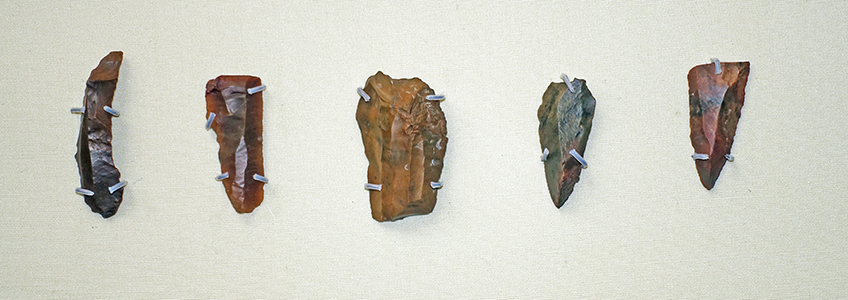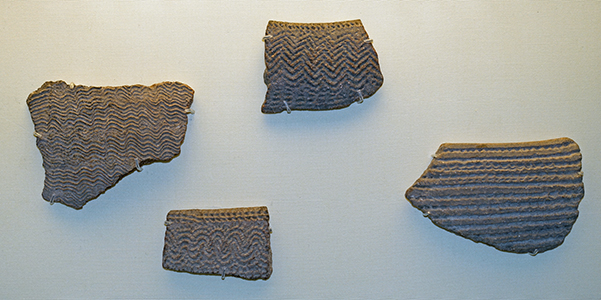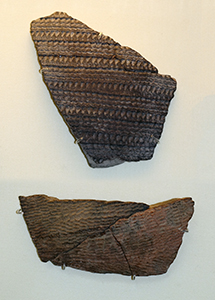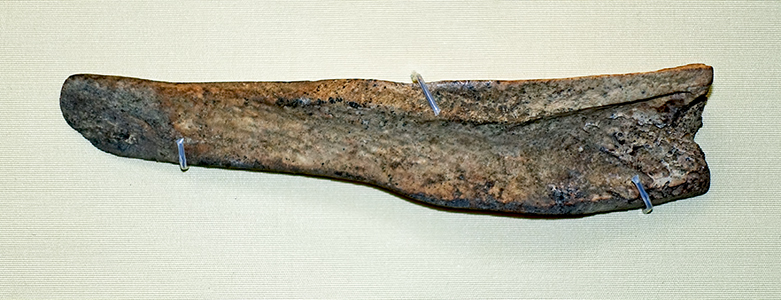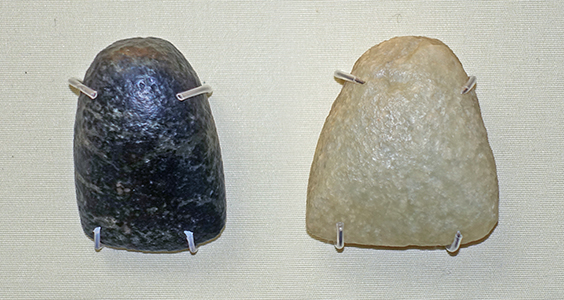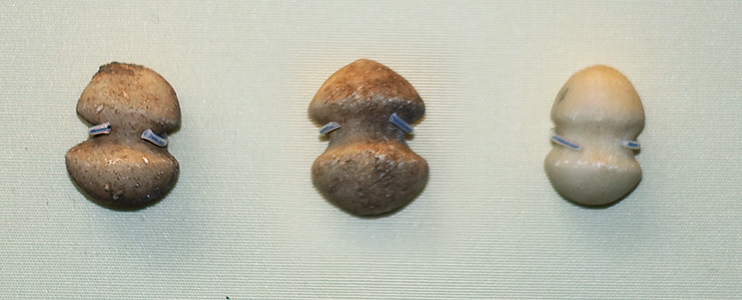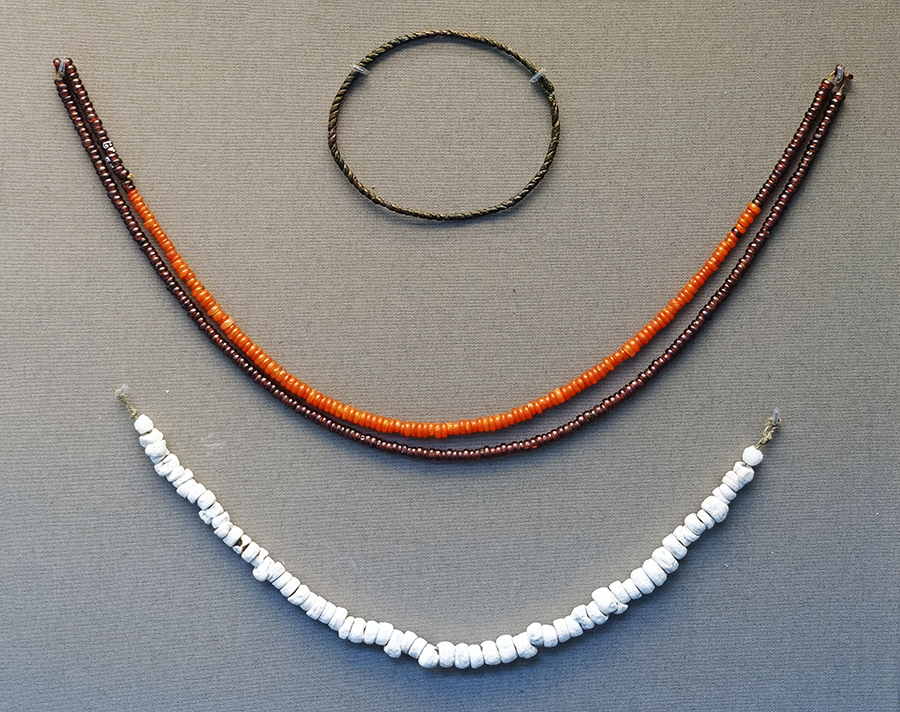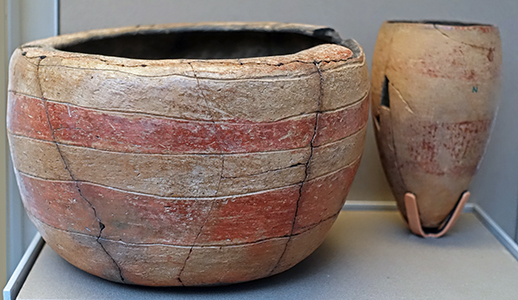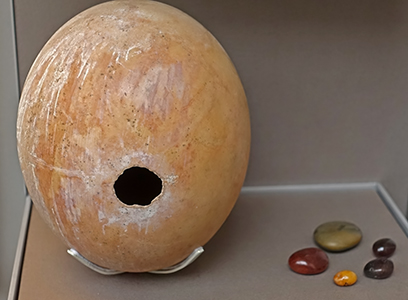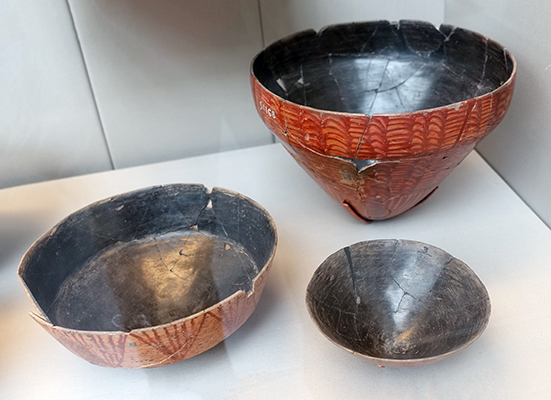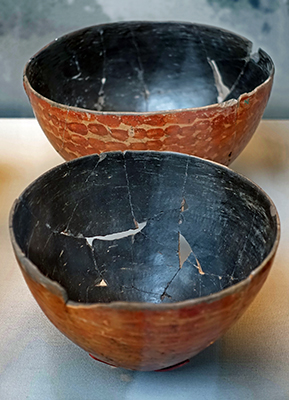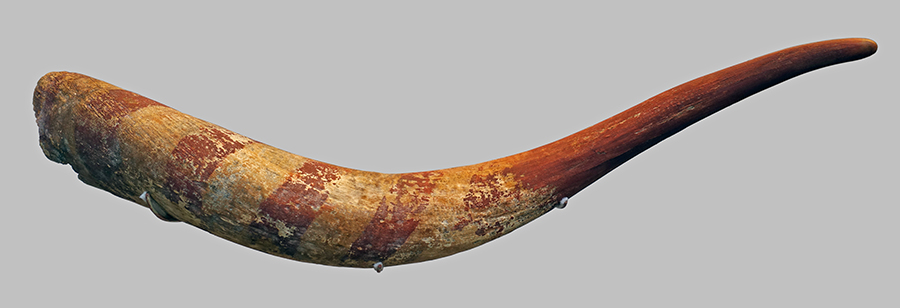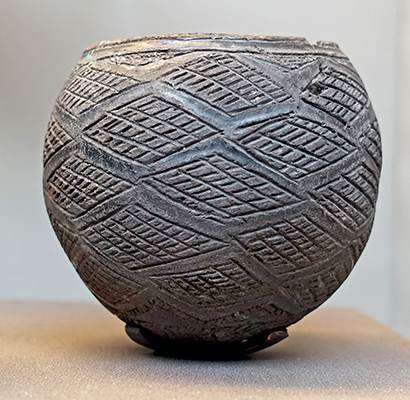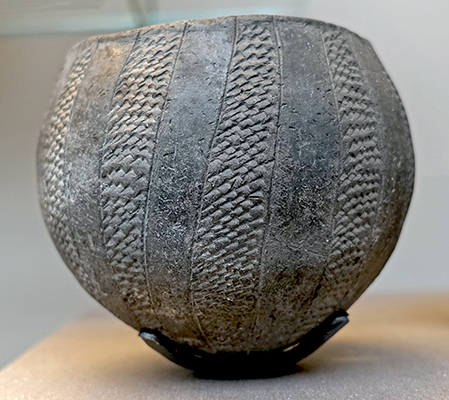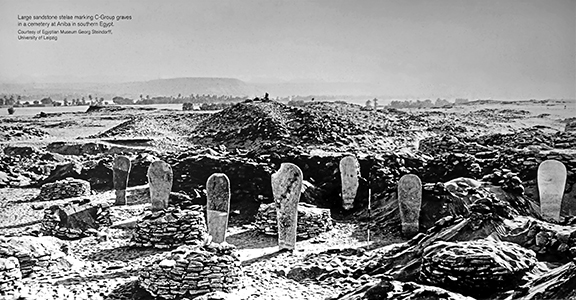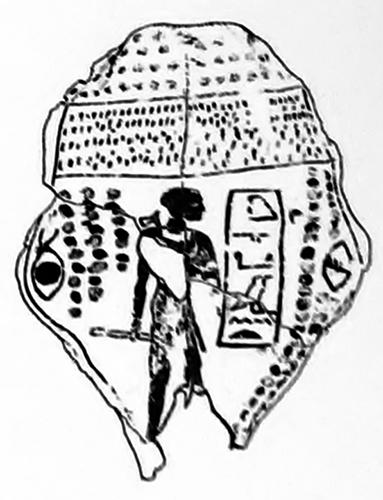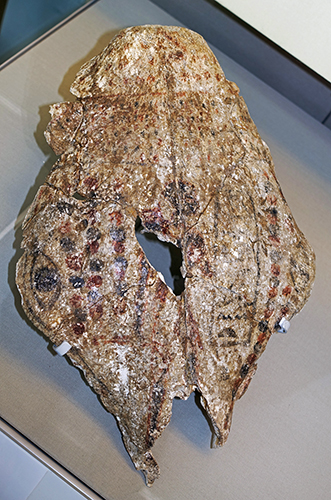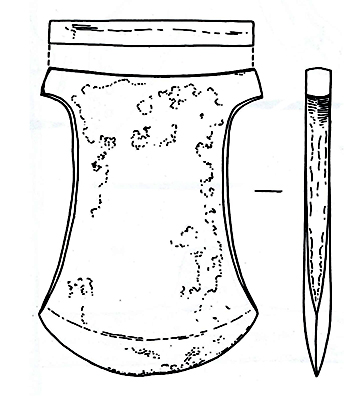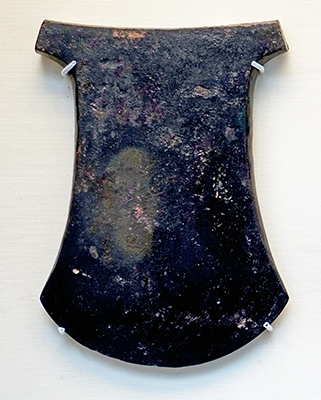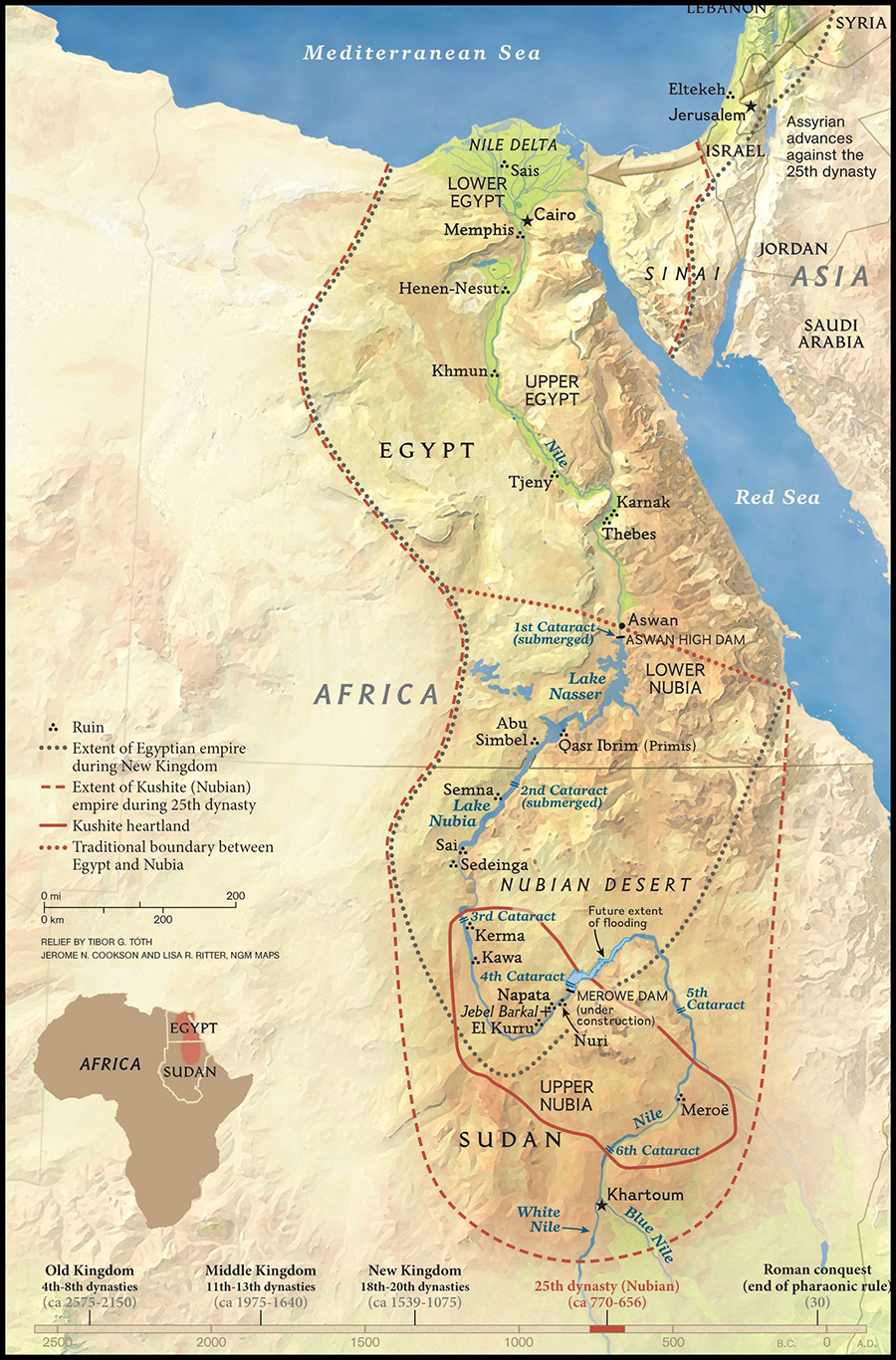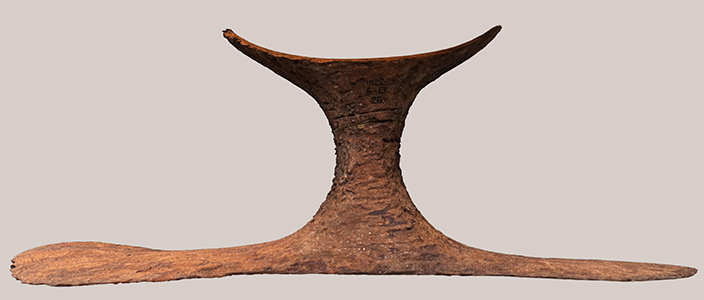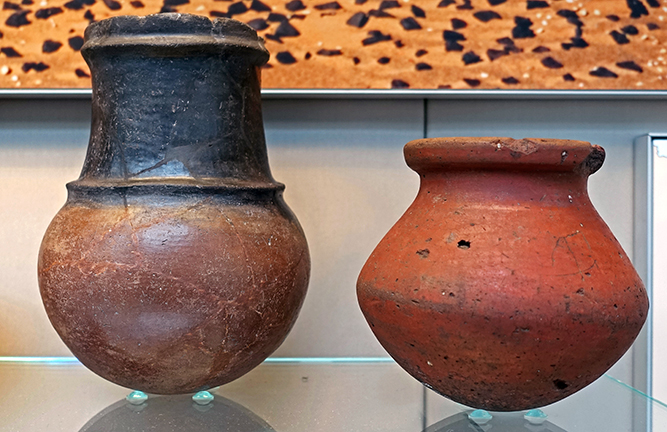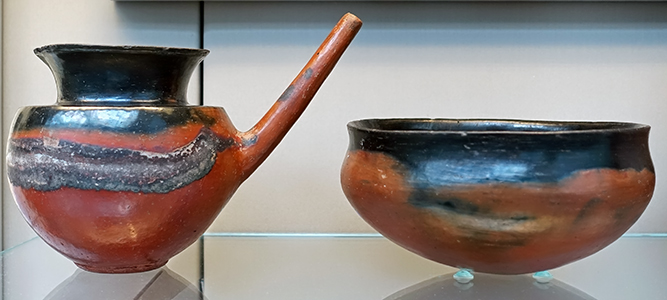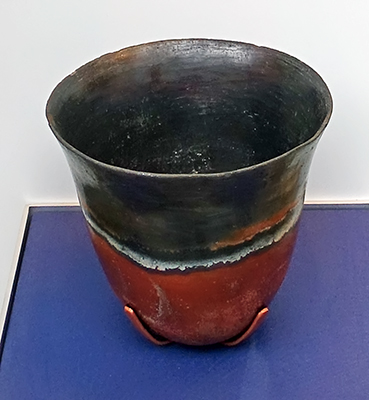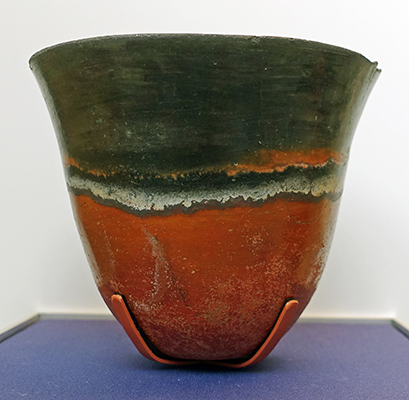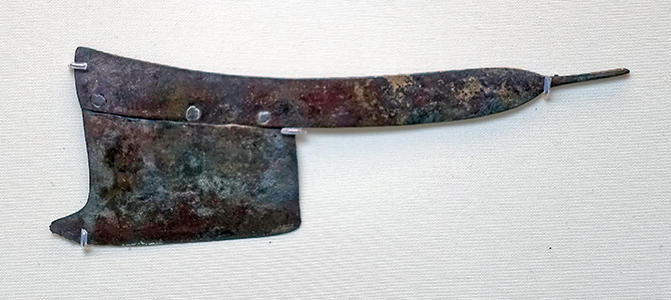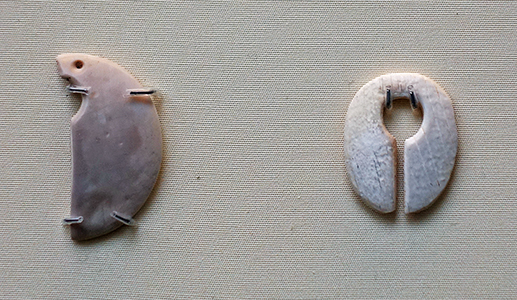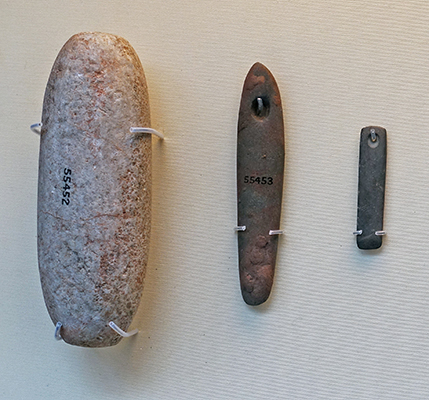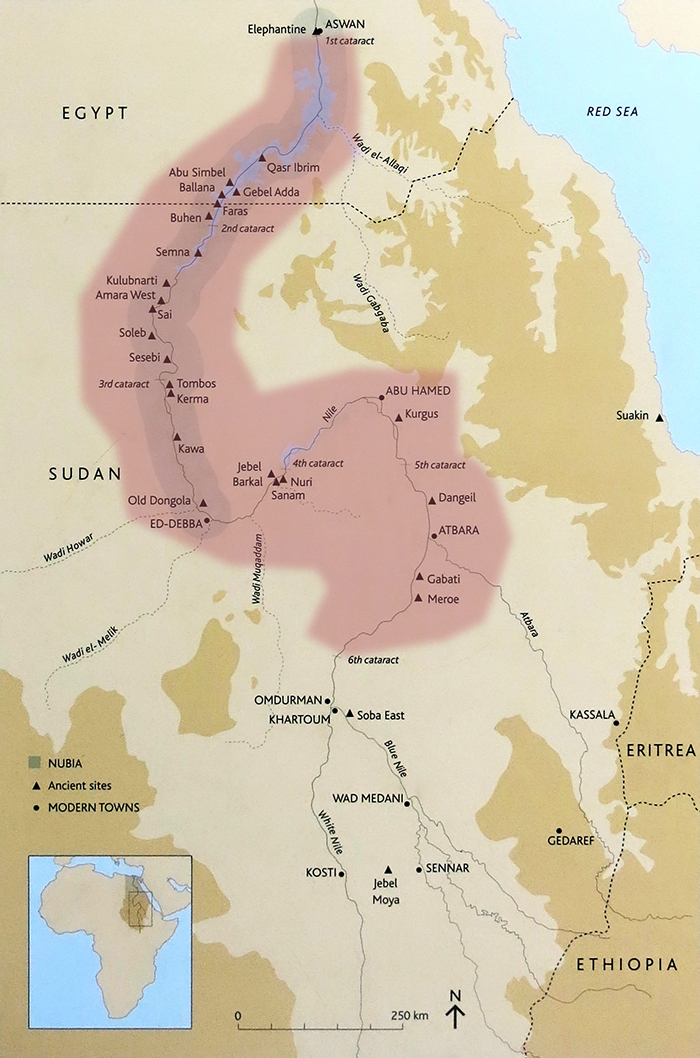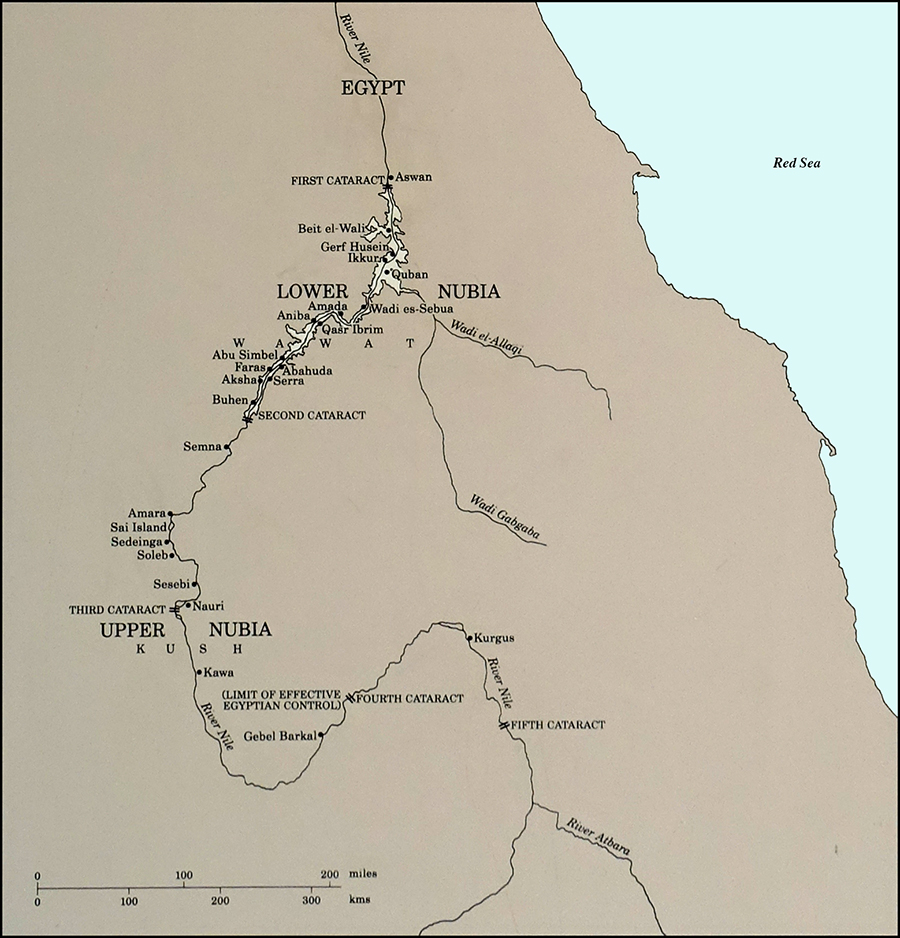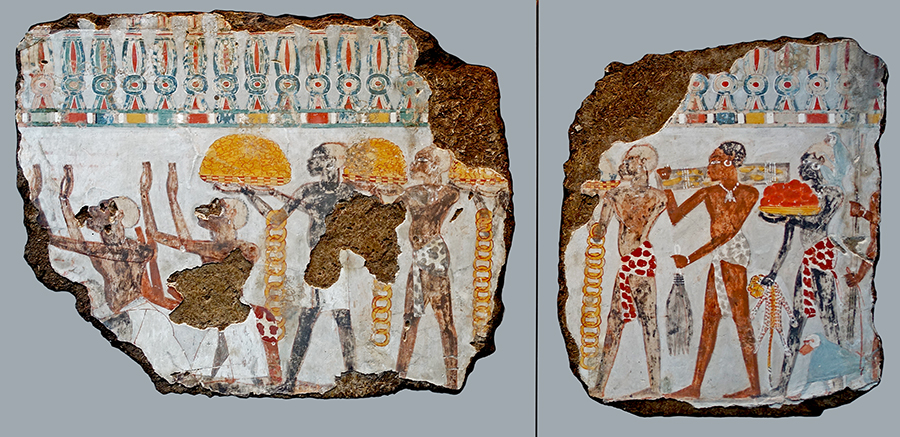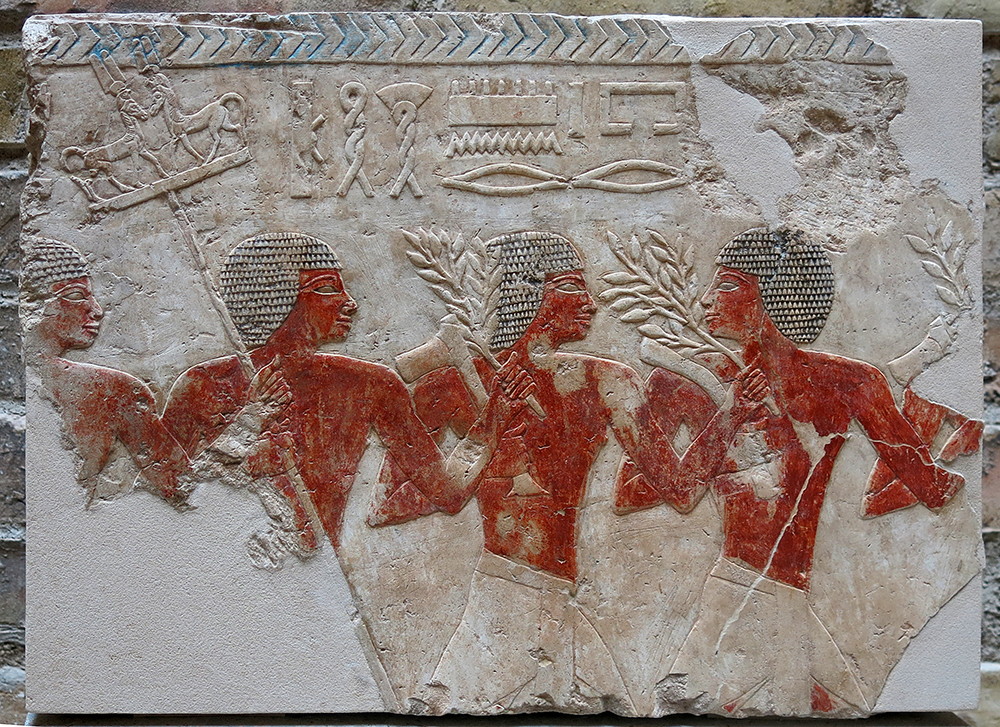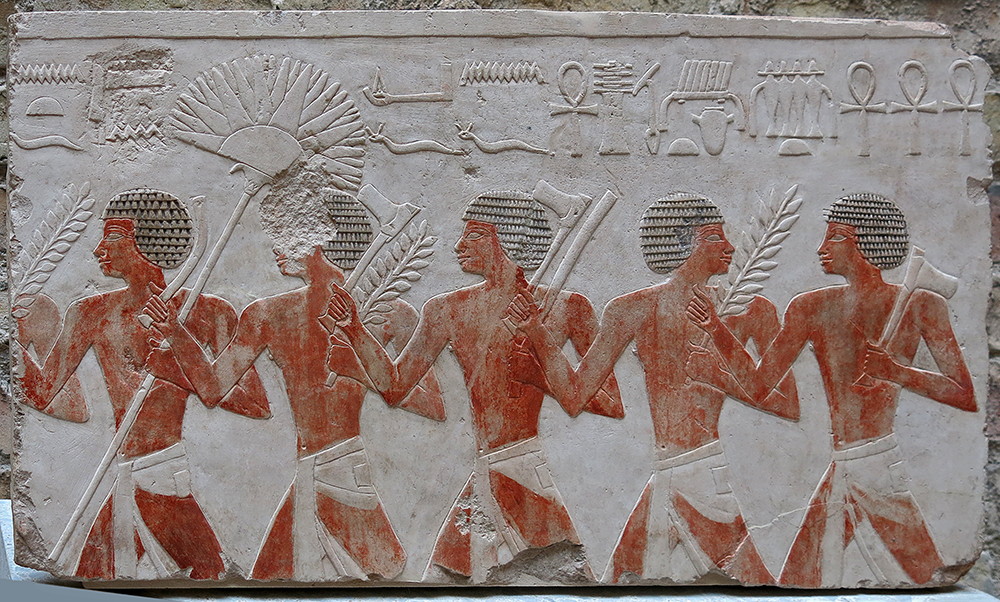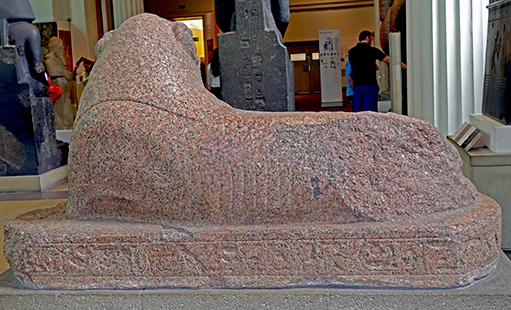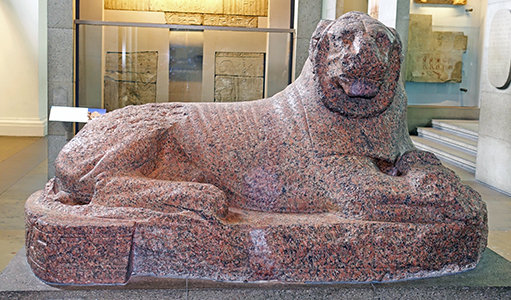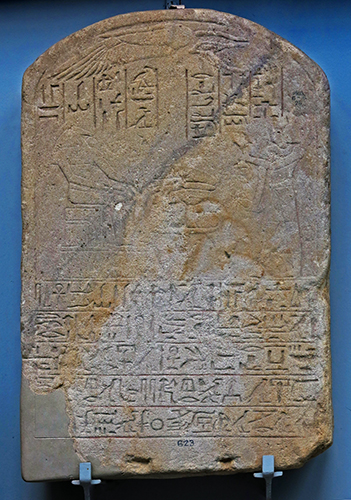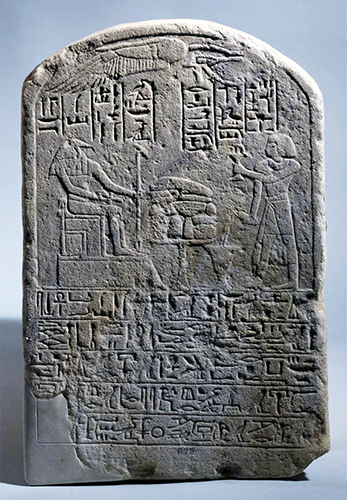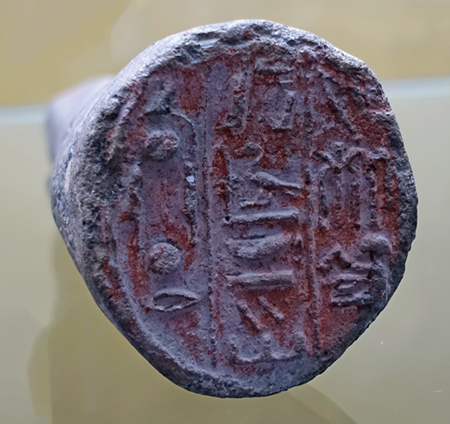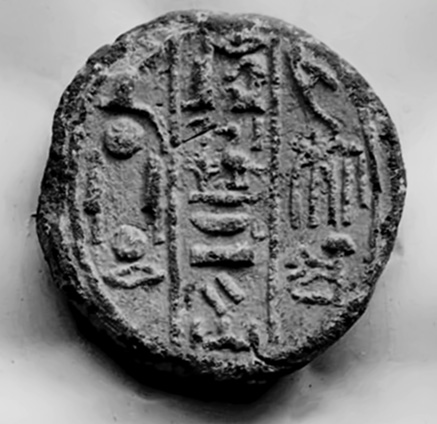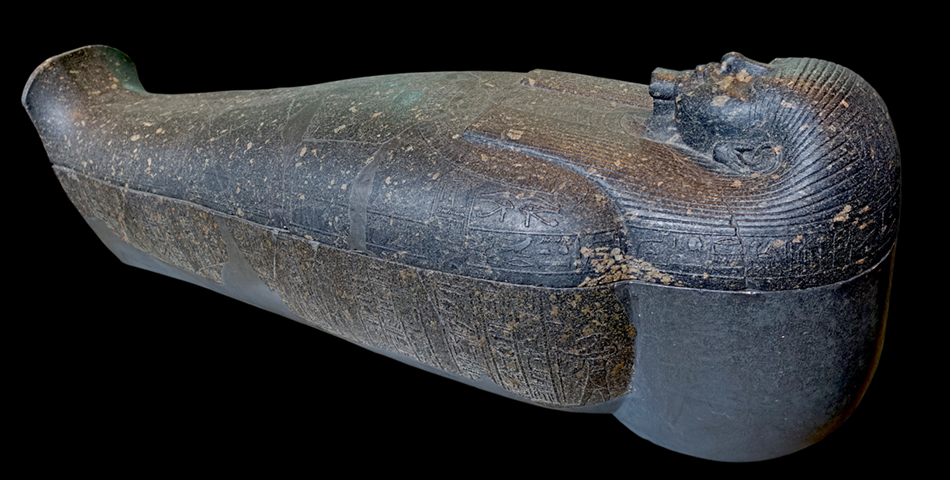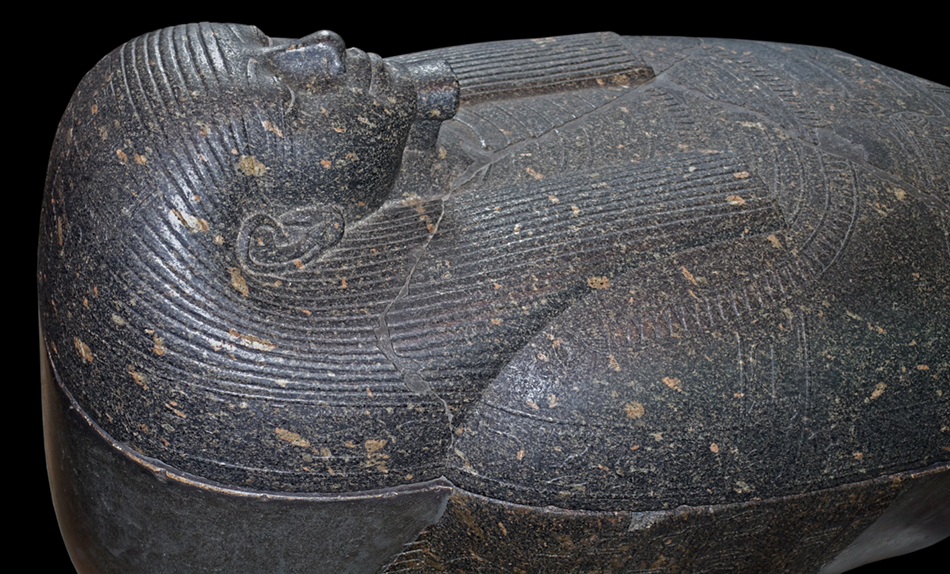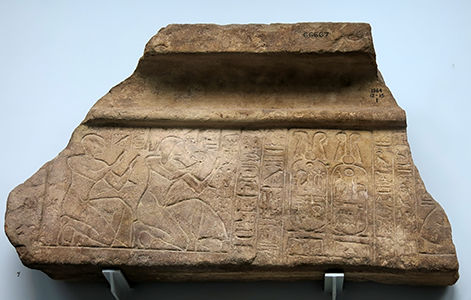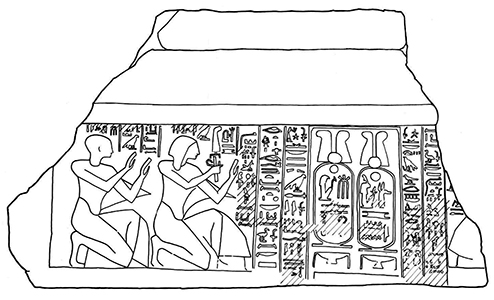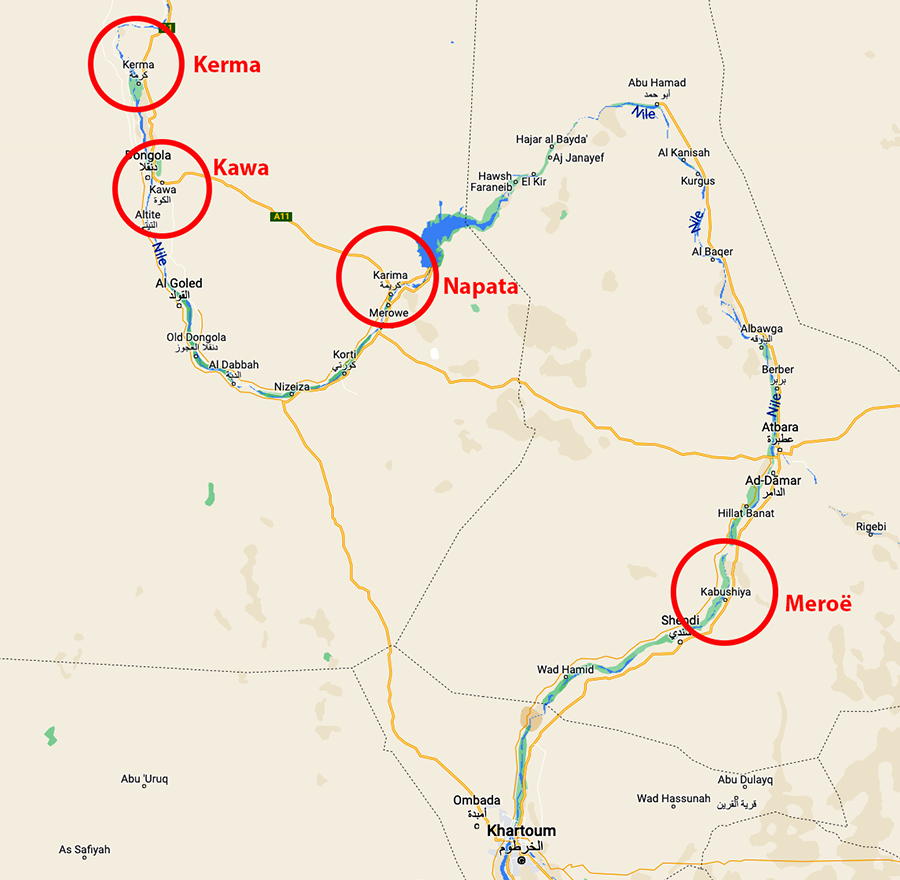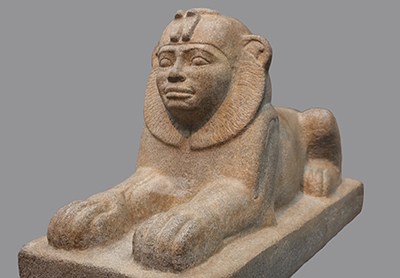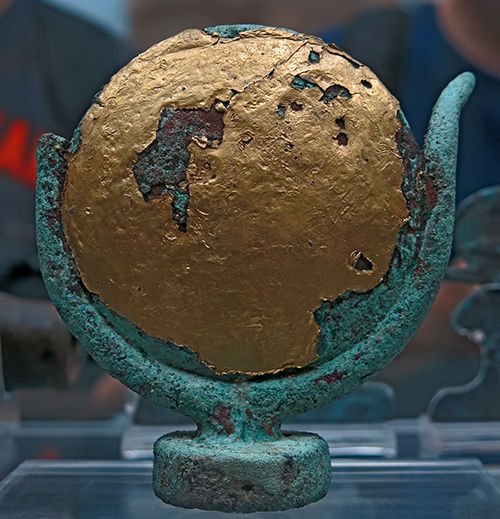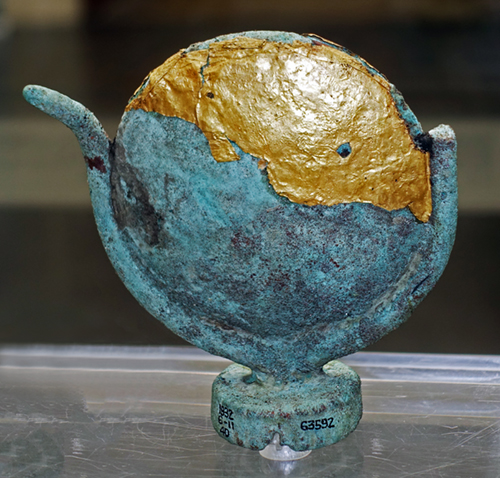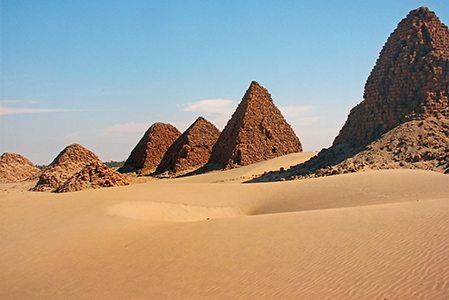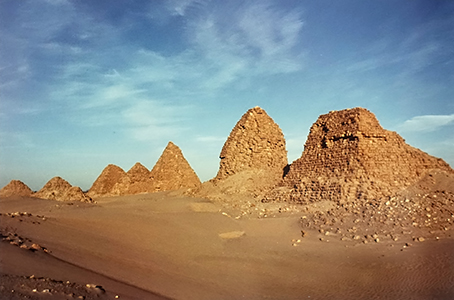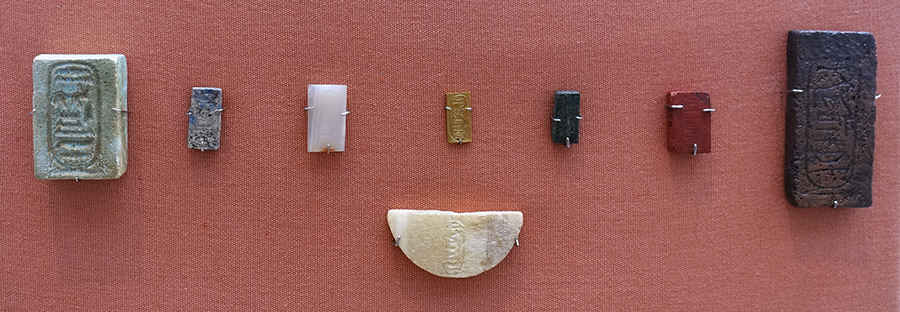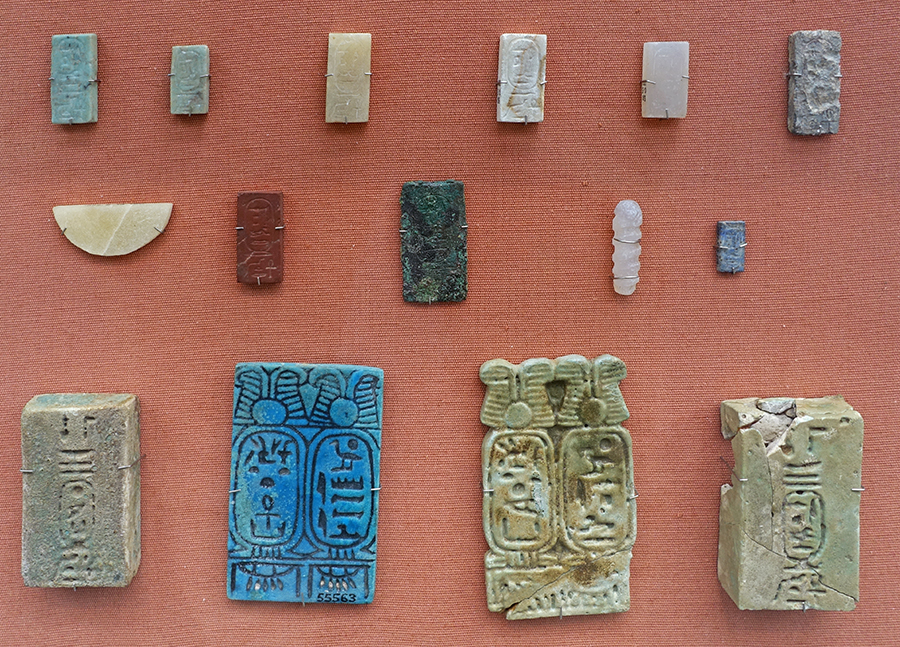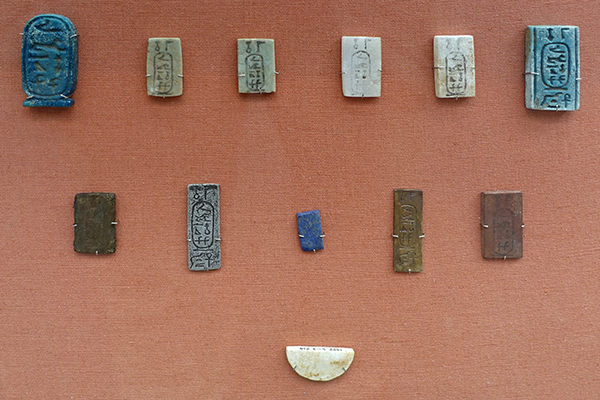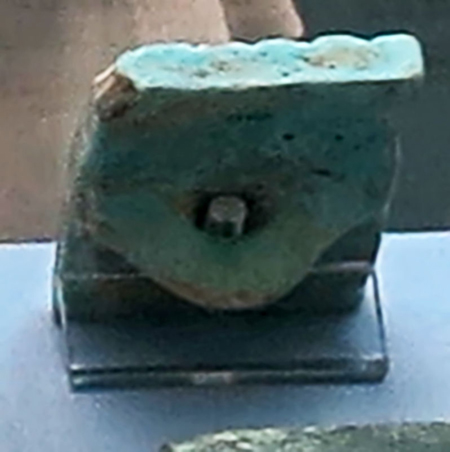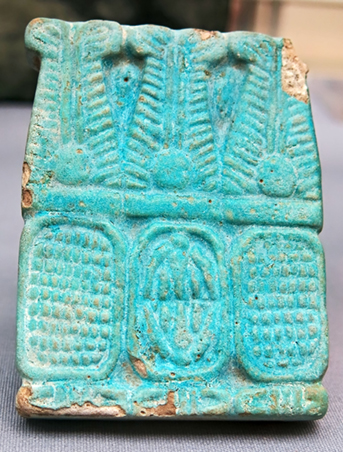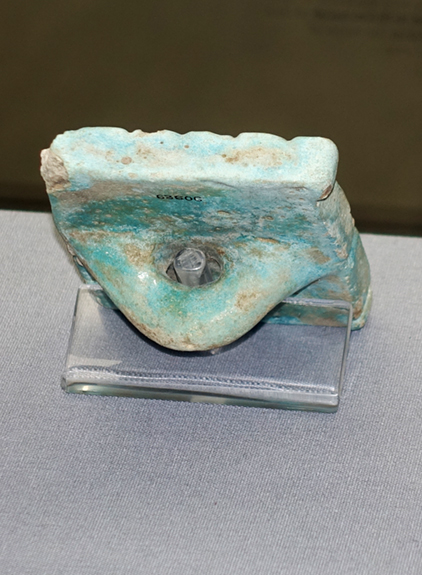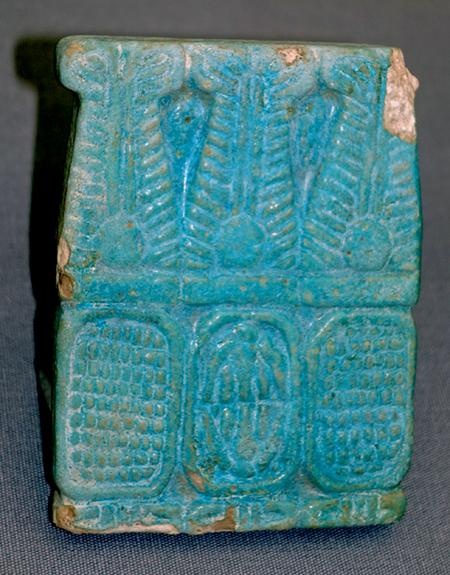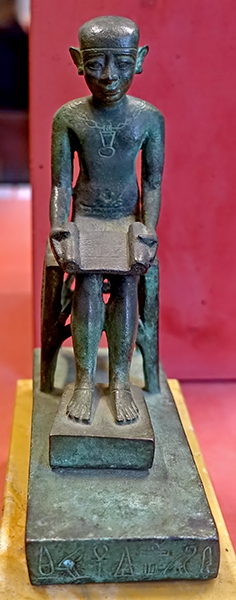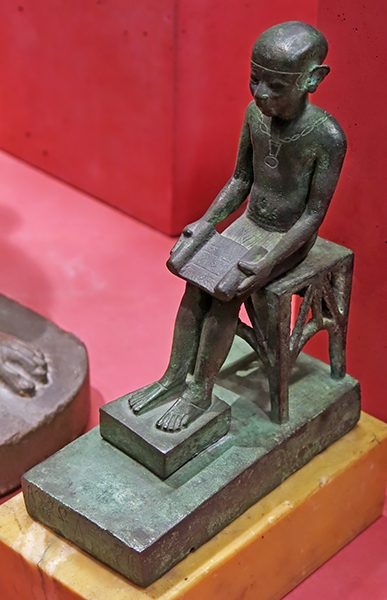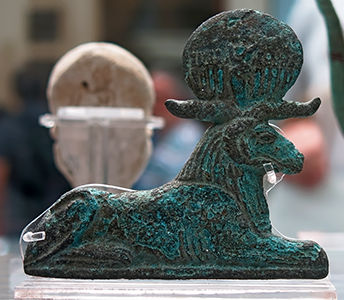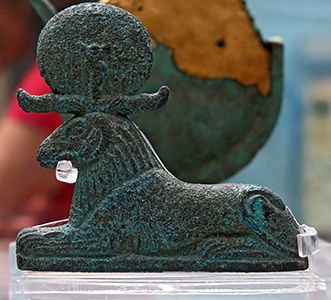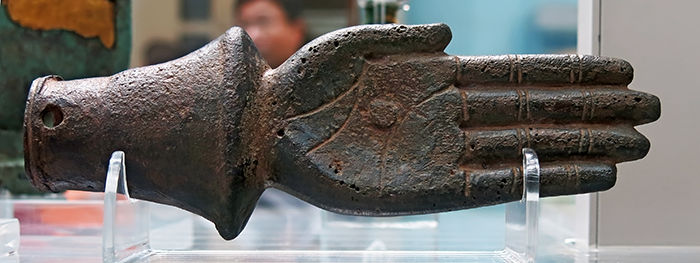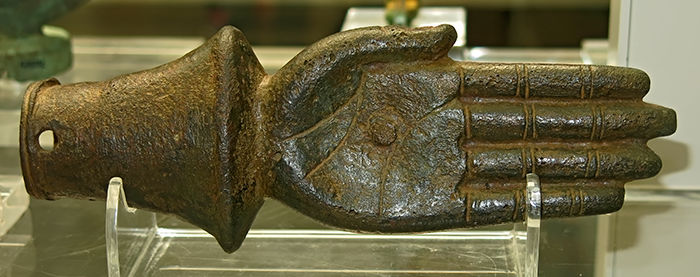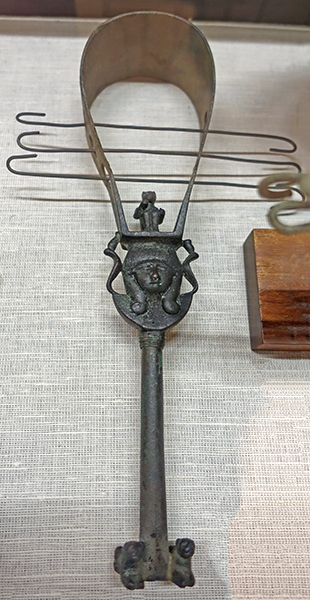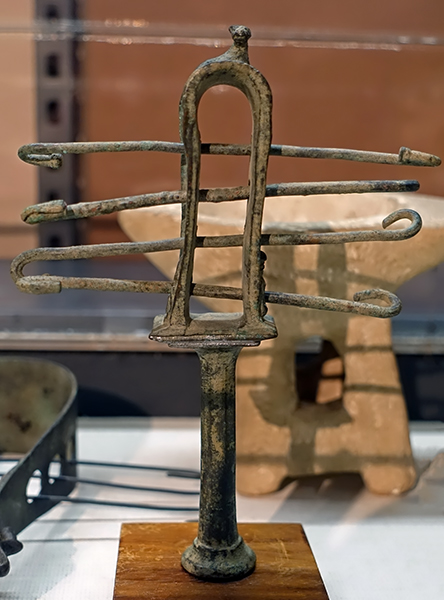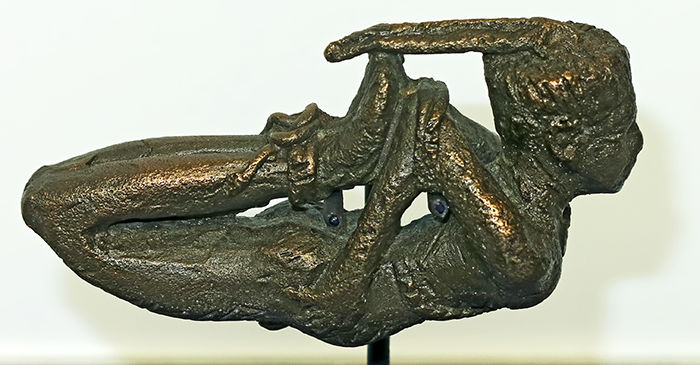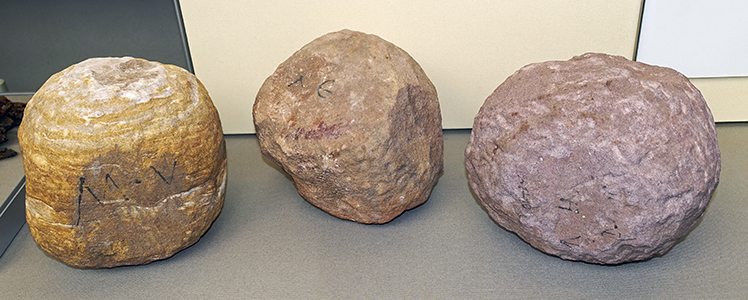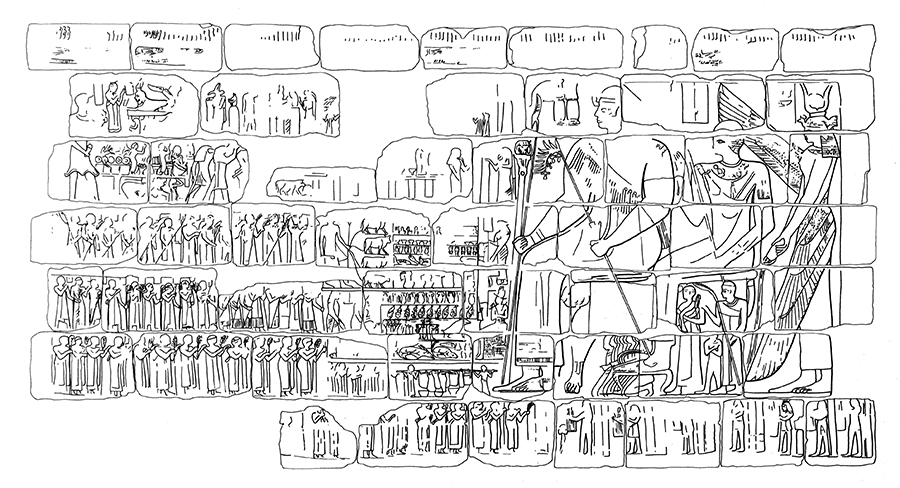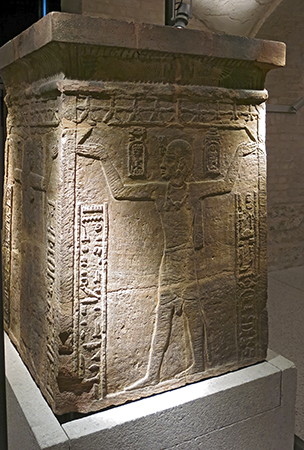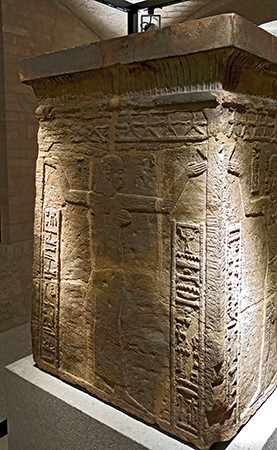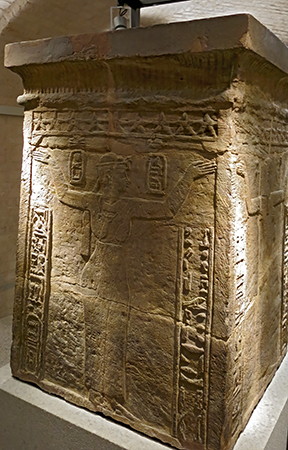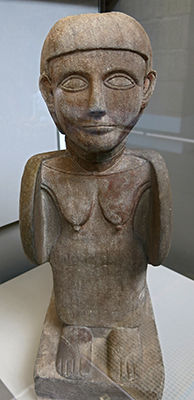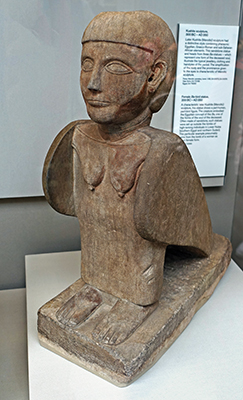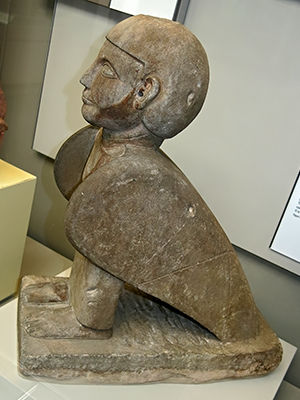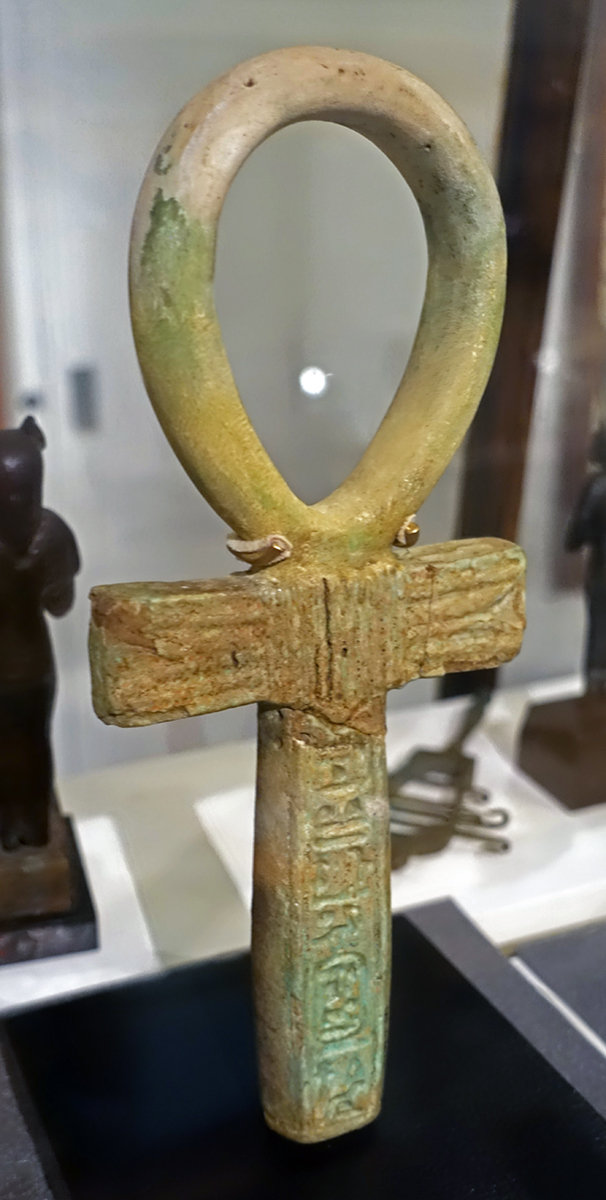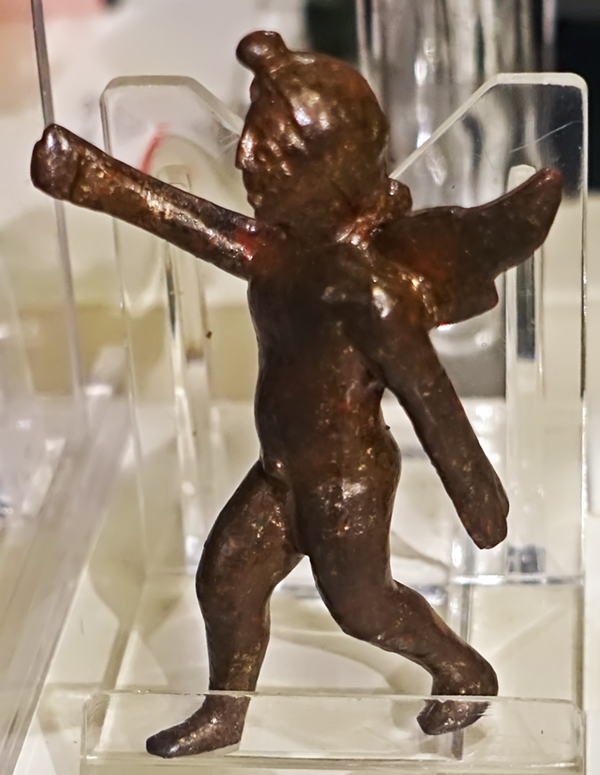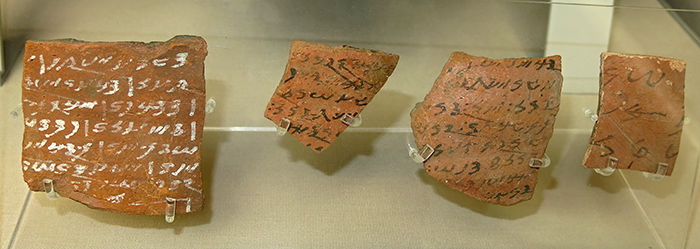Back to Don's Maps
 Back to Archaeological Sites
Back to Archaeological Sites
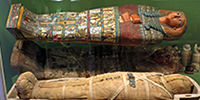 Back to Egypt Index Page
Back to Egypt Index Page
Nubia and the Kingdom of Kush
Egyptian Chronology
| Egyptian Chronology | ||
|---|---|---|
| Date | Culture | Duration |
| 11 000 BC | Jebel Sahaba | |
| Before 8 000 BC - Palaeolithic in Europe and Northern Asia | ||
| 8 000 BC - Nominal end of the Ice Age | ||
| 8 600 - 4 400 BC | Nabta Playa Neolithic | 4 200 years |
| 6 100 - 5 180 BC | Qarunian (formerly known as Fayum B) | 920 years |
| 5 200 - 4 200 BC | Fayum A | 1 000 years |
| 4 800 - 4 200 BC | Merimde | 600 years |
| 4 600 - 4 400 BC | El Omari | 200 years |
| 4 400 - 4 000 BC | Badarian | 400 years |
| 4 000 - 3 300 BC | Maadi | 700 years |
| 3 900 - 3 650 BC | Naqada I | 250 years |
| 3 650 - 3 300 BC | Naqada II | 350 years |
| 3 300 - 2 900 BC | Naqada III | 400 years |
| 3 100 - 2 670 BC | Early Dynastic | 430 years |
| 2 670 - 2 181 BC | Old Kingdom | 489 years |
| 2 181 - 2 025 BC | First Intermediate Period | 156 years |
| 2 025 - 1 700 BC | Middle Kingdom | 325 years |
| 1 700 - 1 550 BC | Second Intermediate Period | 150 years |
| 1 550 - 1 077 BC | New Kingdom | 473 years |
| 1 077 - 664 BC | Third Intermediate Period | 413 years |
| 664 - 332 BC | Late Period | 332 years |
| 525 - 404 BC | First Persian Period | 121 years |
| 404 - 343 BC | Late Dynastic Period | 61 years |
| 343 - 332 BC | Second Persian Period | 11 years |
| 332 - 305 BC | Macedonian Period | 27 years |
| 305 - 30 BC | Ptolemaic Period | 275 years |
| 30 BC - 395 AD | Roman Period | 425 years |
| 395 AD - 640 AD | Byzantine Period | 245 years |
| 640 AD - 1517 AD | Islamic Period | 877 years |
| 1517 AD - 1867 AD | Ottoman Period (French Occupation 1798-1801) |
350 years |
| 1867 AD - 1914 AD | Khedival Period | 47 years |
| 1914 AD - 1922 AD | Sultanate under Hussein Kamel, as a British Protectorate |
8 years |
| 1922 AD - 1953 AD | Monarchy | 31 years |
| 1953 AD - Present Day | Republic | |
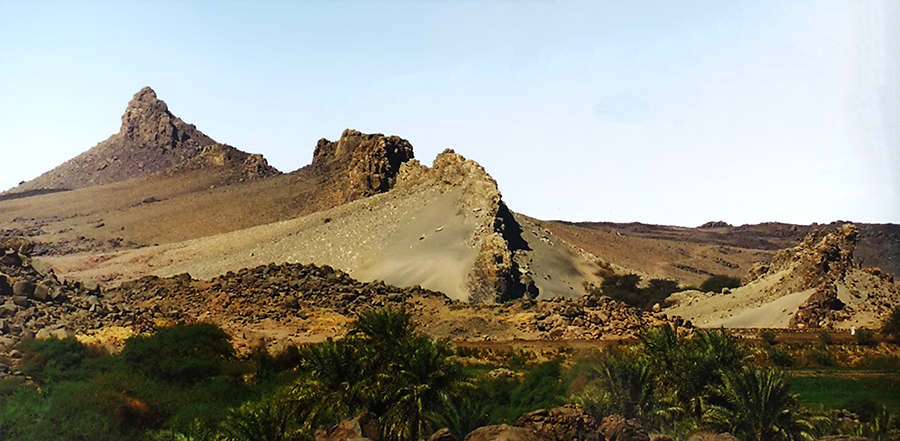
Prehistory
about 150 000 - 2 500 BC
There is evidence that people lived in the Fourth Cataract region at least 150 000 years ago into the middle Palaeolithic period. To these early settlers the abundance of hard rock provided material to make stone tools. By the Neolithic period, around 5 000 BC, there were many villages or seasonal camps in the region. Very few cemeteries from this period have been found in this area.Photo and text: Poster at the British Museum, http://www.britishmuseum.org/, © Trustees of the British Museum, CC BY-NC-SA 4.0
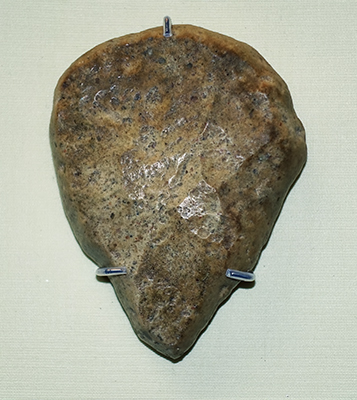
Quartzite handaxe, circa 100 000 BC
This Palaeolithic handaxe is the earliest man-made tool identified in Sudan. It was shaped by knapping. Next, the tip was carefully retouched to create a sharp edge. Early societies had easy access to the valuable resource of hard stones which they needed to make tools such as this.
Length 86 mm, thickness 67 mm.
Catalog: Quartzite, Sudan: Selima Oasis, P&E Museum number 1935,1109.208
Photo: Don Hitchcock 2018
Source and text: Original, card at the British Museum, http://www.britishmuseum.org/, © Trustees of the British Museum, CC BY-NC-SA 4.0
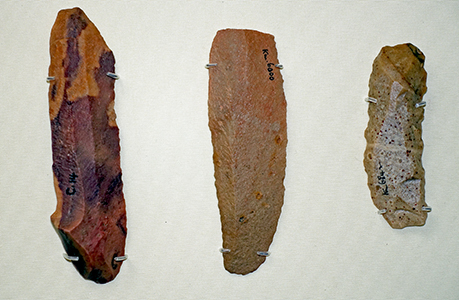
Quartzite blades, 30 000 BC - 20 000 BC
Sharp cutting edges made these blades an important part of the toolkit used by the nomadic peoples of Sudan.
1935,1109.100: Length 120 mm, thickness 11 mm, width 33 mm.
1935,1109.26: Length 106 mm, thickness 7 mm, width 34 mm.
1935,1109.50: Length 79 mm, thickness 14 mm, width 25 mm.
Catalog: Selima Oasis, P&E Museum number 1935,1109.26, 50, 100
Photo: Don Hitchcock 2018
Source and text: Original, card at the British Museum, http://www.britishmuseum.org/, © Trustees of the British Museum, CC BY-NC-SA 4.0
Quartzite blades, 30 000 BC - 20 000 BC
Sharp cutting edges made these blades an important part of the toolkit used by the nomadic peoples of Sudan.
1886,1116.2: Chert flake; marbled and ochreous.
Palaeolithic, Wadi Halfa.
Length 36 mm, thickness 9 mm, width 21 mm.
1886,1116.13: Chert flake; yellow-grey-brown; ridged and pointed.
Palaeolithic, Wadi Halfa.
Length 31 millimetres thickness 6 mm, width 12 mm.
1886,1116.24: Chert flake.
Palaeolithic, Wadi Halfa.
Length 31 mm, thickness 4 mm, width 15 mm.
1886,1116.25: Chert flake.
Palaeolithic, Wadi Halfa.
Length 40 mm, thickness 6 mm, width 10 mm
1886,1116.30: Flint flake.
Palaeolithic, Wadi Halfa.
Length 33 mm, thickness 3 mm, width 13 mm.
Photo: Don Hitchcock 2018
Source and text: Original, card at the British Museum, http://www.britishmuseum.org/, © Trustees of the British Museum, CC BY-NC-SA 4.0
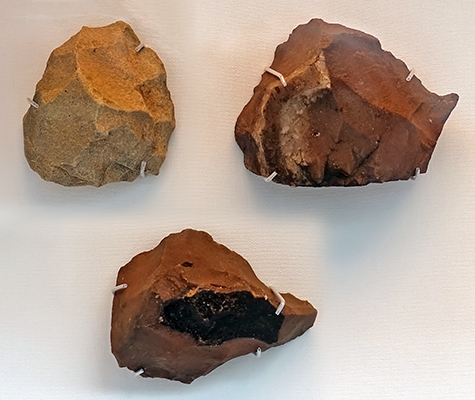
Palaeolithic cores from which tools have been struck off.
Catalog: EA79561-3
Photo: Don Hitchcock 2018
Source and text: Original, card at the British Museum, http://www.britishmuseum.org/, © Trustees of the British Museum, CC BY-NC-SA 4.0
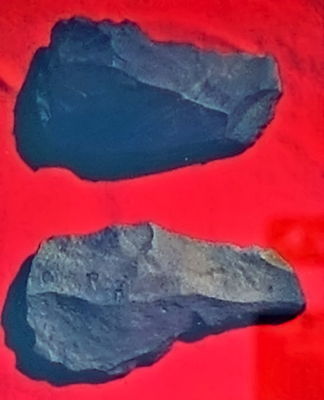
Middle Palaeolithic tools.
Photo and text: Poster at the British Museum, http://www.britishmuseum.org/, © Trustees of the British Museum, CC BY-NC-SA 4.0
Rephotography: Don Hitchcock 2018
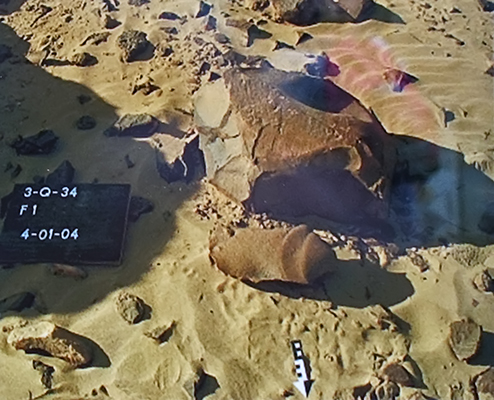
Boulder with extracted flakes in a Palaeolithic quarry.
Photo and text: Poster at the British Museum, http://www.britishmuseum.org/, © Trustees of the British Museum, CC BY-NC-SA 4.0
Rephotography: Don Hitchcock 2018
Fourth Cataract rock art
The Fourth Nile Cataract area has a rich and diverse cultural history that was largely unknown until recent archaeological surveys and excavations. Previously, this area was thought of as poor and inhospitable. The archaeology project discovered rock art, settlements, fortresses, cemeteries and thousands of artefacts, covering at least 150,000 years of human history. These finds made it dear that the region had many advantages for people living there. Rich in natural resources such as gold and stone for tools, the area's many river channels also offered a good environment for agriculture and fishing.
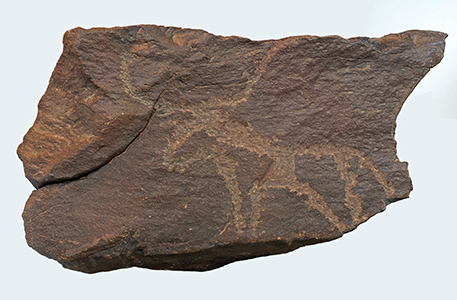
This petroglyph of a long-horned cow has been made by chipping, or pecking away, at the surface of the rock using a stone tool. Rock art like this has been made in the Fourth Nile Cataract region of Sudan for many thousands of years, with many pieces dating back to the Kerma period (2500-1450 BC). Cattle, like the cow seen here, are a very common motif in the rock art of this area.
Length 350 mm, thickness 170 mm, width 360 mm, weight 18 kg.
Catalog: Fourth Cataract, EA80320
Photo: Don Hitchcock 2018
Source and text: Original, card at the British Museum, http://www.britishmuseum.org/, © Trustees of the British Museum, CC BY-NC-SA 4.0
Prehistoric Sudan
The first settlers arrived in northern Sudan about 300 000 years ago. By around 8 500 BC people had started to produce pottery. Later, between 7 000 BC and 5 000 BC, they began to practise agriculture and animal husbandry, at roughly the same time as similar developments in Egypt.In Wawat, south of the Egyptian border, a new culture emerged about 3 700 BC and flourished until 2 800 BC. Named 'A-Group' by archaeologists, its economy was based on agriculture and its craftspeople produced distinctive 'eggshell' pottery. They also made mace heads, weapons that by then had come to symbolise power in both ancient Sudan and Egypt.
Mesolithic culture
Crescent shaped blades, circa 5 000 BC.
Crescent shaped flakes, or lunates, are one of the most characteristic tools of the Mesolithic period, circa 8 000 BC - 5 000 BC. When mounted onto wooden shafts, they were used as weapons such as arrowheads, or as knife or sickle blades.
Catalog: Khartoum, EA72514-19
Photo: Don Hitchcock 2018
Source and text: Original, card at the British Museum, http://www.britishmuseum.org/, © Trustees of the British Museum, CC BY-NC-SA 4.0
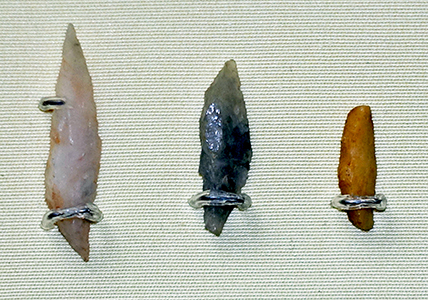
Backed blades, circa 5 000 BC.
EA72511: Backed blade, stone tool, Khartoum (city)
EA72512: Backed blade, stone tool, Khartoum (city)
EA72513: Backed blade, stone tool, Khartoum (city)
Photo: Don Hitchcock 2018
Source and text: Original, card at the British Museum, http://www.britishmuseum.org/, © Trustees of the British Museum, CC BY-NC-SA 4.0
Mesolithic sherds, 8 000 BC - 5 000 BC
and Neolithic sherds, 5 000 BC - 3 000 BC
From the earliest ceramics made in Sudan, these pottery sherds are handmade and decorated with a variety of patterns. The 'wavy line' pottery is Mesolithic, the 'dotted wavy line' pottery is Neolithic. To make the designs a catfish spine or grooved comb was pressed into the wet clay.
EA65570: Fragment of hand-made pottery vessel; wavy-line decoration. Local manufacture.
Mesolithic (Early Khartoum), 7 000 BC, Findspot: Khartoum (city)
Catalog: Khartoum, EA65570
Catalog: EA71809-10, EA72506, Pottery sherds, Jebel Moya (Nubia)
EA82661: Nofalab, fragment of hand-made pottery vessel; with impressed decoration. Rocker-stamped triangles and 'v's.
Khartoum Neolithic, 4 000 BC - 3 000 BC, findspot: Nofolab,Khartoum (district)
EA82662: Fragment of hand-made pottery vessel; with short impressed line decoration created by rocker-stamp. Mesolithic, Khartoum Variant, findspot Wadi Halfa
Photo: Don Hitchcock 2018
Source and text: Original, card at the British Museum, http://www.britishmuseum.org/, © Trustees of the British Museum, CC BY-NC-SA 4.0
( note that I have been unable to identify specific sherds, since they are not differentiated, either on the museum card, or in the online catalog - Don )
Neolithic culture
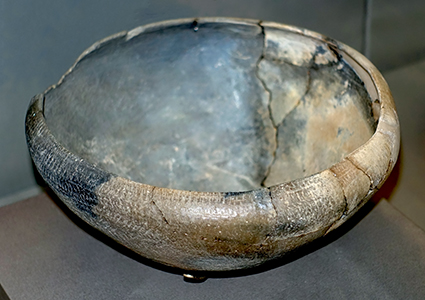
Neolithic bowl, 5 000 BC - 3 000 BC.
This bowl is similar to the eggshell-ware vessels of the A-Group culture, but although broadly contemporary, it is from a site several hundred kilometres away.
The incised pattern is known as 'wolf's tooth' and remained popular over more than five millenia from the Neolithic right into the medieval period.
Bowl in a pale grey fabric with thin walls and a sharply inturned rim. Diameter 200 mm, height 114 mm.
Catalog: Northern Dongola Reach, Site F1, EA79611
Photo: Don Hitchcock 2018
Source and text: Original, card at the British Museum, http://www.britishmuseum.org/, © Trustees of the British Museum, CC BY-NC-SA 4.0
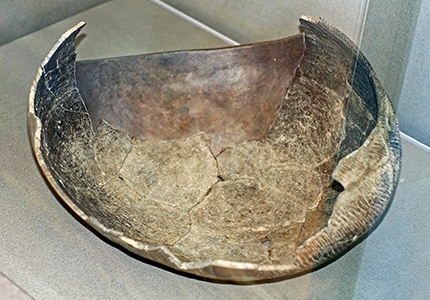
Neolithic bowl, 5 000 BC - 3 000 BC.
This handmade vessel is decorated with a 'wolf's tooth' motif produced by impressing a rocker stamp into the wet clay before firing.
Bowl in a pale grey fabric with thin walls. Height 126 mm.
Catalog: Northern Dongola Reach, Site L14, EA79612
Photo: Don Hitchcock 2018
Source and text: Original, card at the British Museum, http://www.britishmuseum.org/, © Trustees of the British Museum, CC BY-NC-SA 4.0
Spatula, 5 000 BC - 3 000 BC.
Perhaps used in preparing food, this spatula was made from the leg bone of a sheep, which had been split in half lengthways.
Length 131 mm, thickness 8 mm, width 14 mm at the wide end.
Catalog: Northern Dongola Reach, Site L14, EA79615
Photo: Don Hitchcock 2018
Source and text: Original, card at the British Museum, http://www.britishmuseum.org/, © Trustees of the British Museum, CC BY-NC-SA 4.0
Ritual axes, 5 000 BC - 3 000 BC.
Teardrop-shaped axes such as these may have had a ritual function, as they are too small for practical use. They were made from a range of different stones, including serpentine, quartz and chert.
Length 131 mm, thickness 8 mm, width 14 mm at the wide end.
EA79614: Stone axe, serpentinite? Type 1b, Northern Dongola Reach.
Height 46 mm, thickness 24 mm, width 32 mm.
EA79622: Polished stone axe, green quartz/chert? Type 1b.
Height 46 mm, thickness 23 mm, width 43 mm.
Catalog: Northern Dongola Reach, Site 135, EA79614, Site R45, EA79622
Photo: Don Hitchcock 2018
Source and text: Original, card at the British Museum, http://www.britishmuseum.org/, © Trustees of the British Museum, CC BY-NC-SA 4.0
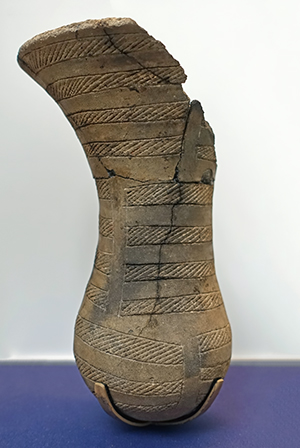
Beaker, 5 000 BC - 3 000 BC.
Neolithic beakers like this are found in graves and might have been used to pour funerary libations (drink-offerings). Made by hand coiling clay, they were often decorated with distinctive geometric patterns.
Caliciform (shaped like a calyx or bell) beaker with incised horizontal bands infilled with oblique dotted lines.
Type series CA3.2, D14.1, height 176 mm.
Catalog: Northern Dongola Reach, Site H2, EA79613
Photo: Don Hitchcock 2018
Source and text: Original, card at the British Museum, http://www.britishmuseum.org/, © Trustees of the British Museum, CC BY-NC-SA 4.0
Neolithic ivory plugs, 4 500 BC.
Made of ivory, these plugs were probably worn as ear, nose or lip ornaments.
Catalog: Southern Atbai Region, Eastern Sudan, from the excavations of the Khartoum/Southern Methodist University, EA82663-5
EA82663, EA82664, EA82665 : White quartzite (sic) lip, ear or nose plug, cylindrical in shape with bulbous rounded ends and a deep groove around the middle.
Photo: Don Hitchcock 2018
Source and text: Original, card at the British Museum, http://www.britishmuseum.org/, © Trustees of the British Museum, CC BY-NC-SA 4.0
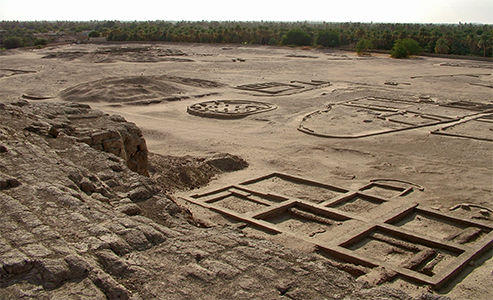
Kerma was the capital city of the Kerma Culture, which was located in present-day Sudan at least 5500 years ago. Kerma is one of the largest archaeological sites in ancient Nubia. It has produced decades of extensive excavations and research, including thousands of graves and tombs and the residential quarters of the main city surrounding the Western/Lower Deffufa.
Around 3 000 BC, a cultural tradition began around Kerma. It was a large urban centre that was built around a large adobe temple known as the Western Deffufa.
Photo: Lassi via Wikipedia
Permission: Creative Commons Attribution-Share Alike 4.0 International, 3.0 Unported, 2.5 Generic, 2.0 Generic and 1.0 Generic license
Text: Adapted from Wikipedia
A-Group Culture
'Nubia' designates an area of southern Egypt and northern Sudan. The southern boundary of the area changed over time, but in the pharaonic period this usually lay between the Fourth and Fifth Cataracts of the Nile.
The term 'A-Group' refers to an indigenous Nubian culture roughly contemporary with the Egyptian Predynastic cultures Naqada I-III to the First Dynasty, circa 4 000 BC - 3 000 BC. Most of the remains come from cemeteries, from just north of Aswan to south of the Second Nile Cataract. A non-literate culture, it had a strongly Nubian identity, and perhaps numbered 10 000 persons at most. It probably played an important role as an intermediary between the developing Egyptian cultures and the peoples controlling various sources of raw materials to the south. It maintained close contacts with its northern neighbours, and significant amounts of Egyptian ceramics are found in all its sub-phases, particularly in that contemporary with the First Dynasty. At the very end of the Egyptian Predynastic Period, the culture went into decline, probably largely as a result of Egyptian raids that destroyed contemporary political structures. Inscriptions have been found in the region of the Second Cataract which might belong to late Predynastic Egyptian kings.
Faras lies about 40 km to the north of the Second Cataract, and was first excavated by an expedition from Oxford in 1910-12.
Text above http://www.britishmuseum.org/, © Trustees of the British Museum, CC BY-NC-SA 4.0
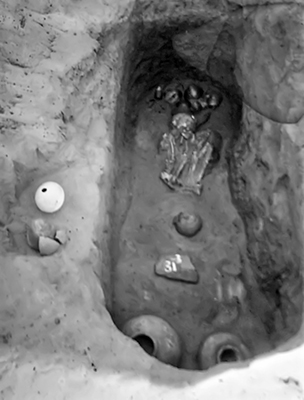
The A-Group Tomb 31 at Faras, circa 3 000 BC
Found during excavations in 1910-1912, the objects below accompanied an individual who was buried in a cemetery at Faras, about 40 km north of the Nile's Second Cataract. Unfortunately the person's age and sex are unknown, but the amount and quality of possessions suggest that the grave belonged to a relatively wealthy member of the A-Group culture of northern Sudan.
Photo and text: poster at the British Museum, http://www.britishmuseum.org/, © Trustees of the British Museum, CC BY-NC-SA 4.0
Reproduced on the poster with permission of the Griffith Institute, University of Oxford
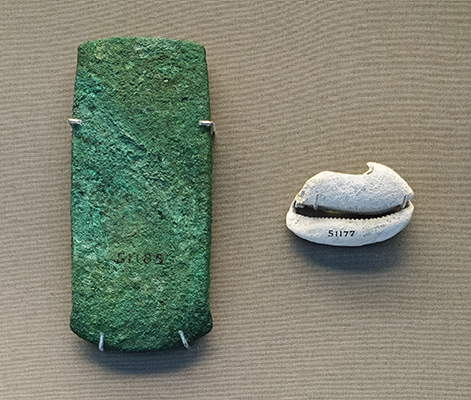
A-Group Culture artefacts from Tomb 31 at Faras
Axe and cowrie shell, 3 700 BC - 2 800 BC.
People of the A-Group culture, south of the Egyptian border, traded raw materials with their northern neighbour in return for finished goods, such as weapons and jewellery. This Egyptian copper axe preserves traces of basketwork stuck to its surface. The cowrie shell was probably used as a pendant, and the Red Sea was its nearest possible source.
EA51185: Heavy copper axe-blade, with straight sides and a slightly concave butt. The cutting edge has been hammered from both faces of the blade, although one side appears to have been worked to a greater extent than the other. Traces of basketwork adhere to the corroded surfaces.
Late Predynastic, Faras. Arsenical copper, hammered.
Length 123 mm, thickness 12 mm, width (butt) 50 mm, width (cutting edge) 57 mm, weight 541 gm.
This type of blade, much narrower than the usual rectangular axe of the First Dynasty, is also found in Egypt.
EA51177: A large white cowrie, genus Cypraea: probably worn as a pendant. The shell is rather decayed on the surface and a small piece of one side is missing.
A-Group Culture Faras (Nubia)
Length 48 mm, width 27 mm.
Catalog: Faras, Cemetery C, Grave 10, EA51185, A-Group Cemetery, Grave 31, EA51177
Photo: Don Hitchcock 2018
Source and text: Original, card at the British Museum, http://www.britishmuseum.org/, © Trustees of the British Museum, CC BY-NC-SA 4.0
A-Group Culture artefacts from Tomb 31 at Faras
Jewellery, 3 700 BC - 2 800 BC.
One person, buried with the pots below, wore all this jewellery. A necklace of carnelian and garnet beads was complemented by a copper bracelet made from two strands of twisted wire, worn on the right wrist. An ostrich eggshell bead anklet adorned the left leg, and the cowrie shell in the previous image above was placed on the chest.
EA51176: A copper bracelet made from two strands of wire, twisted together to produce a decorative spiral pattern.
Diameter: 67 mm, thickness 2 mm.
EA51177: Cowrie shell pictured and detailed in the previous entry.
EA51178: A string of cornelian and garnet ring beads: the different stones being threaded separately. There are nearly twice as many garnet beads as there are cornelian.
Length 675 mm.
EA51179: A string of white shell beads, probably an anklet. The beads are roughly cut into a ring form. The surface of the beads is irregular, has slightly decayed, and is powdery.
Length of the beads 2 mm - 5 mm, diameter of the beads 5 mm - 8 mm, length 245 mm.
Catalog: Faras, A-Group Cemetery, Grave 31, EA51176-9
Photo: Don Hitchcock 2018
Source and text: Original, card at the British Museum, http://www.britishmuseum.org/, © Trustees of the British Museum, CC BY-NC-SA 4.0
A-Group Culture artefacts from Tomb 31 at Faras
Bowls, 3 700 BC - 2 800 BC.
These bowls, from the same grave as the objects above, are decorated with red and brown bands and a series of hatched and incised lines, while the interiors are black and polished.
Catalog: Faras, A-Group Cemetery, Grave 31, EA51164, EA51166
Photo: Don Hitchcock 2018
Source and text: Original, card at the British Museum, http://www.britishmuseum.org/, © Trustees of the British Museum, CC BY-NC-SA 4.0
A-Group Culture artefacts from Tomb 31 at Faras, 3 700 BC - 2 800 BC.
Ostrich egg, EA51157, used for carrying liquid. Ostrich eggs were often included in burials of this period in northern Sudan and in Egypt. Ostriches were quite common there in the past, but are now only found several hundred kilometres to the south.
Diameter 123 mm, diameter of hole 22 mm, height 154 mm.
Ostrich eggs are common finds in A-Group burials and in contemporary Egyptian graves. These large items were evidently valuable, and could be used, after consumption of the contents, as quite sturdy drinking or liquid storage vessels. They may perhaps also have possessed some symbolic value, as they are not so common in later periods.
This object was found in grave 31 in the A-Group cemetery; this tomb contained a range of pots and other items, almost all of which are in the British Museum. The age and sex of the owner are not known.
Five highly polished pebbles, EA51165, the largest being of green jasper and the remainder of cornelian, varying in colour from yellow to a deep red-brown.
Lengths: 14 mm, 17 mm, 18 mm, 25 mm, 36 mm. They were probably used in conjunction with palettes for grinding eye-paint, or as polishing stones for pottery.
The pebbles were placed by the head of the deceased. These jasper and carnelian polished stones might have been used to burnish the surface of clay pots before firing. It is also possible that they were collected simply because they were pretty.
Catalog: Faras, A-Group Cemetery, Grave 31, EA51157, EA51165
Photo: Don Hitchcock 2018
Source and text: Original, card at the British Museum, http://www.britishmuseum.org/, © Trustees of the British Museum, CC BY-NC-SA 4.0
A-Group Culture artefacts from Tomb 31 at Faras
Eggshell-ware pots, 3 700 BC - 2 800 BC.
Very thin delicate walls characterise these eggshell-ware pots. The makers painted red ochre patterns on them using their fingers. Some geometric designs seem to imitate basket weave. High-quality vessels such as these were quite rare and must have been highly prized.
Catalog: Faras, A-Group Cemetery, Grave 31, EA51168 - 72
Photo: Don Hitchcock 2018
Source and text: Original, card at the British Museum, http://www.britishmuseum.org/, © Trustees of the British Museum, CC BY-NC-SA 4.0
C-Group and Pan-Grave Cultures
The C-Group culture flourished in Lower Nubia (southern Egypt and northern Sudan) between 2 000 BC - 1 070 BC. It existed around the same time as the Kerma culture of Upper Nubia (northern Sudan).
These two peoples might have had common origins as they shared many cultural traits, including animal sacrifice. C-Group people were farmers who kept cattle, sheep, and goats: livestock which played a symbolic role in their burial practices.
Their contemporaries, the Pan-Grave people, so-called after their distinctive frying-pan shaped graves, led a semi-nomadic lifestyle in the Eastern Desert of Egypt and Sudan. The Egyptians may have referred to them as the Medjay, who served in their administration and as mercenaries.
Over 4 000 years ago the Eastern Desert had a more hospitable climate than today, allowing it to be occupied seasonally by nomads such as the Pan-Grave people.
Photo: Adapted from a poster at the British Museum, © Trustees of the British Museum, CC BY-NC-SA 4.0
Rephotography: Don Hitchcock 2018
Text: Poster at the British Museum, http://www.britishmuseum.org/, © Trustees of the British Museum, CC BY-NC-SA 4.0
(top) Ox horn decorated with red paint, length 47 centimetres.
Catalog: Mostagedda, grave 3114, EA63200
(bottom) Ox horn decorated with red and black painted bands, length 42 cm.
Catalog: Mostagedda, grave 3114, EA63201
Photo: Don Hitchcock 2018
Source and text: Original, poster at the British Museum, http://www.britishmuseum.org/, © Trustees of the British Museum, CC BY-NC-SA 4.0
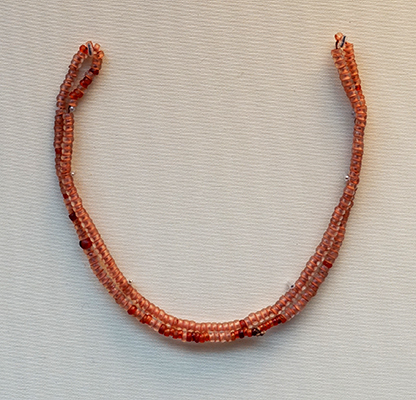
C-Group Culture Necklace
A string of small, very regularly shaped discs and a few short truncated convex bicones of cornelian, most being very pale pink in colour.
Diameter 232 mm, height 15 mm, weight 8 gm.
According to Griffith in 'Liverpool Annals of Archaeology and Anthropology 8 (Liverpool, 1921), 75, some of the beads are dull whitish quartz beads coloured to resemble pale cornelian.
Catalog: Faras, C-Group cemetery, Grave 238, cornelian, EA51220
Photo: Don Hitchcock 2018
Source and text: Original, card at the British Museum, http://www.britishmuseum.org/, © Trustees of the British Museum, CC BY-NC-SA 4.0
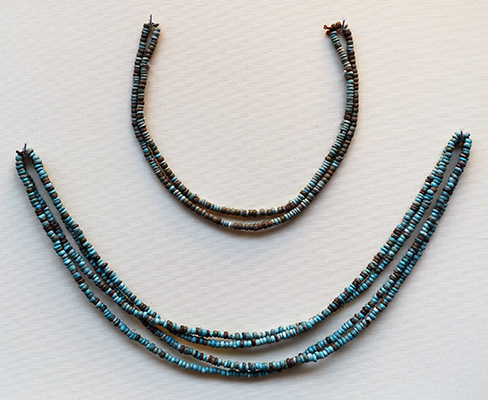
C-Group Culture Necklaces
EA51223, a string composed of disc beads, some of green glazed composition, others of blue, two mottled black and white syenite discs and one shell disc.
Length 257 mm.
EA51222, A long string of a few green, many pale-blue and some black glazed composition disc beads and short barrels.
Length: 663 mm, weight 20 gm.
Catalog: Faras, C-Group cemetery, Grave 238, EA51222, EA51223
Photo: Don Hitchcock 2018
Source and text: Original, card at the British Museum, http://www.britishmuseum.org/, © Trustees of the British Museum, CC BY-NC-SA 4.0
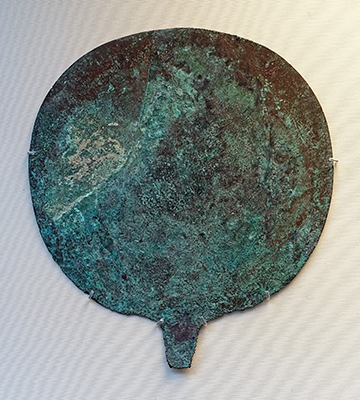
Mirror, 2 300 BC -1 600 BC.
Metal objects are rare in tombs from the C-Group culture of Lower Nubia, and this mirror was probably a luxury import from Egypt. When highly polished it would have given a strong reflection. Originally it had a handle probably made of wood, bone, or ivory.
Circular copper mirror, handle missing, and corroded.
Height 176 mm, width 157 mm, depth 3 mm.
Catalog: Faras, C-Group cemetery, Grave 238, EA51225
Photo: Don Hitchcock 2018
Source and text: Original, card at the British Museum, http://www.britishmuseum.org/, © Trustees of the British Museum, CC BY-NC-SA 4.0
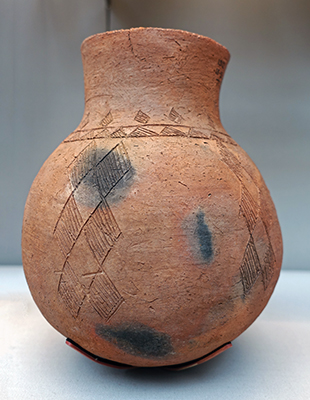
Jar, 2 300 BC - 1 600 BC.
This red jar decorated with incised geometric patterns has a rounded base, making it more stable when placed on soft sand. It was found in the grave of a person from the C-Group culture.
Handmade ceramic jar with medium slightly flared neck, widening to a globular body and round base. Embellished with smoothed, punctate impressions on rim and incised decoration elsewhere, featuring an incised rhomboidal pattern along the lower neck, an incised band with triangles around the neck join, and an incised rhomboidal patter in two sets of three spaced around the body. Several firing stains on exterior.
Diameter 159 mm, height 219 mm, weight 1043 gm.
Catalog: Faras, C-Group cemetery, Grave 49, EA51226
Photo: Don Hitchcock 2018
Source and text: Original, card at the British Museum, http://www.britishmuseum.org/, © Trustees of the British Museum, CC BY-NC-SA 4.0
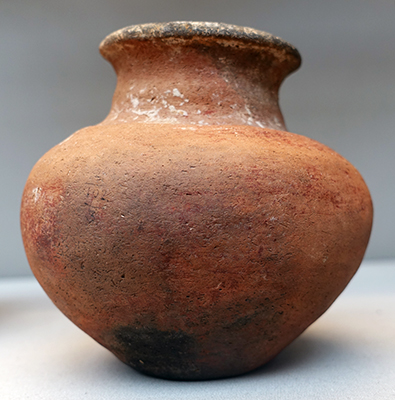
Jar, 2 300 BC - 1 600 BC.
Made from local Nile silt, this red jar has been deliberately blackened on the inside. The people of the C-Group culture were buried with everyday pottery such as this, suggesting that they believed in some form of an afterlife.
Handmade ceramic jar with everted rim, short neck, broad shoulder tapering to a flat base with an almost recessed spot base. Vessel fired brown on the exterior and black on the interior. Traces of burnishing on exterior.
Diameter 119 mm, height 111 mm, weight 375 gm.
Catalog:Faras, C-Group cemetery, Grave 122, EA51215
Photo: Don Hitchcock 2018
Source and text: Original, card at the British Museum, http://www.britishmuseum.org/, © Trustees of the British Museum, CC BY-NC-SA 4.0
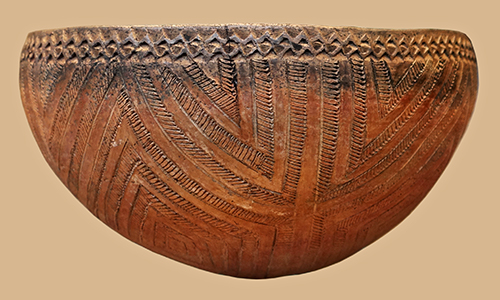
Jar, 2 300 BC - 1 600 BC.
This handmade hemispherical bowl, polished and incised with decoration just below the simple direct rim, is typical of the pottery made by the C-Group people. It is identical to contemporary pottery made by the people of the Kerma culture in Upper Nubia. The rounded base made it more stable when placed on sand.
The exterior is oxidised, the interior is blackened. The rim is blackened and decorated with an impressed diamond roulette pattern. The body is decorated with incised linear bands filled with incised slashes.
Diameter 170 mm, height 99 mm, weight 532 gm.
Catalog: Faras, C-Group Culture, EA51218
Photo: Don Hitchcock 2018
Source and text: Original, card at the British Museum, http://www.britishmuseum.org/, © Trustees of the British Museum, CC BY-NC-SA 4.0
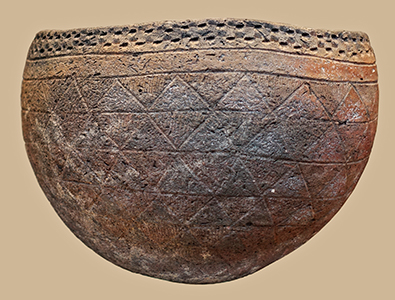
Jar, 2 300 BC - 1 600 BC.
Handmade ceramic hemispherical bowl with simple direct rim and rounded base. Deoxidised interior, oxidised exterior. Exterior decorated with a roulette impression on the rim delimited by an incised line, and below rows of incised triangles filled with incised vertical lines over the body.
Pottery of the C-Group people was handmade and usually decorated with incised geometric patterns. These bowls have a lattice pattern which may have been influenced by basketwork designs. Similar motifs appear on earlier A-Group culture eggshell-ware pottery.
Diameter 140 mm, height 110 mm, weight 434 gm.
Catalog: Faras, C-Group Culture, Grave 199, EA51209
Photo: Don Hitchcock 2018
Source and text: Original, card at the British Museum, http://www.britishmuseum.org/, © Trustees of the British Museum, CC BY-NC-SA 4.0
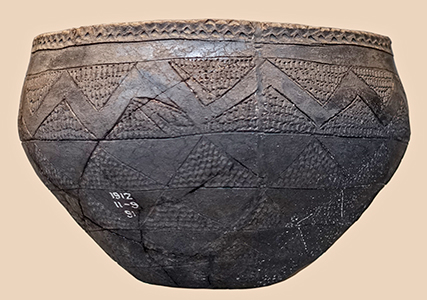
Jar, 2 300 BC - 1 600 BC.
Handmade ceramic deoxidised ( i.e. darkened by lack of oxygen during firing - Don )
bowl with slightly modelled rim widening to a broad shoulder and tapering to a flat base. Decorated with impressed roulette pattern on rim, and wide incised band below filled with an incised zig-zag running round the circumference and surrounded by vertical punctate impressions.
The lower body is decorated with an incised triangular pattern filled with light impressions, with traces of white pigment. The flat base is incised with a star. Interior features include decorative scraping with wide-toothed comb.
Diameter 148 mm, height 98 mm, weight 343 gm.
Catalog: Faras, C-Group Culture, Grave 113, EA51240
Photo: Don Hitchcock 2018
Source and text: Original, card at the British Museum, http://www.britishmuseum.org/, © Trustees of the British Museum, CC BY-NC-SA 4.0
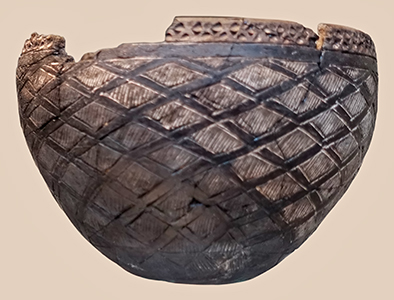
Jar, 2 300 BC - 1 600 BC.
Handmade ceramic deoxidised bowl with simple direct rim and rounded base. The rim is embellished with an impressed roulette pattern, while the body is decorated with incised horizontal diamonds filled with incised lines, originally impressed with white pigment. Interior shows decorative scraping from a wide-toothed comb.
Diameter 127 mm, height 95 mm.
Catalog: Faras, C-Group Culture, Grave 216, EA51244
Photo: Don Hitchcock 2018
Source and text: Original, card at the British Museum, http://www.britishmuseum.org/, © Trustees of the British Museum, CC BY-NC-SA 4.0
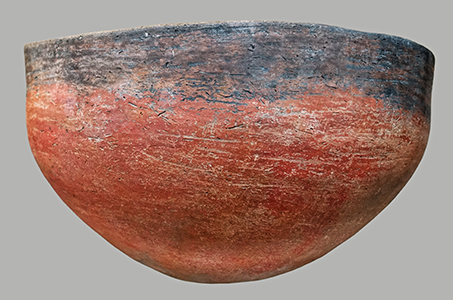
Black-topped pot, 2 300 BC - 1 600 BC.
Handmade hemispherical bowl with simple rim and rounded base. Blackened rim and interior with fine scrape marks, while exterior is red painted.
These handmade pots made by the people of the C-Group culture are very similar to the much earlier Egyptian black-topped red ware vessels of the Predynastic period, 5 500 BC -3 100 BC. The effect was achieved by placing the pot upside down in the ashes of the kiln or bonfire, so that the rim and interior turned black owing to lack of oxygen.
Diameter 311 mm, height 108 mm, weight 801 gm.
Catalog: Faras, C-Group Culture, Grave 102, EA51213
Photo: Don Hitchcock 2018
Source and text: Original, card at the British Museum, http://www.britishmuseum.org/, © Trustees of the British Museum, CC BY-NC-SA 4.0
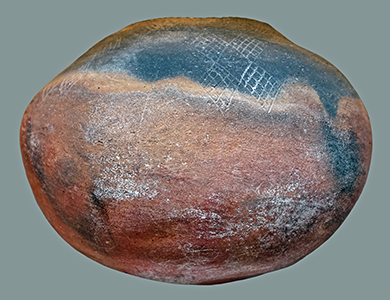
Spherical jar, 2 300 BC - 1 600 BC.
Handmade C-Group culture ceramic spherical jar with hole-mouth, restricted rim, and rough globular body with rounded base. Blackened top. Embellished with punctate impressions on the rim and incised triangle band around rim. Body decorated with incised rhomboidal pattern in sets of two around the body. There are possible traces of white pigment.
Diameter 85 mm (rim), maximum diameter 204 mm, height 160 mm, weight 1667 gm.
Catalog: Faras, C-Group Culture, Grave 49, EA51236
Photo: Don Hitchcock 2018
Source and text: Original, card at the British Museum, http://www.britishmuseum.org/, © Trustees of the British Museum, CC BY-NC-SA 4.0
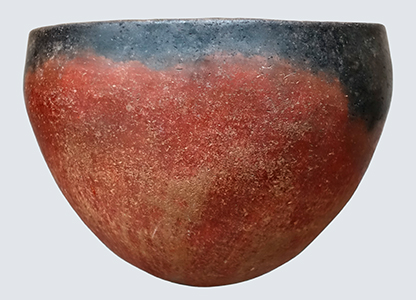
Burnished black-topped redware pottery bowl, 2 300 BC - 1 600 BC.
Diameter 125 mm, height 99 mm, weight 286 gm.
Catalog: C-Group Culture, El-Dakka, cemetery 101, Grave 229, EA66710
Photo: Don Hitchcock 2018
Source and text: Original, card at the British Museum, http://www.britishmuseum.org/, © Trustees of the British Museum, CC BY-NC-SA 4.0
Spherical black vessels, 2 300 BC - 1 600 BC.
(left)
Globular handmade ceramic cup fired black, with slightly modelled rim and rounded base. Rim decorated with light impressions. Exterior decorated with incised horizontal diamond-shapes filled with an incised criss-cross pattern, originally filled with white pigment, while the space between the diamonds is burnished. The base is encircled with a 7-pointed incised star band filled with linear slashes, surrounding a circular band filled with linear slashes and a 5-pointed cruciform pattern with linear slashes around and in the centre.
Diameter 74 mm, height 90 mm, weight 212 gm.
Catalog: C-Group Culture, Faras, EA51211
(right)
Globular handmade ceramic cup fired black, with alternate vertical smooth and patterned bands.
Catalog: C-Group Culture, Faras
Photo: Don Hitchcock 2018
Source and text: Original, card at the British Museum, http://www.britishmuseum.org/, © Trustees of the British Museum, CC BY-NC-SA 4.0
Large sandstone stelae marking C-Group graves in a cemetery at Aniba in southern Egypt.
Catalog: Courtesy of Egyptian Museum Georg Steindorff, University of Leipzig
Rephotograpy: Don Hitchcock 2018
Source and text: Original, card at the British Museum, http://www.britishmuseum.org/, © Trustees of the British Museum, CC BY-NC-SA 4.0
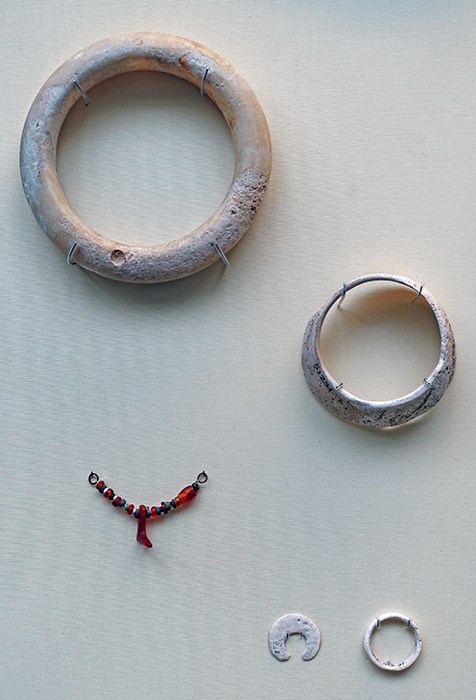
Jewellery, 2 300 BC - 1 600 BC.
As well as necklaces, C-Group burials included other types of jewellery such as anklets, earrings, bangles, finger, and toe rings. These were made from local materials including bone, shell, and stone.
Here the carnelian foot pendant might be an Egyptian import, perhaps worn as it was believed to ensure dexterity and nimbleness.
Bangle, EA51228
A large hoop-shaped bangle of calcite with slightly convex inner face and strongly convex profile.
C-Group Culture, diameter 102 mm, width 19 mm, depth 19mm, weight 159 gm.
Bangle, EA51231
A bangle of shell, uneven in shape. The depth varies considerably and the circumference of the upper rim is considerably less than that of the lower one.
C-Group Culture, diameter 65 mm, width 20 mm, depth 21 mm, weight 24 gm.
Bead amulet, carnelian, EA51234
A few small disc beads of dark-green glazed composition, seven syenite discs, one cornelian barrel and seven short truncated convex bicones, and one cornelian leg-with-foot amulet.
C-Group Culture, height 18 mm (foot amulet), length 60 mm (as strung), weight 1 gm.
Ornament, shell, EA51242
C-Group Culture, grave 113, diameter 22 mm, width 8 mm, weight 1 gm.
Finger-ring, undecorated shell, EA51246
C-Group Culture, diameter 24 mm, thickness 4 mm, weight 1 gm.
Catalog: Faras, C-Group cemetery, Grave 41, EA51228, Grave 178, EA51231, Grave 31, EA51234, Grave 13, EA51242, Grave 226-4, EA51246
Photo: Don Hitchcock 2018
Source and text: Original, card at the British Museum, http://www.britishmuseum.org/, © Trustees of the British Museum, CC BY-NC-SA 4.0
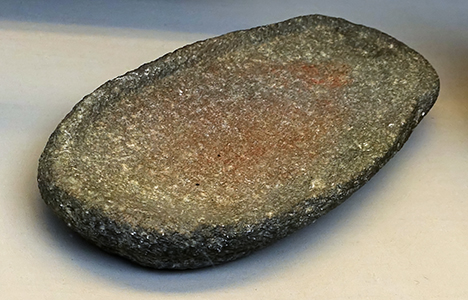
Granite grindstone, around 2 300 BC - 1 600 BC.
Many cultures around the world today still grind grain with quern stones like this C-Group example, in combination with handheld stones, to produce flour for bread and oats for porridge.
Height 42 mm, length 327 mm, depth 158 mm, weight 2827 gm.
Catalog: Faras, C-Group cemetery, Grave 102, EA51217
Photo: Don Hitchcock 2018
Source and text: Original, card at the British Museum, http://www.britishmuseum.org/, © Trustees of the British Museum, CC BY-NC-SA 4.0
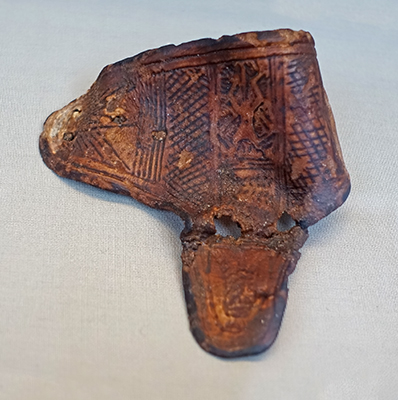
Archery wrist guard, around 1 650 BC -1 550 BC.
Archery equipment and weapons have been found in several graves belonging to the Pan-Grave people. This leather guard was worn to protect the wrist when releasing the bowstring. Its decoration is a particularly fine example of the skilled work of Pan-Grave leatherworkers.
Length 85 mm.
Catalog: Mostagedda cemetery, Grave 3135, EA63225
Photo: Don Hitchcock 2018
Source and text: Original, card at the British Museum, http://www.britishmuseum.org/, © Trustees of the British Museum, CC BY-NC-SA 4.0
Painted ox skull, around 1 650 BC -1 550 BC.
The Pan-Grave people followed the custom typical in Nubia (southern Egypt and northern Sudan) of burying their dead with the skulls and horns of cattle, sheep, and gazelle. Sometimes they were painted with patterns, or like this example with a central figure of a warrior, perhaps a Pan-Grave man on duty in the Egyptian army. His name is probably written in the rectangular panel
Frontal bone of ox skull bearing painted representation of warrior and personal name within panel.
Length 308 mm.
Catalog: El-Badari, Mostagedda cemetery, Grave 25/5477, EA63339
Drawing: Unknown artist, © Trustees of the British Museum, CC BY-NC-SA 4.0
Photo: Don Hitchcock 2018
Source and text: Original, poster at the British Museum, http://www.britishmuseum.org/, © Trustees of the British Museum, CC BY-NC-SA 4.0
Copper axe head from a Pan Grave
Arsenical copper axe-head: finely fashioned with markedly incurved sides and concave butt. It has been cleaned of corrosion product. One face is smoother than the other and there are small surface pits on both faces. Hammer marks are visible along the sides and on the cutting edge, which is quite sharp.
The Kushites copied the winged shape of this Egyptian copper axe type, making their own versions in stone using their well established technology of stone tool production, see the examples below.
Metallographic analysis suggests that despite its finished appearance the axe may not have been subject to use. After casting the blade was cold-worked, but not extensively so.
( thus it may well have served as a status object - Don )
Length 140 mm, width 102 mm at the cutting edge, weight 1040 gm, found in the same grave as another copper axe, EA63232.
Catalog: Mostagedda, Middle Egypt, near El-Badari, and well downstream of Thebes, EA63231
Drawing (left): http://www.britishmuseum.org/, © Trustees of the British Museum, CC BY-NC-SA 4.0
Photo (right): Don Hitchcock 2018
Source and text: Original, card at the British Museum, http://www.britishmuseum.org/, © Trustees of the British Museum, CC BY-NC-SA 4.0
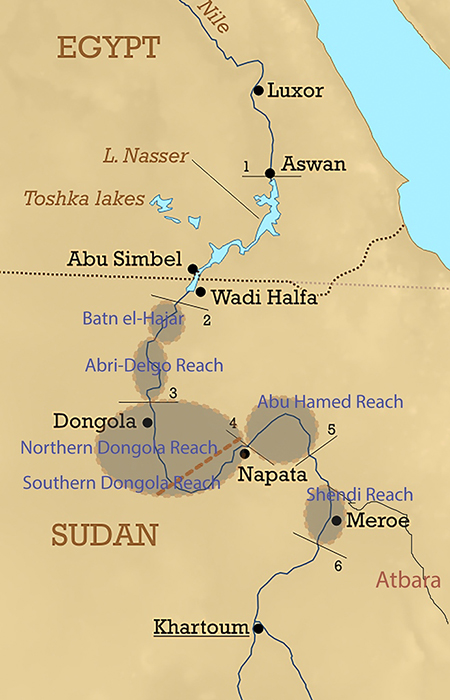
Map of significant reaches of the Nile.
Photo: Clemens Schmillen
Permission: Creative Commons Attribution-Share Alike 4.0 International license
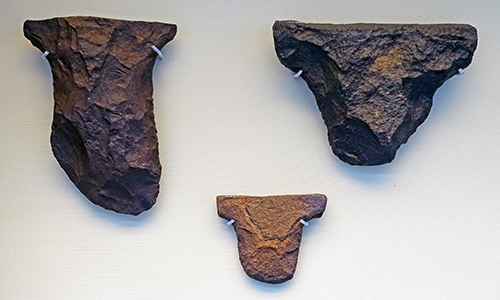
The Kushites copied the winged shape of the Egyptian copper axe type above.
Stone winged axes, ferruginous sandstone, type 3E, 2 500 BC -1 450 BC.
(left) ferruginous sandstone. Type 3E, height 128 mm, width 98 mm, thickness 27 mm. Catalog: Kerma, Northern Dongola Reach, EA79624
(right) sandstone ferricrete (?), Type 3A, height 95 mm, width 126 mm, thickness 30 mm.
Catalog: Kerma, Northern Dongola Reach, EA79626
(lower centre) ferruginous sandstone. Type 3A, Height 72 mm, width 60 mm, thickness 14 mm.
Catalog: Kerma, Northern Dongola Reach, EA79625
Photo: Don Hitchcock 2018
Source and text: Original, card at the British Museum, http://www.britishmuseum.org/, © Trustees of the British Museum, CC BY-NC-SA 4.0
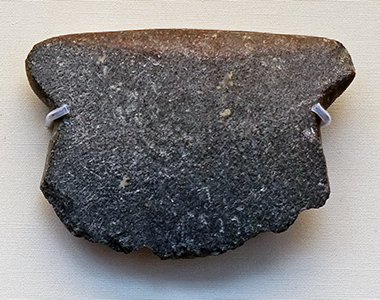
Stone axe, 1 750 BC -1 450 BC.
The Kushites made this axe from stone which is hard enough for it to have been used as a functional tool or weapon. It is unlike the winged sandstone axes above, which are very much softer and weaker.
Polished stone winged axe, tip of blade missing. grey igneous. Type 2
Height 60 mm, width 82 mm, thickness 19mm.
Catalog: Grey igneous rock, Northern Dongola reach, Site X10, EA79627
Photo: Don Hitchcock 2018
Source and text: Original, card at the British Museum, http://www.britishmuseum.org/, © Trustees of the British Museum, CC BY-NC-SA 4.0
Egyptian Fortresses in occupied Nubia
12th Dynasty, 1 991 BC - 1 802 BC
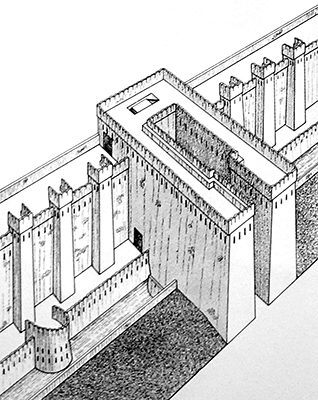
The series of fortresses built by the 12th Dynasty (1 991 BC - 1 802 BC) conquerors of Lower Nubia stretched from Elephantine to the new southern frontier at Semna. They include some of the most sophisticated examples of military architecture known from the ancient world. The mud brick fortresses were situated on the banks and islands of the Nile.
No two were identical, but standard features included defensive ditches, ramparts, bastions and massive gates with wooden drawbridges. Within the walls stood barracks, workshops, administrative quarters and temples. Egyptian troops were stationed in the fortresses as garrisons. Their role was to control the movements of the local population and to protect the annexed territory against possible attack.
The fortresses also functioned as bases for gold-mining and coppersmelting operations and were collection points for trade goods and raw materials. When Egypt lost control over Lower Nubia during the 13th Dynasty, most of the forts were abandoned. A few were captured by Kushites, Nubians from Kerma (see Case 4), when they advanced from Upper Nubia to take over the lands vacated by the Egyptians.
Photo and text: Poster at the British Museum, http://www.britishmuseum.org/, © Trustees of the British Museum, CC BY-NC-SA 4.0
Rephotograpy: Don Hitchcock 2018
The Kingdom of Kush and the Kerma Culture
The first urban society in sub-Saharan Africa developed around 2 000 BC in northern Sudan and became known as Kush. Over 1000 years its capital Kerma developed substantial fortifications.It grew into a complex of temples, palaces, houses, and industrial areas. Agriculture and animal husbandry remained important and people buried their dead with sacrificed goats, sheep, and even humans. Kush had a wealth of natural resources including gold, ivory, and ebony, which it traded with its Egyptian neighbour.
However, military conflicts occasionally erupted and at one point Kush dominated the Nile Valley, raiding deep into Egyptian territory.
Nubia and Kush
The legendary Kingdom of Kush, with its capitals in what is now northern Sudan, helped define the cultural and political landscape of northeastern Africa for more than a thousand years. Kush was a part of Nubia, which stretched from the Upper Nile to the Red Sea.
The city-state of Kerma emerged as the dominant political force between 2 450 BC 1 450 BC, controlling the Nile Valley between the first and fourth cataracts, an area as large as Egypt. The Egyptians were the first to identify Kerma as 'Kush' and over the next several centuries the two civilisations engaged in intermittent warfare, trade, and cultural exchange.
Map: Tibor G. Toth, National Geographic
Source and text: https://www.nationalgeographic.org/media/kingdoms-kush/
Additional text: Wikipedia
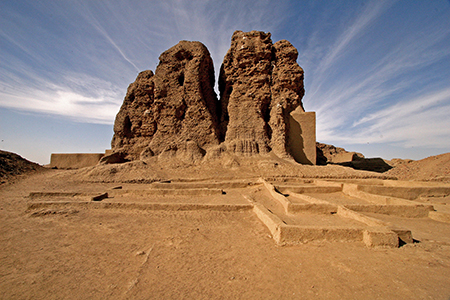
This solid rectangular mud brick temple in Kerma, the capital of Kush, is known as the Western Deffufa. Standing at 18 metres tall, it was probably the city's main religious building.
Photo: Walter Callens, camera location 19° 36′ 03.46″ N, 30° 24′ 34.672″ E
Permission: licensed under the Creative Commons Attribution 2.0 Generic license.
Text: Poster at the British Museum, http://www.britishmuseum.org/, © Trustees of the British Museum, CC BY-NC-SA 4.0
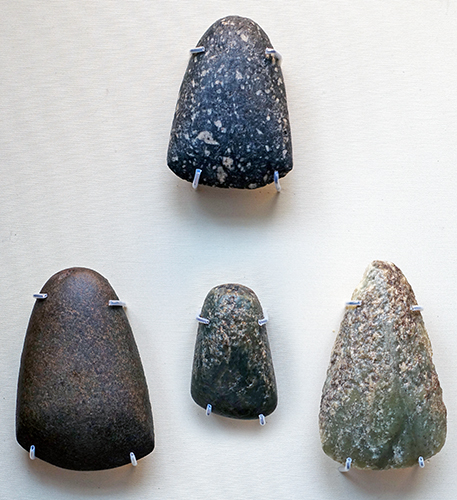
Teardrop-shaped axes, 1 750 BC -1 450 BC.
Originally these axes would have been hafted to wooden handles which have not survived. The smaller axes were probably made for symbolic purposes, rather than being made as tools or weapons. In shape and finish these examples are similar to earlier Neolithic axes from the same area.
Top:
EA79629: Polished stone axe, black porphyry, Type 1B. Site M34, Kerma, Northern Dongola Reach, 2 500 BC -1 450 BC. Height 73 mm, width 52 mm, thickness 28 mm.
Left:
EA79630: Polished stone axe, indeterminate igneous rock? Type 1B, Site G5, Northern Dongola Reach 2 500 BC -1 450 BC. Height 84 mm, thickness 27 mm, width 57 mm.
Centre:
EA55451: Green stone axe-head, Kerma Classique, 1 750 BC -1 450 BC. Kerma, Northern Dongola Reach, height 27 mm, width 35 mm, depth 55 mm, weight 39 gm.
Right:
EA79631: Polished stone axe, green quartz? or chert? Type 1B
Kerma, Northern Dongola Reach, Site H10, 2 500 BC -1 450 BC. Height 86 mm, thickness 34 mm, width 52 mm.
Photo: Don Hitchcock 2018
Source and text: Original, card at the British Museum, http://www.britishmuseum.org/, © Trustees of the British Museum, CC BY-NC-SA 4.0
Headrest, 1 750 BC - 1 450 BC.
This wooden headrest was found with the body of a sacrificial victim buried in the grave of a Kushite ruler. Designed to support the head during sleep, such headrests were sometimes padded to provide extra comfort. They were placed in tombs so that the dead could use them in the afterlife.
Length 393 mm, height 152 mm.
Catalog: Kerma Classique, Kerma, Northern Dongola Reach, Tumulus KX, EA55437
Photo: Don Hitchcock 2018
Source and text: Original, card at the British Museum, http://www.britishmuseum.org/, © Trustees of the British Museum, CC BY-NC-SA 4.0
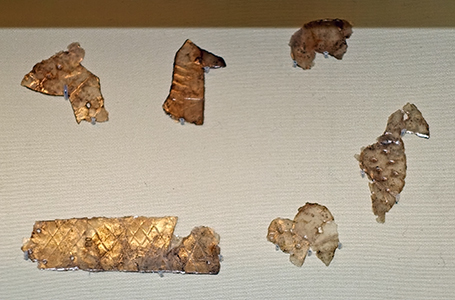
Mica fragments, 1 750 BC - 1 450 BC.
Decorative mica objects like these were sewn onto cloth or leather caps, worn by sacrificial victims buried in the graves of the Kushite rulers.
Shaped like animals and birds, and carved with floral and geometric motifs, such objects were also used as inlays on wooden funerary beds.
These mica fragments are part of a set of jewellery pieces catalogued as a group in EA55470, comprising, as well as mica, beads and other items.
Catalog: Kerma Classique, Kerma, EA55470
Photo: Don Hitchcock 2018
Source and text: Original, card at the British Museum, http://www.britishmuseum.org/, © Trustees of the British Museum, CC BY-NC-SA 4.0
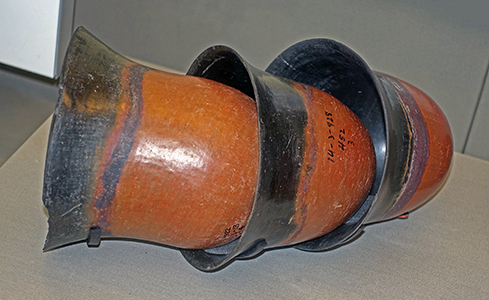
Groups of 'tulip' beakers, perhaps used for drinking, are often found stacked together in tombs.
Kerma, Tumulus KIV, EA55415, EA55421, EA55423
Kerma, Grave KB 21, EA65579
Beakers, 1 750 BC - 1 450 BC.
Left hand beaker: EA55415, diameter 140 mm, height 143 mm, weight 197 gm.
Centre beaker: EA55421, Kerma ware pottery beaker, height 120 mm.
Right hand beaker: EA55423, diameter 140 mm, height 117 mm, weight 113 gm.
Catalog: Kerma Classique, Kerma, Northern Dongola Reach, EA55415, EA55421, EA55423
Photo: Don Hitchcock 2018
Source and text: Original, card at the British Museum, http://www.britishmuseum.org/, © Trustees of the British Museum, CC BY-NC-SA 4.0
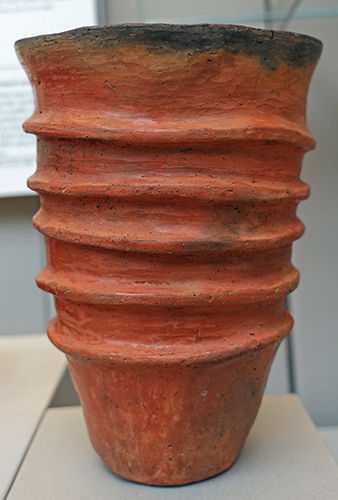
Ribbed or rilled beaker, 1 750 BC - 1 450 BC.
Rilled beakers like this are relatively rare.
Usually fired red or black and burnished, they may have been placed in graves to imitate a stack of tulip beakers, possibly because the person being buried could not afford the real things.
Diameter 117 mm, height 167 mm, weight 540 gm.
Catalog: Kerma Classique, Kerma, Northern Dongola Reach, EA65579
Photo: Don Hitchcock 2018
Source and text: Original, card at the British Museum, http://www.britishmuseum.org/, © Trustees of the British Museum, CC BY-NC-SA 4.0
High-quality pots, 1 750 BC - 1 450 BC.
Ceramics are the most characteristic objects which people produced during the Kerma period 2 500 BC - 1 450 BC in northern Sudan.
Most of the finest pots come from graves, like these high quality examples which illustrate the growing artistic and technological development of the Kushite kingdom. The spouted vessel may have been used as a feeding cup for infants.
(top left) Black-topped redware pottery necked jar; globular body, EA65587
Kerma ware pottery bowl, 1 750 BC - 1 450 BC.
Diameter 128 mm, height 170 mm, weight 426 mm.
Catalog: Kerma Classique, Northern Dongola Reach, EA65587
(top right) Redware pottery necked jar, EA65588
Kerma ware, 1 750 BC - 1 450 BC.
Diameter 127 mm, height 120 mm, weight 345 gm.
Catalog: Kerma Classique, Kerma, Northern Dongola Reach, EA65588
(lower left) Spouted pot, EA65577
1 800 BC - 1 500 BC. Kerma ware pottery jar: a squat jar with a long spout protruding from the shoulder. It has a black mouth and interior with variegated grey-purple band on the exterior. It is handmade, with very thin walls, neck, spout and disc base applied. It was finger-smoothed inside, has a red wash outside, and is polished on the outside and inside the rim.
Height 141 mm, width 195 mm, depth 124 mm, weight 210 gm.
The technical accomplishment of this jar is remarkable. Reisner, who excavated Kerma between 1913 and 1916 and found hundreds of vessels in this ware, thought they must have been made on a wheel. They are entirely handmade - the absence of rilling marks and the slightly uneven rim confirm this. The potter's control of his kiln is second only to the accomplishment of his modelling.
Nordstrom suggests that the 'secondary band', which is composed of vitrified material, was produced by a reaction between iron and fluxes in the coating and elements in the clay. It was a deliberately sought-after effect; almost all the vessels have it. On this vessel it appears that a black layer (there are a few accidental spots on the spout) corresponding to the secondary band was painted on to the surface prior to firing.
K420 was a subsidiary burial in the great cemetery at Kerma, and the Egyptian pottery and a stone vase found in the grave may be dated to the late Second Intermediate period (1 650 BC - 1 551 BC).
Catalog: Kerma ware, Kerma, Northern Dongola Reach, EA65577
(lower right) Shallow bowl, EA65578
Kerma ware pottery bowl, 1 750 BC - 1 450 BC.
Diameter 176 mm, height 80 mm, weight 239 gm.
Catalog: Kerma, Northern Dongola Reach, EA65578
Catalog: Kerma Classique, Kerma, Tumulus K IV, EA65577, Kerma, Tumulus K X, EA65578, EA65587, EA65588
Photo: Don Hitchcock 2018
Source and text: Original, card at the British Museum, http://www.britishmuseum.org/, © Trustees of the British Museum, CC BY-NC-SA 4.0
'Tulip' beaker, 1 750 BC - 1 450 BC.
Finely made pottery was the most distinctive product of Kerma and this 'tulip' beaker is a particularly characteristic shape. Although handmade, it is extremely delicate, highlighting the technical skill of the potter.
Diameter 49 mm (base), 115 mm (rim), height 140 mm.
Pottery is one of the most impressive products of the Kerma culture, which flourished in Nubia (modern southern Egypt and northern Sudan) and formed the first kingdom of Kush (2 500 BC - 1 500 BC). Kerma pots are among the finest products of the potter's art to have been made in the Nile Valley at any period.
This beaker has a cavetto profile (shaped like an inverted bell), rounding into the small sagging base. The interior, rim, and upper part of the exterior are covered in a lustrous black slip, while the lower part of the exterior and the base are slipped in red. Overlying the red-slipped zone and the point of junction of the red and black is a very pale grey stripe, bounded by darker grey margins. The quality of execution is superb, and the vessel is extremely regular and fine, with walls only three millimetres thick. The beaker is a typical product of the Classic Kerma (1 750 BC - 1 550 BC) potters. The characteristic feature of this pottery is the grey band, the inspiration for which may have come from the accidentally-produced grey spots noted on some pots of the immediately preceding period. It is not certain how the potters were able to produce the band as a consistent feature. Although this beaker came from a funerary context, the type is frequently found on settlement sites throughout the kingdom, where they tend to be much less well preserved.
This vessel came from a subsidiary grave within one of the massive royal tumuli at Kerma (tumulus IV), where it formed part of a stack of five beakers and a bowl placed close to the head of the individual buried in the north-east corner of the grave. The massive royal tombs at Kerma date from a phase of the kingdom of Kush which was approximately contemporary with the Second Intermediate Period in Egypt. These tumuli are the largest burial structures in Nubia and contain many individual burials. Those near the royal burial appear to belong to people deliberately killed in order to accompany the dead king; other tombs are set into the tumulus above, and are slightly later in date than the main interment. These subsidiary burials, one of which yielded this beaker, are doubtless related to the main burial and were deliberately arranged to avoid interfering with it.
Catalog: Kerma, Northern Dongola Reach, Tumulus K IV, EA55424
Photo: Don Hitchcock 2018
Source and text: Original, card at the British Museum, http://www.britishmuseum.org/, © Trustees of the British Museum, CC BY-NC-SA 4.0
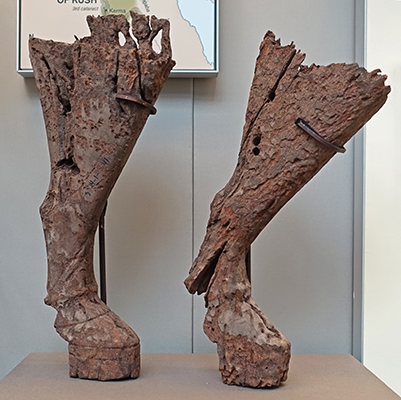
Bed legs, 1 750 BC - 1 450 BC.
The dead were often placed in their graves upon a bed, and these wooden legs are all that survives from one example. Sometimes inlaid with ivory or mica, in this instance the legs are shaped like those of a bull. These come from beds very similar to modern Sudanese examples (called angare)
EA55438: Part of the leg of a chair, made of wood, in the form of a bull's leg, pierced at top for attachment.
Height 286 mm, width 114 mm.
EA55440: Part of the leg of a chair, made of wood, in the form of a bull's leg, pierced at top for attachment.
Height 274 mm, width 98 mm.
Catalog: Sudan, Nuri (Nubia), EA55438, EA55440
Photo: Don Hitchcock 2018
Source and text: Original, card at the British Museum, http://www.britishmuseum.org/, © Trustees of the British Museum, CC BY-NC-SA 4.0
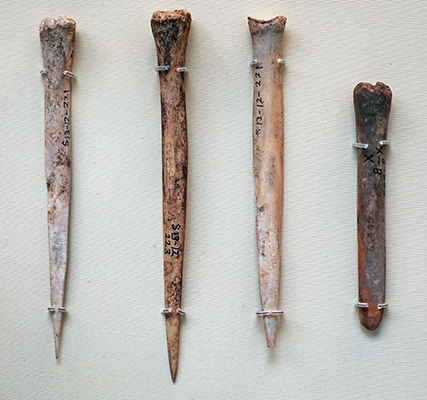
Awls and spatula, 1 750 BC - 1 450 BC.
Bone and gazelle horn awls were used for piercing holes in leather, sewing, or basketry making.
The bone spatula (far right) might have been used in food preparation.
EA55447: Triangular bone awl with a sharp point.
Length 138 mm, width 14 mm.
Catalog: bone, Nuri, Kurru, EA55447
EA55448: Triangular bone awl, pierced at the base, sharply pointed.
Length 144 mm, width 22 mm.
Catalog: bone, Nuri, Kurru, EA55448
EA55446: Triangular bone awl, split and broken at the point.
Length 133 mm, width 17 mm.
Catalog: bone, Nuri, EA55446
EA55449: Rectangular bone scraper or spatula with a rounded point.
Length 99 mm, width 15 mm.
Catalog: bone, Nuri, Kurru, EA55449
Catalog: Kerma, EA55446-9
Photo: Don Hitchcock 2018
Source and text: Original, card at the British Museum, http://www.britishmuseum.org/, © Trustees of the British Museum, CC BY-NC-SA 4.0
Bronze razor, 1 750 BC - 1 450 BC.
The razor's fine quality was only achievable by using technologically advanced metalworking furnaces, which could reach very high temperatures. Its owner would have kept it sharp with a whetstone.
Although in shape the razor is similar to contemporary Egyptian examples, its style is characteristic of Sudan.
Length 165 mm.
Catalog: Kerma Classique, Kerma, Northern Dongola Reach, Tumulus K III, EA55445
Photo: Don Hitchcock 2018
Source and text: Original, card at the British Museum, http://www.britishmuseum.org/, © Trustees of the British Museum, CC BY-NC-SA 4.0
Hair slides, 2 500 BC - 2 050 BC.
The hair slide on the left has been repaired in ancient times, suggesting that its owner valued it highly. Such grips for hair continued to be made for hundreds of years, and have been found at some much later C-Group culture sites in southern Egypt and northern Sudan.
EA79618: Half of an oval hair-slide with a 7mm diameter hole 5mm below the top edge and a mending hole 1mm in diameter above it. The lower part was cut by a slit. Shell.
Thickness 2 - 3 mm, length 38 mm, width 19 mm.
EA79617: Oval hair-slide with a 8mm diameter hole 5mm below the top edge. The lower part is cut by a 2mm wide slit 15mm in length. Shell.
Thickness 3 millimetres, length 30 mm, width 23 mm.
Catalog: Kerma Ancien, Northern Dongola Reach, Site P37, EA79618 and EA79617
Photo: Don Hitchcock 2018
Source and text: Original, card at the British Museum, http://www.britishmuseum.org/, © Trustees of the British Museum, CC BY-NC-SA 4.0
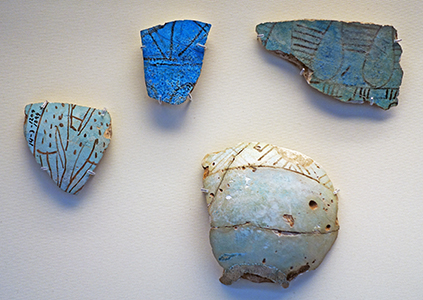
Faience sherds, 1 750 BC - 1 450 BC.
Faience is an artificial non-clay based quartz-ceramic, self glazing to produce a bright blue or green colour when fired.
The Kushites were skilled at making faience and produced large quantities of vases in the material, decorated with floral motifs, animals, and birds. Production of faience might have been controlled by the temples at Kerma.
Catalog: Kerma, EA55458 and EA55460-2
Photo: Don Hitchcock 2018
Source and text: Original, card at the British Museum, http://www.britishmuseum.org/, © Trustees of the British Museum, CC BY-NC-SA 4.0
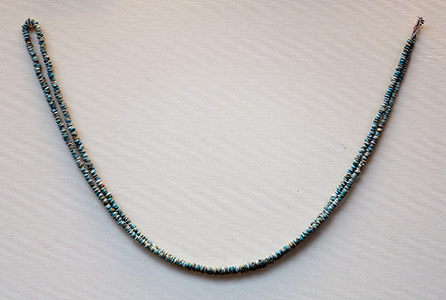
Necklace, 2 500 BC - 1 450 BC.
Glazed Beads
Catalog: Kerma, Northern Dongola Reach, EA79621
Photo: Don Hitchcock 2018
Source and text: Original, card at the British Museum, http://www.britishmuseum.org/, © Trustees of the British Museum, CC BY-NC-SA 4.0
Whetstones, 1 750 BC - 1 450 BC.
Whetstones were used to sharpen metal objects, such as razors and daggers. Often pierced at one end, they could then be worn around the neck, suggesting that people may have carried their own personal whetstones.
Far left: EA55452, Quartz whetstone/grinder, tubular in shape with rounded ends.
Diameter 42 mm, length 123 mm, weight 233 gm. Kurru.
Second left: EA55453, whetstone, pierced at one end.
Height 6 mm, length 101 mm, depth 19 mm, weight 14 gm.
Catalog: Kerma Classique, Kerma, Northern Dongola Reach, EA55453
Third left: EA79632, whetstone, roughly rectangular slightly rounded at both ends. There is a 1 mm diameter hole drilled from both sides 3mm from the end. The other end has a slight chamfer. Some scoring on the face may be the result of wear during use. Grey tuff or siltstone?
Length 52 mm, thickness 4 mm, width 11 mm, diameter of hole 1 mm.
Catalog: Kerma Classique, Kerma, Northern Dongola Reach, EA79632
Catalog: Kerma, Tumulus K XVIII, EA55452 and EA55453
Northern Dongola Reach, Site 17, EA79632
Photo: Don Hitchcock 2018
Source and text: Original, card at the British Museum, http://www.britishmuseum.org/, © Trustees of the British Museum, CC BY-NC-SA 4.0
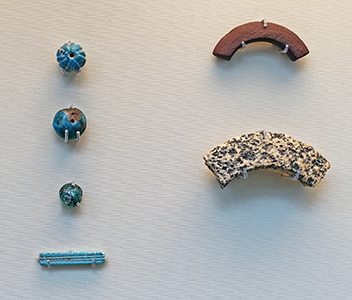
Jewellery, 2 500 BC - 1 450 BC.
Faience beads are commonly found in Kerma burials. People were also interred with other jewellery, such as these bangles made from ironstone and speckled granite. The large melon shaped beads were sometimes used to decorate the horns of sacrificed sheep.
EA79621: The beads have been catalogued as a necklace.
Catalog: Northern Dongola Reach, EA79621
However one of the beads has been catalogued as EA55476, and is described as a blue glazed quartz spherical bead, 1 750 BC - 1 450 BC, from Kerma, Northern Dongola Reach.
EA79633: Armlet roughly triangular in section. 36% of the ring survives. Red brown sandstone. 2 500 BC - 1 450 BC
Outside diameter 60 mm, inside diameter 40 mm, thickness 11 mm.
Catalog: Northern Dongola Reach, EA79633
EA79634: Armlet, kite-shaped in section. 25% of the ring survives. Indeterminate igneous rock - diorite/granodiorite.
Kerma 2 500 BC - 1 450 BC
Outside diameter 100 mm, inside diameter 62 mm, thickness 20 mm, width 19 mm.
Catalog: Kerma, Northern Dongola Reach
Catalog: Northern Dongola Reach, Site 13, EA79633 and EA79634, Site P37, EA79621
Photo: Don Hitchcock 2018
Source and text: Original, card at the British Museum, http://www.britishmuseum.org/, © Trustees of the British Museum, CC BY-NC-SA 4.0
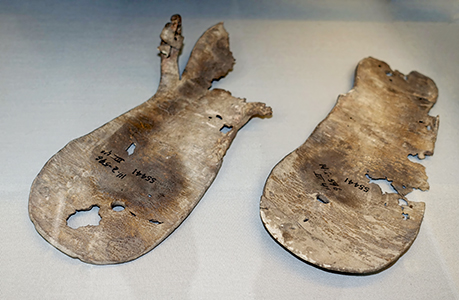
Sandals, 1 750 BC - 1 450 BC.
The dry conditions of the burial in which these sandals were found meant they dessicated rapidly, and so are remarkably well preserved. Made from a single piece of leather, the soles have a hole for attaching a leather strap. This passed over the instep to secure the sandal on the foot.
Length 237 mm, width 94 mm.
Catalog: Kerma, Grave K III, EA55441
Photo: Don Hitchcock 2018
Source and text: Original, card at the British Museum, http://www.britishmuseum.org/, © Trustees of the British Museum, CC BY-NC-SA 4.0
The heartland of the Kush was the area along the Nile from above the first cataract to below the sixth cataract.
Photo: Adapted from a poster at the British Museum, © Trustees of the British Museum, CC BY-NC-SA 4.0
Rephotography: Don Hitchcock 2015
Text: Poster at the British Museum, http://www.britishmuseum.org/, © Trustees of the British Museum, CC BY-NC-SA 4.0
Egyptian Imperialism in Nubia
Circa 1 560 - 1 070 BC.The Egyptians of the early New Kingdom broke the power of Kush and took possession of all Nubian lands as far as the Fourth Cataract. Nubian resources were intensively exploited as part of the Egyptian empire. Egyptian texts record military activity in Nubia under many of the pharaohs of the New Kingdom. The independence of Kerma was probably terminated by the campaigns of Thutmose I about 1 500 BC.
The newly won territory was divided into two provinces: Wawat (Lower Nubia) and Kush (Upper Nubia). An Egyptian colonial government was established, headed by a viceroy known as 'the King's son of Kush'. His duties included running the civil administration, supervising the gold mines and collecting the raw materials and slaves sent in large quantities every year as tribute to Egypt.
Many native inhabitants were recruited into Egyptian armies or employed as labourers on Egyptian civil and religious estates. There may have been a deliberate policy of cultural indoctrination which undermined the Nubians' ethnic individuality. Besides adopting Egyptian styles of dress, many of the Nubians embraced the language, religion and forms of aesthetic expression of their overlords. A section of the community, however, continued to practise traditional Nubian customs.
Principal Egyptian sites and political divisions of Nubia between 1 560 BC and 1 070 BC
Map and text: Poster, British Museum, © Trustees of the British Museum, CC BY-NC-SA 4.0
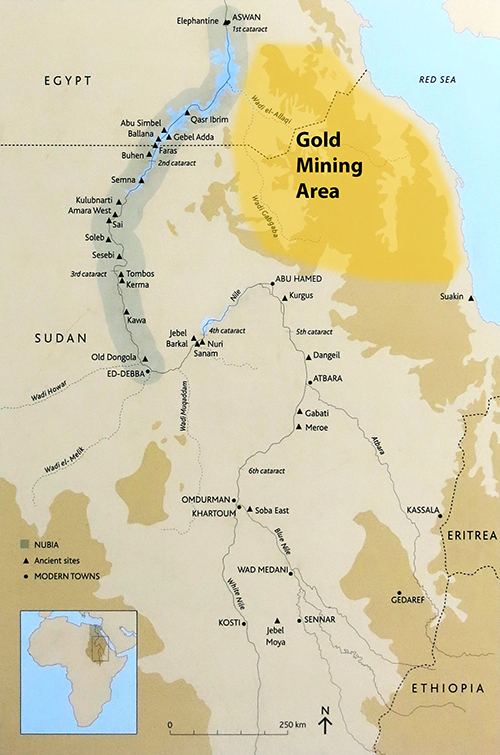
Base map: Poster, British Museum, © Trustees of the British Museum, CC BY-NC-SA 4.0
Text: Card at the British Museum, © Trustees of the British Museum, CC BY-NC-SA 4.0
Gold Mining areas: adapted from https://thinkafrica.net/the-kingdom-of-kerma-2500-1500-bc/
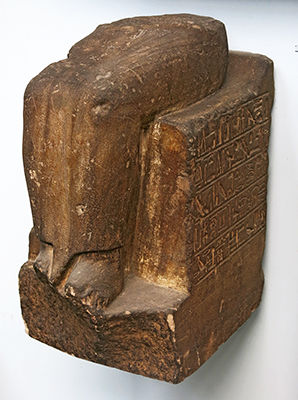
Eighteenth Dynasty: 1 550 BC - 1 292 BC
Ahmose-Turi
Lower half of a sandstone seated statue of Ahmose-Turi from Kerma, Circa 1530 BC.
Ahmose-Turi was viceroy of Kush under Pharaohs Amenhotep I and Thutmose I.
The hieroglyphic inscription on the sides of the throne invoke the gods Osiris, Horus Lord of Buhen and Dedwen (a native Nubian god), and gives the names of Ahmose' s parents.
Abyssinia, or Ethiopia, was known as Kush to the ancient Egyptians.
Catalog: EA1279
Photo: Don Hitchcock 2015
Source: Original, British Museum
Text: Card at the British Museum, © Trustees of the British Museum, CC BY-NC-SA 4.0
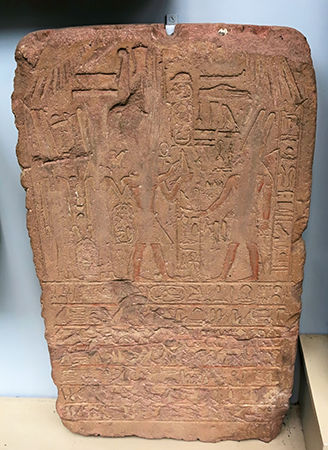
Eighteenth Dynasty: 1 550 BC - 1 292 BC
Amenhotep I
Sandstone stela dated to Year 8 of Pharaoh Amenhotep I, from Qasr Ibrim, Lower Nubia, now part of southern Egypt, circa 1 530 BC.
The scene shows the king making offerings to the god Horus of Miam (modern-day Aniba).
( Note that the god is wearing the double plumed headdress of the god Amun - Don )
He is accompanied by his mother, Queen Ahmose-Nefertary, and a second royal female, possibly his wife Queen Merytamun (whose name appears to have been excised and later inaccurately restored as Ahmose-Nefertary).
Below is a hieroglyphic text boasting of the power of the pharaoh over foreign lands.
Catalog: EA1835
Photo: Don Hitchcock 2015
Source: Original, British Museum
Text: Card at the British Museum, © Trustees of the British Museum, CC BY-NC-SA 4.0
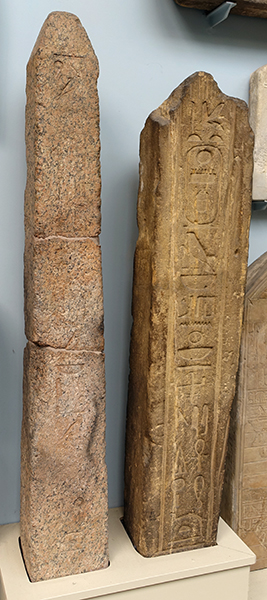
Eighteenth Dynasty: 1 550 BC - 1 292 BC
Queen Hatshepsut
(left) Pink granite obelisk of Queen Hatshepsut, early 1 400s BC, from Qasr Ibrim.
On one side it is inscribed with the names of the queen described as 'beloved of Horus, Lord of Miam (modern-day Aniba), living forever like Ra'. The names were later erased as an attempt to remove her memory from history.
Catalog: EA1834
(right) Sandstone door-jamb with the name of Pharaoh Thutmose Ill, from Buhen, about 1 470 BC.
The door-jamb bears an incised hieroglyphic text on the front, including the name of the pharaoh, who is described as 'beloved of the god Horus Lord of Buhen'.
Catalog: EA1019
Photo: Don Hitchcock 2018
Source: Original, British Museum
Text: Card with the display at the British Museum, © Trustees of the British Museum, CC BY-NC-SA 4.0, http://www.britishmuseum.org/
Eighteenth Dynasty: 1 550 BC - 1 292 BC
Sebekhotep
Wall painting from an Egyptian tomb showing the presentation of African products to the pharaoh during the 18th Dynasty, circa 1400 BC, from the tomb-chapel of Sebekhotep at Thebes, TT63, during the rule of Thutmose IV.
The two fragments formed part of a large scene in which Africans and people from Western Asia are shown presenting the products of their lands to the Egyptian king. The men of the south are painted brown or black, and wear large earrings and animal skin kilts. Their offerings include gold nuggets and rings, ebony logs, a monkey, a baboon, giraffe tails and a leopard skin. The last figure carries a tray of reddish objects, probably pieces of red jasper.
Nubia appears to have supported only a small population compared to that of Egypt. The ancient Nubians shared a broadly common ethnic background with the Egyptians, but their physical characteristics showed variations of skin colour, physiognomhy and skeletal proportion. The distinctive features and the elaborate costume of the Nubians were carefully represented by Egyptian artists. In Egyptian art Nubians can easily be recognised by their dark skin, feathers worn in the hair, large earrings and leopard-skin kilts.
The languages spoken by the Egyptians and Nubians were different, Ancient Egyptian belonging to the Afro-Asiatic group and Nubian to the Nilo-Saharan family.
EA921: Part of tomb wall, made of plaster on mud. Painted representation of Nubians offering gold nuggets and rings to the king (not seen), with a cornice above.
Height: 710 mm, width 965 mm.
EA922: Part of tomb wall showing Nubians bringing tribute from the south to Pharaoh. The figure at the front carries interlocking gold rings over one arm; the man behind bears ebony logs on his shoulder and a giraffe's tail in one hand. The third figure carries a leopard skin and a basket full of chunks of red jasper; a monkey perches behind his head. All three wear earrings.
Height 740 mm, width 610 mm.
Catalog: EA921, EA922
Photo: Don Hitchcock 2018
Source: Original, British Museum
Text: Card with the display at the British Museum, http://www.britishmuseum.org/, © Trustees of the British Museum, CC BY-NC-SA 4.0
Nubian Mercenaries
Nubian soldiers were renowned archers, and Egyptian Pharaohs often used Nubians as bowmen in their armies as mercenaries.
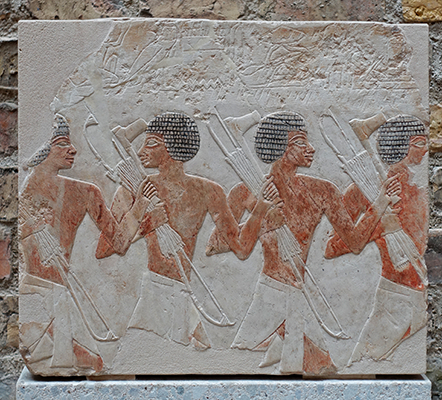
Eighteenth Dynasty: 1 550 BC - 1 292 BC
Fragments of reliefs from the tomb of Hatshepsut: Egyptian soldiers and Nubian mercenaries, circa 1470 BC.
The tomb of Hatshepsut dates from the 18th dynasty and is the best preserved temple in Deir el-Bahari on the west bank of the Nile at Thebes.
(top, ÄM 18542) 315 x 425 x 65 mm.
The relief comes from the Temple of Queen Hatshepsut in Deir el-Bahari and shows a series of soldiers who are participating in a procession. They are armed with throwing sticks and axes, and carry olive branches. One of the soldiers holds a standard, on which decorated horses are to be seen, and which indicates the troop the men are part of.
(middle, ÄM 14507), 330 x 585 mm
(bottom, ÄM 14141) The soldiers in this panel are armed with axes and bows and arrows.
Catalog: Painted Limestone, ÄM 18542, ÄM 14507, ÄM 14141
Photo: Don Hitchcock 2015, 2018
Source: Original, Staatliche Museen zu Berlin, Neues Museum, Germany
Text: © Card at the Staatliche Museen zu Berlin, F. Seyfried at http://www.smb-digital.de/ (CC BY-NC-SA 3.0 DE)
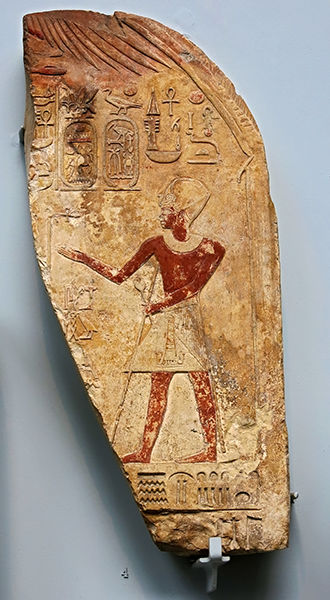
Eighteenth Dynasty: 1 550 BC - 1 292 BC
Thutmose III
Part of a painted limestone stela with Pharaoh Thutmose III making offerings to the god Horus, who will have been depicted on the missing left side of the stone.
From Wadi Halfa, Northern Sudan, circa 1 470 BC.
Catalog: EA1021
Photo: Don Hitchcock 2015
Source: Original, British Museum
Text: Card at the British Museum, © Trustees of the British Museum, CC BY-NC-SA 4.0
Eighteenth Dynasty: 1 550 BC - 1 292 BC
King Amenhotep III as a lion
Reign of Amenhotep III (circa 1 388 - 1 350 BC)
The statue and its pair guarded a temple at Soleb, Upper Nubia. Built in the heart of Kush, a land where many Egyptians settled, this was their largest temple on foreign soil. In it they worshipped the supreme god Amun-Ra and the king, deified as 'lord of Nubia'. The lions represent Amenhotep himself.
Amenhotep's names are inscribed on the base. In the third century BC the Kushite king Amanislo added his names to the lion's chest. He moved both lions further south to Napata.
Catalog: Napata (Gebel Barkal, Sudan); originally from Soleb (Sudan), granite, EA1
Photo: Don Hitchcock 2018
Source: Original, British Museum
Text: Card with the display at the British Museum, © Trustees of the British Museum, CC BY-NC-SA 4.0, http://www.britishmuseum.org/
Eighteenth Dynasty: 1 550 BC - 1 292 BC
Usersatet from Kush
Sandstone stela of Usersatet, an Egyptian Viceroy of Kush, from Wadi Halfa, circa 1 430 BC. Abyssinia, or Ethiopia, was known as Kush to the ancient Egyptians.
Usersatet makes offerings to the god Thoth, Lord of Ta-Seti (Nubia). Below is a funerary prayer to Thoth. Usersatet served under Pharaoh Amenhotep II.
Catalog: Sandstone, Wadi Halfa, EA623
Photo (left): Don Hitchcock 2015
Photo (right): © Trustees of the British Museum, CC BY-NC-SA 4.0
Source: Original, British Museum
Text: Card with the display at the British Museum, © Trustees of the British Museum, CC BY-NC-SA 4.0
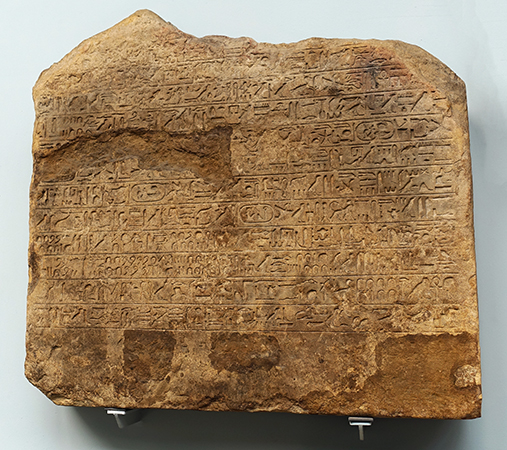
Eighteenth Dynasty: 1 550 BC - 1 292 BC
Merymose
Sandstone stela of Merymose: describing the campaign of Merymose against the Nubians of Ibhet in thirteen lines of incised hieroglyphic text. Several lines from the beginning of the inscription are missing and the whole of the upper portion is badly mutilated and weathered. The greater part of the last half of the sixth and seventh lines is destroyed and the ends of many others are damaged.
Sandstone stela (stone slab) of the Egyptian Viceroy of Kush, Merymose, from Semna, circa 1 400 BC. Abyssinia, or Ethiopia, was known as Kush to the ancient Egyptians.
A hieroglyphic text describes his campaign against the Nubians of lbha. Merymose served under Pharaoh Amenhotep III.
Catalog: EA657
Photo: Don Hitchcock 2018
Source: Original, British Museum
Text: Card with the display at the British Museum, http://www.britishmuseum.org/, © Trustees of the British Museum, CC BY-NC-SA 4.0
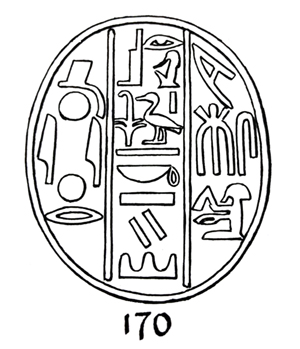
Eighteenth Dynasty: 1 550 BC - 1 292 BC
Merymose
Funerary cone for the tomb facade decoration of Merymose.
Circa 1 350 BC.
Used as architectural decoration, funerary cones were arranged along the upper edge of the facades of private tombs at Thebes.
( These two cones show identical hieroglyphs, and indicate that they are the equivalent of a Pharaoh's cartouche, an honour awarded since Merymose was viceroy of Kush, the pharaoh's representative.
The cartouche drawing is labelled as being that of Merymose - Don )
Funerary cones were small cones made from (fired) clay that were used in ancient Egypt, almost exclusively in the Theban Necropolis. The items were placed over the entrance of the chapel of a tomb. Early examples have been found from the Eleventh Dynasty. However, they are generally undecorated. During the New Kingdom, the cones were smaller in size and inscribed in hieroglyphs with the title and name of the tomb owner, often with a short prayer. The exact purpose of the cones is unknown, but hypotheses exist that they variously served as passports, architectural features, and symbolic offerings, among others.
Merymose, also Mermose or Merimes, was a Viceroy of Kush under Amenhotep III. He served for almost the entire four decades of that reign. He was entombed in Theban tomb 383.
Merymose likely accompanied Amenhotep III in year 5 on his campaign against Kush. It is possible that at a later time Merymose led a campaign against the people of an area called Ibhet. The people of Ibhet had resisted Egyptian domination and may have even attacked some Egyptian interests. Merymose led an attack against the Nubians. He killed 312 Nubians and captured 740 prisoners.
Colour photo top left: Inv. no. 1929 (probably signed Kestner)
Photo: Don Hitchcock 2018
Source and text: Original, Museum August Kestner, Hannover
Black and white photo top right: Funerary cone of the King's Son of Kush Merymose, www.metmuseum.org/, Public Domain
Cartouche Drawing: Macadam and Davies, 'Corpus of Inscribed Funerary Cones', Norman de Garis Davies (1865–5 November 1941), M. F. Laming MacAdam, 1957, #170.
Additional text: Wikipedia
Eighteenth Dynasty: 1 550 BC - 1 292 BC
Sarcophagus of Merymose
Reign of Amenhotep III, circa 1 390 BC - 1 352 BC.
Merymose's mummy lay inside this sarcophagus, which was itself contained within two larger sarcophagi. Protective spells and figures of deities cover all surfaces. The sky goddess Nut spreads her wings on the chest. The goddess Nephthys protects the body at the head end, as does her sister Isis at the foot end. The bands of inscription echo the bandages that enveloped the mummy.
Merymose was a 'King's Son of Kush', a viceroy ruling the whole of conquered Nubia (then known as Wawat and Kush). Such officials were never true sons of the pharaoh, but they were subservient to him alone. Merymose was in office under Amenhotep III, so his reponsibilities included enabling the construction of the king's great temple at Soleb, which was to house the magnificent lion statues seen at the south end of this gallery. The temple's decoration shows Merymose attending Amenhotep's first regnal jubilee (the sed festival).
Produced circa 1 380 BC.
Length 197 cm, width 60 cm, depth 60 cm
Catalog: Granodiorite, Qena (Governorate): Luxor West Bank (Thebes): Qurnet Murai (Thebes): Tomb of Merymose (Thebes) tomb of Merymose, EA1001
Photo: Don Hitchcock 2018
Source: Original, British Museum
Text: Card with the display at the British Museum, www.britishmuseum.org/, © Trustees of the British Museum, CC BY-NC-SA 4.0
Eighteenth Dynasty: 1 550 BC - 1 292 BC
Sarcophagus of Merymose
Reign of Amenhotep III, circa 1 390 BC - 1 352 BC.
Granodiorite inner-sarcophagus of Merymose: the coffin, which is anthropoid in shape, is decorated on the outside with figures and inscriptions carved in low relief. On the lid the deceased is represented wearing a long braided wig, short beard, and a bead collar with falcon-head terminals. On the left side beneath the collar are the two 'wedjat'-eyes.
A figure of Nut, kneeling with arms and wings outstretched, spans the chest. On the crown of the head Nephthys, with arms uplifted, kneels on the 'nbw'-sign. In front of and behind her is carved an inscription in three vertical columns. Beneath the feet is a figure of Isis, standing with arms uplifted between two vertical columns of inscription.
On the lid inscriptions are carved in vertical and horizontal bands (the latter being continued on the lower section) to represent the principal bandages. On the lower section, in addition to the continuation of the horizontal bands, are figures of gods, each accompanied by an inscription. Two figures of Thoth, one at the head-end and one at the foot, a figure of Anubis and figures of two of the Sons of Horus, each accompanied by an inscription, were originally carved on both the right and left sides.
The continuation of the horizontal bands of inscription from the lid separated the various figures and their inscriptions from one another so as to form five divisions. On the end beneath the feet is a 'djed' column. On the right side, only two fragments, one containing the whole of the first division and part of the second and the other containing the inscription of the third division, have been preserved.
At the first division, in front of a figure of Thoth is inscribed in two vertical columns. At the second division, portions of two of the three vertical columns of inscription which preceded the figure of Imsety are preserved. At the third division, the three vertical columns of inscription which preceded the figure of Anubis are preserved. On the left side at the first division, the space in front of a figure of Thoth is inscribed in two vertical columns.
At the second division, in front of a figure of Hapy is inscribed in three vertical columns. At the third division, in front of a figure of Anubis is inscribed in three vertical columns. At the fourth division, in front of a figure of Qebhsenuef is inscribed in three vertical columns. At the fifth division, in front of a figure of Thoth is inscribed in two vertical columns. The coffin has been reassembled from the numerous pieces into which it was broken. The lid is almost complete, but considerable portions of the lower section are missing.
Catalog: Granodiorite, Qena (Governorate): Luxor West Bank (Thebes): Qurnet Murai (Thebes): Tomb of Merymose (Thebes) tomb of Merymose, EA1001
Photo: Don Hitchcock 2018
Source: Original, British Museum
Text: Card with the display at the British Museum, www.britishmuseum.org/, © Trustees of the British Museum, CC BY-NC-SA 4.0
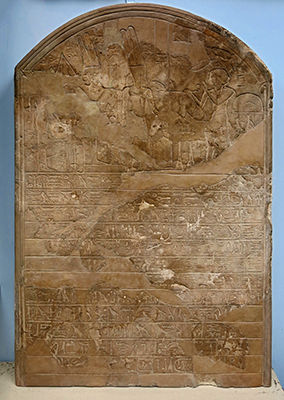
Nineteenth Dynasty: 1 292 BC - 1 187 BC
Sandstone stela of Pharaoh Seti I (also Sety I), circa 1 310 BC
This fragmentary round-topped stela consists of twelve horizontal lines of text below a main scene. All texts are incised and all figures are in sunk relief. Sety I is shown on the right of the scene with one arm raised and the other holding an incense-burner. In front of him are two altars on which rest water-pots cooled by lotus-flowers. Facing him are Amun-Ra, Min-Kamutef and Isis. Condition is fair, though incomplete. This stela has been broken into several fragments and has been restored in modern times. The surviving portions are worn and chipped in places. There are no traces of colour. The hieroglyphs describe Seti's decision to endow the temple at Buhen with offerings, priests and servants.
Height: 1265 mm, width 830 mm.
Buhen was an ancient Egyptian settlement situated on the West bank of the Nile below (to the North of) the Second Cataract in what is now Northern State, Sudan. It is now submerged in Lake Nasser, Sudan. On the East bank, across the river, there was another ancient settlement, where the town of Wadi Halfa now stands. The earliest mention of Buhen comes from stelae dating to the reign of Senusret I. Buhen is also the earliest known Egyptian settlement in the land of Nubia.
Catalog: From Buhen, EA1189
Photo: Don Hitchcock 2015
Source: Original, British Museum
Text: Card with the display at the British Museum, http://www.britishmuseum.org/, © Trustees of the British Museum, CC BY-NC-SA 4.0
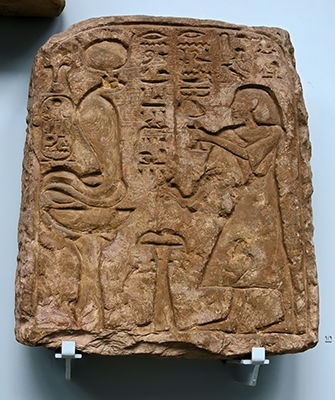
Nineteenth Dynasty: 1 292 BC - 1 187 BC
Setau
Sandstone stela of the Egyptian Viceroy of Kush, Setau, from Wadi Halfa, 1200s BC (19th Dynasty).
Abyssinia, or Ethiopia, was known as Kush to the ancient Egyptians.
Setau is shown on the right pouring a libation over an altar and offering incense to the goddess Renenutet, represented as a serpent seated upon a 'neb' basket on a stand.
The cartouche with the name of Ramesses II is inscribed behind the goddess.
Behind her on the extreme left is a cartouche with the prenomen of Ramses II. All figures are in sunk relief and the texts are deeply incised. The relief is well preserved and there are no traces of colour.
Height: 530 mm, width 470 mm, thickness: 155 mm
The stela is from Wadi Halfa, a city in the Northern state of Sudan on the shores of 'Lake Nubia' (the Sudanese section of Lake Nasser) near the border with Egypt. It is the terminus of a rail line from Khartoum and the point where goods are transferred from rail to ferries going down the lake. The town is located amidst numerous ancient Nubian antiquities and was the focus of much archaeological work by teams seeking to save artefacts from the flooding caused by the completion of the Aswan Dam.
Archaeological evidence indicates that settlement has been in the area since ancient times, and during the Middle Kingdom period, the Egyptian colony of Buhen across the river existed until the Roman period.
Catalog: Sandstone, Wadi Halfa, EA1055
Photo: Don Hitchcock 2015
Source: Original, British Museum
Text: Card with the display at the British Museum, http://www.britishmuseum.org/, © Trustees of the British Museum, CC BY-NC-SA 4.0



Nineteenth Dynasty: 1 292 BC - 1 187 BC
Ramesses II
Photo: Don Hitchcock 2015, 2018
Source: Original, British Museum
Plaster cast of a relief from the temple of Belt el-Wall, Lower Nubia.
The cast depicts a military expedition by Ramesses II (left) and the presentation to the pharaoh of the produce of Nubia and the lands of tropical Africa (right).
On the left, Ramesses II (1279-1213 BC), followed by two of his sons, Amen-her-wenemef and Khaemwaset, is depicted charging against a body of Nubian bowmen, who are shown with black and brown complexions, dressed in leopard skin kilts, and wearing large earrings. A wounded warrior is escorted to a village.
On the right, Ramesses II, enthroned beneath a canopy, receives the produce of the southlands, presented by the viceroy Amenemope. These include bags of gold, gold rings, incense, elephant tusks, ebony logs, ostrich eggs and feathers, pelts, bows, hide-covered shields, fans and chairs.
The varied selection of live animals includes a lion, giraffe, ostrich, gazelle, leopard, monkeys, antelopes and dogs, as well as oxen with horns artificially deformed and decorated with miniature human heads and hands. Men, women and children are presented as servants and slaves.
The cast was made for Robert Hay by Joseph Bonomi in 1825. The colours were added by Bonomi and are based on the originals as observed by Bonomi and Arundale. The cast was repainted by Douglas Champion in 1952.
Photo: Don Hitchcock 2015, 2018
Source: Original, British Museum
Text: Card with the display at the British Museum, © Trustees of the British Museum, CC BY-NC-SA 4.0
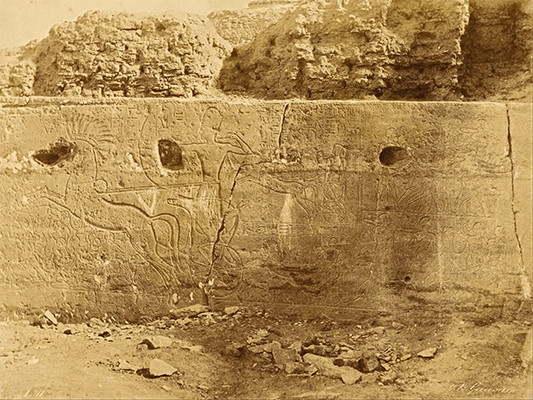
Nineteenth Dynasty: 1 292 BC - 1 187 BC
Temple of Beit el-Wali frieze
This is the earliest photograph of the Temple of Beit el-Wali frieze which celebrates the exploits of Ramesses II. It was taken at the very beginning of practical photography, in 1854, on salted paper, from a calotype negative. The original title is 'Bet-Oualli, Sculptures Historiques de la Paroi de Gauche'.
Dimensions: Height 230 mm, width 305 mm.
Photo: John Beasly Greene (American, born France, 1832 - 1856)
Permission: Public Domain
Text: adapted from Wikipedia
Made available by: Google Art Project
Salted paper technique
The salted paper technique was created in the mid-1830s by English scientist and inventor Henry Fox Talbot. He made what he called 'sensitive paper' for 'photogenic drawing' by wetting a sheet of writing paper with a weak solution of ordinary table salt (sodium chloride), blotting and drying it, then brushing one side with a strong solution of silver nitrate. This produced a tenacious coating of silver chloride in an especially light-sensitive chemical condition. The paper darkened where it was exposed to light. When the darkening was judged to be sufficient, the exposure was ended and the result was stabilized by applying a strong solution of salt, which altered the chemical balance and made the paper only slightly sensitive to additional exposure. In 1839, washing with a solution of sodium thiosulfate ('hypo') was found to be the most effective way to make the results truly light-fast.Text above: Wikipedia
Twentieth Dynasty: 1 187 BC - 1 077 BC
Hori
Sandstone lintel of the viceroy Hori, a fragment of a large lintel consisting of the torus roll and cornice with incised scenes and texts. In the centre of the lintel are the cartouches of Ramses III. On the left side the viceroy of Kush Hori and the mayor of Buhen, Harmose kneel in adoration.
Several columns of text are inscribed with a prayer to the king on their behalf. The lintel is battered about the edges, with the loss of the upper left corner and the right side which was recovered separately. The surface is worn in places so that the text is difficult to interpret. There are no traces of colour. The Egyptian Viceroy of Kush, Hod, and the mayor of Buhen, Harmose, kneel in adoration. A similar scene would have been carved on the right side.
A portion of the right side of the lintel was discovered separately and is now unlocated (Smith, 2006)
From Buhen, early 1100s BC (20th Dynasty) ( i.e. during the reign of Ramesses III, now thought to be March 1186 to April 1155 BC - Don )
Statements of adoration for the pharaoh are given in the columns of hieroglyphs flanking the royal cartouches.
Height 534 mm, length 965 mm (max).
Catalog: EA66667
Photo: Don Hitchcock 2015
Source: Original, British Museum
Drawing: Unknown artist, http://www.britishmuseum.org/,© Trustees of the British Museum, CC BY-NC-SA 4.0
Text: Card with the display at the British Museum, http://www.britishmuseum.org/,© Trustees of the British Museum, CC BY-NC-SA 4.0
Additional text: Wikipedia
The Kush Kingdoms, centred on Meroë
Egypt's rival on the Nile, 1070 BC to 656 BC
Around 747 BC the Kushite kings began to extend their control into Egypt, where they became known as the 25th Dynasty, 746 BC - 656 BC. It was a major power before the Roman Empire even existed. At its height the vast Kushite Empire united the Nile Valley from Khartoum in modern central Sudan to the Mediterranean. The army was vital in maintaining the Kushite state, although attacks still occurred, including an invasion in 24 BC by Gaius Petronius, the Roman prefect of Egypt.Text above: adapted from Wikipedia
The Kingdom of Kush, or Kush, was an ancient kingdom in Nubia, located at the confluences of the Blue Nile, White Nile and River Atbara in what is now Sudan and South Sudan. The Kushite era of rule in Nubia was established after the Bronze Age collapse and the disintegration of the New Kingdom of Egypt. Kush was centered at Napata during its early phase. After King Kashta ('the Kushite') invaded Egypt in the 8th century BC, the Kushite emperors ruled as pharaohs of the Twenty-fifth dynasty of Egypt for a century, until they were expelled by the Assyrians under the rule of Esarhaddon. During classical antiquity, the Kushite imperial capital was located at Meroë. In early Greek geography, the Meroitic kingdom was known as Aethiopia. The Kushite kingdom with its capital at Meroë persisted until the 4th century AD, when it weakened and disintegrated due to internal rebellion. The Kushite capital was eventually captured and burnt to the ground by the Kingdom of Aksum.
The relative positions of Napata and Meroë, the heartland of of the 25th Dynasty Kushite Empire. The important sites of Kerma and Kawa are also shown.
Napata
Napata was a city of ancient Kush at the fourth cataract of the Nile, dammed in modern times as in the image above, near the site of modern Karima, in Sudan. It was the southernmost permanent settlement in the New Kingdom of Egypt (16th–11th centuries BC) and home to Jebel Barkal, the main Kushite cult centre of Amun.
It was the sometime capital of the Twenty-fifth Dynasty of Egypt and, after its fall in 663 BC, of the Kingdom of Kush. In 593 BC, it was sacked by the Egyptians and the Kushite capital was relocated to Meroë. Even after this move, Napata continued to be the kingdom's primary religious centre. The city was sacked a second time by the Romans in 23 BC but was rebuilt and continued as an important centre of the Amun cult.
The terms 'Napata' or 'Napatan period' can also refer to the Kushite polity from its rise around 750 BC until 270 BC, when Napata finally lost its symbolic significance as the location of royal burials to Meroë. The subsequent period of Kushite history is called Meroitic down to the collapse of the kingdom.
Meroë
Meroë was an ancient city on the east bank of the Nile about 6 km north-east of the Kabushiya station near Shendi, Sudan, approximately 200 km north-east of Khartoum. This city was the capital of the Kingdom of Kush for several centuries from around 590 BC, until its collapse in the fourth century AD. The Kushitic Kingdom of Meroë gave its name to the 'Island of Meroë', which was the modern region of Butana, a region bounded by the Nile (from the Atbarah River to Khartoum), the Atbarah and the Blue Nile.
The Kingdom of Kush which housed the city of Meroë represents one of a series of early states located within the middle Nile. It was of the earliest and most impressive states found on the African continent (along with Ancient Egypt). The site of the city of Meroë is marked by more than two hundred pyramids in three groups, of which many are in ruins. They have the distinctive size and proportions of Nubian pyramids.
Kerma
Kerma was the capital city of the Kerma culture, which was in existence in present-day Sudan by 3 500 BC. Kerma is one of the largest archaeological sites in ancient Nubia. It has produced decades of extensive excavations and research, including thousands of graves and tombs and the residential quarters of the main city surrounding the Western/Lower Deffufa, a massive tomb structure close to the river. The cemetery of Upper/Eastern Deffufa is a few kilometres away from the river.
Kawa
Kawa is located between the Third and Fourth Cataracts of the Nile on the east bank of the river, across from Dongola. In ancient times it was the site of several temples to the Egyptian god Amun, built by the Egyptian rulers Amenhotep III and Tutankhamun, and by Taharqa and other Kushite kings.
Photo: Google Maps
Text: Wikipedia
Timeline for Sudan and Nubia

Timeline from prehistoric Sudan and Nubia to Sudan and Nubia today.
Photo: Poster at the British Museum, © Trustees of the British Museum, CC BY-NC-SA 4.0
Rephotography: Don Hitchcock 2015
Text: Poster at the British Museum, http://www.britishmuseum.org/, © Trustees of the British Museum, CC BY-NC-SA 4.0
The end of the 25th Dynasty - the Napatan period: 656 BC - 270 BC
After the retreat of Tantamani to Napata in 656 BC, the Kushites no longer controlled all of Egypt, and this marks the end of the 25th Dynasty.
The Kings of Kush ruled over Napata and Meroë, just as before the conquest of Egypt, while northern Egypt was ruled by the 26th Dynasty, of which the first king was Psamtik I.
In 593 BC, Napata was sacked by the Egyptians and the Kushite capital was relocated to Meroë. Even after this move, Napata continued to be the kingdom's primary religious centre. The city was sacked a second time by the Romans in 23 BC but was rebuilt and continued as an important centre of the Amun cult.
Text above: Wikipedia
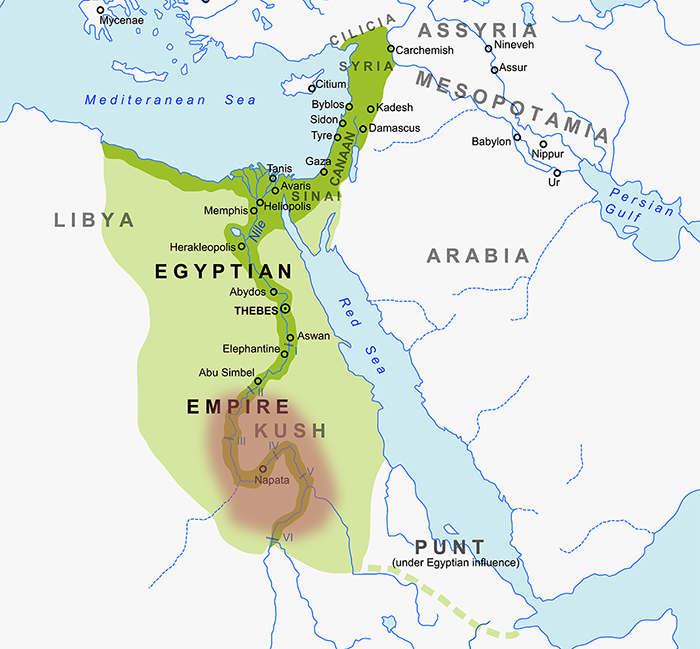
The Kushite homelands, centred on Napata, during the Napatan Period, shown in brown shading.
Base Map: The maximum extent of the New Kingdom during the Eighteenth, Nineteenth, and Twentieth dynasties of Egypt by Andrei Nacu and Jeff Dahl
Permission: Creative Commons Attribution-Share Alike 3.0 Unported license.
Permission: Creative Commons Attribution-Share Alike 4.0 International license.
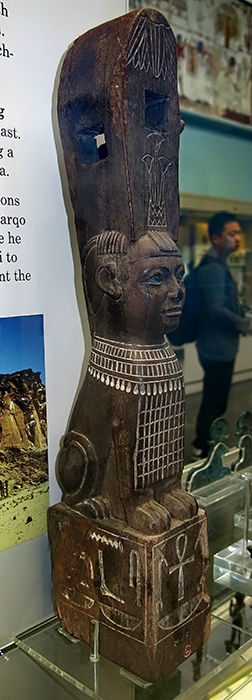


Napatan period: circa 656 BC - 270 BC
Wooden leg of a bed or chair
The leg is carved in the form of a sphinx wearing a cap-like headdress of Nubian type. The eyes were originally inlaid.
Catalog: EA24656
Photo: Don Hitchcock 2015
Source: Original, British Museum
Text: Card with the display at the British Museum, http://www.britishmuseum.org/, © Trustees of the British Museum, CC BY-NC-SA 4.0
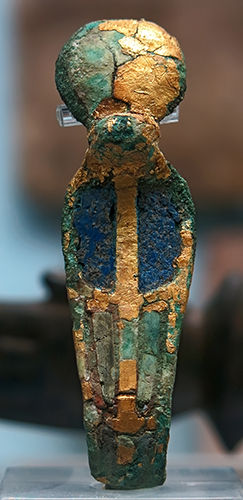
Napatan period: circa 656 BC - 270 BC
Uraeus
Gilded and inlaid bronze uraeus.
From Kawa, Temple 'A'
The uraeus serpent worn on the king's brow represented the patron goddess of Lower Egypt.
Gilded copper alloy fitting from a shrine in form of a uraeus with the breast inlaid with blue and green glass (most remaining); suspension loop behind the sun disc; tang below the tail.
Height 102 mm, width 25 mm.
Catalog: EA63593
Photo: Don Hitchcock 2015
Source: Original, British Museum
Text: Card with the display at the British Museum, http://www.britishmuseum.org/, © Trustees of the British Museum, CC BY-NC-SA 4.0
Napatan period: circa 656 BC - 270 BC
Headdress
Gilded bronze divine headdress comprising solar disc and horns.
From Kawa, Temple 'T'
Napata was a city-state of ancient Nubia on the west bank of the Nile, at the present site of Karima, Northern Sudan.
Catalog: EA63592
Photo: Don Hitchcock 2015
Source: Original, British Museum
Text: Card with the display at the British Museum, © Trustees of the British Museum, CC BY-NC-SA 4.0
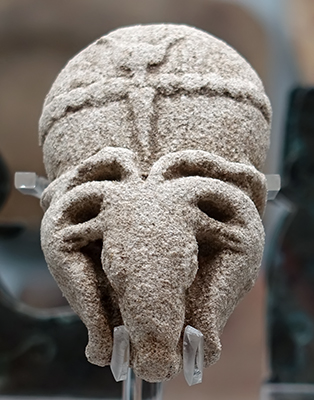
Napatan period: circa 656 BC - 270 BC
Ornament
Sandstone ornament in the form of a ram's head.
From Kawa, Temple 'T'
Sandstone amulet in the form of a ram's head decorated with a horned sun-disc and inscribed with Meroitic hieroglyphs.
Catalog: EA63611
Photo: Don Hitchcock 2018
Source: Original, British Museum
Text: Card with the display at the British Museum, http://www.britishmuseum.org/, © Trustees of the British Museum, CC BY-NC-SA 4.0
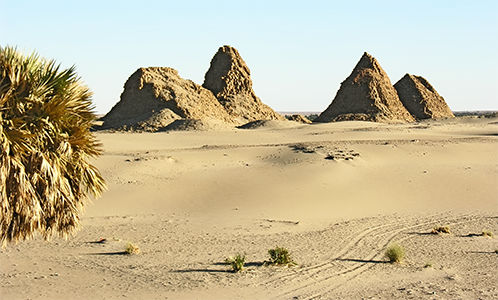
Kushite royal cemetery at Nuri, Sudan.
Photo: © SARS Archive.
Source: https://blog.britishmuseum.org/category/egypt-and-sudan/
Text: https://blog.britishmuseum.org/category/egypt-and-sudan/
Additional text: Wikipedia
The Kushite royal pyramids at Nuri in Northern Sudan, as above, where 21 kings, 52 queens and princes were buried.
Rephotography: Don Hitchcock 2018
Source: Poster, British Museum
Text: Card with the display at the British Museum, © Trustees of the British Museum, CC BY-NC-SA 4.0

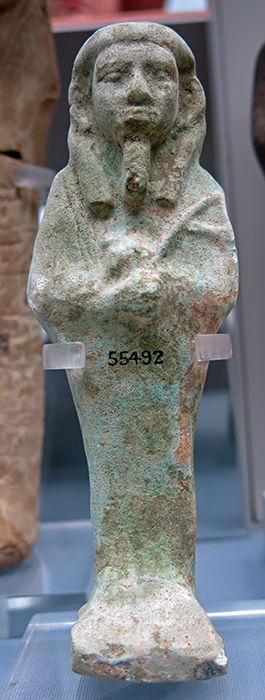
Napatan period: circa 656 BC - 270 BC
King Atlanersa
(left) Colossal granite statue of King Atlanersa from his Osiris-Dedwen temple at Jebel Barkal, now in the National Museum of Sudan.
(right) Faience shabti of King Atlanersa in the British Museum.
Atlanersa (also Atlanarsa) was a Kushite ruler of the Napatan kingdom of Nubia, reigning for about a decade in the mid-7th century BC. He was the successor of Tantamani, the last ruler of the 25th Dynasty of Egypt, and possibly a son of Taharqa or less likely of Tantamani, while his mother was a queen whose name is only partially preserved.
Atlanersa's reign immediately followed the collapse of Nubian control over Egypt, which witnessed the Assyrian conquest of Egypt and then the beginning of the Late Period under Psamtik I. The same period also saw the progressive cultural integration of Egyptian beliefs by the Kushite civilization.
Atlanersa may have fathered his successor Senkamanisken with his consort Malotaral, although Senkamanisken could also be his brother. He built a pyramid in the necropolis of Nuri, now conjecturally believed to be Nuri 20 and may also have started a funerary chapel in the same necropolis, now called Nuri 500.
Atlanersa was the second Nubian king to build a pyramid in Nuri after Taharqa. The pyramid produced many small artefacts which are now on display in the Museum of Fine Arts in Boston, US. Atlanersa's most-prominent construction is his temple to the syncretic god Osiris-Dedwen in Jebel Barkal called B700, which he finished and had time to only partially decorate. This suggests that he died unexpectedly. The temple entrance was to be flanked with two colossal statues of the king, one of which was completed and set in place and is now in the National Museum of Sudan.
Faience shabti, height 149 mm, width 51 mm, depth 38 mm
Catalog: Nuri, EA55492
Photo (left): Matthias Gehricke
Permission: Creative Commons Attribution-Share Alike 4.0 International license.
Source: Colossal granite statue of Atlanersa from his Osiris-Dedwen temple at Jebel Barkal, now in the National Museum of Sudan
Photo (right): Don Hitchcock 2015
Source: Original, British Museum
Text: Card with the display at the British Museum, http://www.britishmuseum.org/, © Trustees of the British Museum, CC BY-NC-SA 4.0
Additional text: Wikipedia
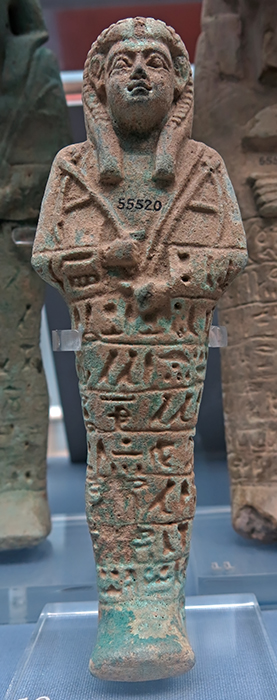
Napatan period: circa 656 BC - 270 BC
Queen Maletaral II
Faience shabti of Queen Maletaral II, a Nubian, wife of Atlanersa, mother of Senkamanisken, buried in Nuri 41.
Nubian, ruled from 555 BC - 542 BC.
Faience shabti, eight 177 mm, width 61 mm, depth 31 mm
Catalog: EA55520
Photo: Don Hitchcock 2015
Source: Original, British Museum
Text: Card with the display at the British Museum, http://www.britishmuseum.org/, © Trustees of the British Museum, CC BY-NC-SA 4.0
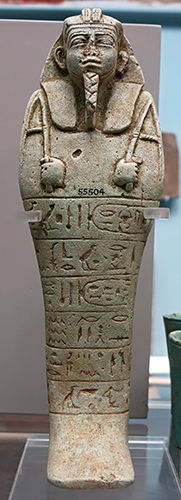
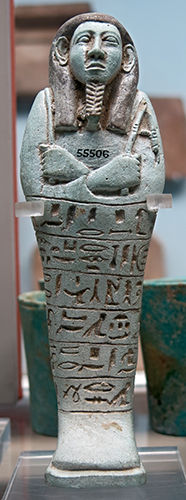
Napatan period: circa 656 BC - 270 BC
King Senkamanisken
Two faience shabtis of King Senkamanisken.
Napatan Period, circa 643 BC - 623 BC, from Nuri, pyramid Nu 3
(left) Glazed composition shabti of Senkamanisken, height 248 mm.
(right) Blue glazed composition shabti of Senkamanisken; black wig, height 178 mm.
Statues of Senkamanisken have been found buried or hidden in the Jebel Barkal, presumably due to Psamtik II's attack on Kush in 592 BC. A sphinx has also been found which was inscribed with his name. Objects bearing the name of this king have also been found in Meroë indicating that he placed a degree of importance to this site which would be the political capital of the Kushite kingdom after Psamtik II's sack of Napata in 592 BC.
Catalog (left to right): EA55504, EA55506
Photo: Don Hitchcock 2015
Source: Original, British Museum
Text: Card with the display at the British Museum, http://www.britishmuseum.org/, © Trustees of the British Museum, CC BY-NC-SA 4.0
Additional text: Wikipedia
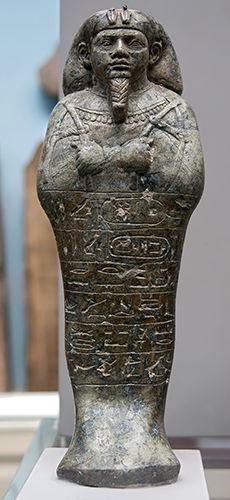
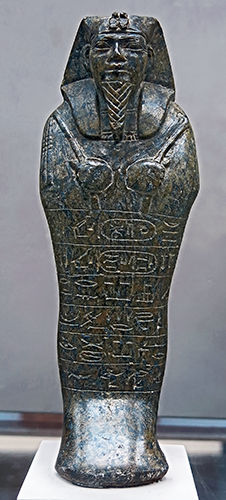
Napatan period: circa 656 BC - 270 BC
King Senkamanisken
Two steatite shabtis of King Senkamanisken.
Napatan Period, circa 643 BC - 623 BC, from Nuri, pyramid Nu 3.
Left to right: 197 mm high, 204 mm high.
Senkamanisken was a Nubian king who ruled from 640 to 620 BCE at Napata. He used titles based on those of the Egyptian pharaohs. He was married to Queen Nasalsa who bore him two sons: Anlamani and Aspelta. Both sons would ultimately assume the Nubian/Kushite throne after his death at Napata, Nubia's capital city. His pyramid is Nu. 3 in Nuri.
Catalog (left to right): EA55493, EA55494
Photo: Don Hitchcock 2015
Source: Original, British Museum
Text: Card with the display at the British Museum, http://www.britishmuseum.org/, © Trustees of the British Museum, CC BY-NC-SA 4.0
Additional text: Wikipedia
Napatan period: circa 656 BC - 270 BC
King Senkamanisken
Foundation deposit of King Senkamanisken, circa 643 BC 623 BC.
The tablets are made of copper, bronze, gold, jasper, lapis lazuli, faience, chaledony, and calcite.
Catalog: Nuri, pyramid Nu 3, EA55561
Photo: Don Hitchcock 2018
Source and text: Card with the display at the British Museum, © Trustees of the British Museum, CC BY-NC-SA 4.0
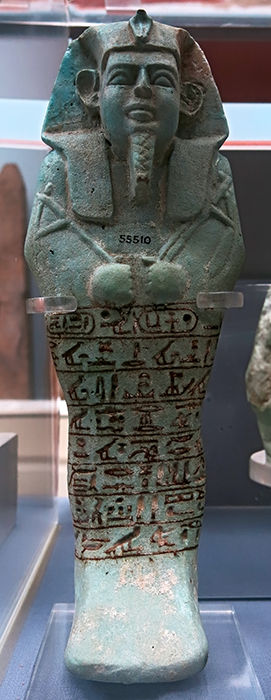
Napatan period: circa 656 BC - 270 BC
King Anlamani
Glazed composition, faience shabti of King Anlamani, Napatan Period, from Nuri, Pyramid Nu 6.
Circa 623 BC - 593 BC.
Height 26 cm.
Catalog: EA55510
Photo: Don Hitchcock 2015
Source: Original, British Museum
Text: Card with the display at the British Museum, http://www.britishmuseum.org/, © Trustees of the British Museum, CC BY-NC-SA 4.0
Napatan period: circa 656 BC - 270 BC
King Anlamani
Foundation deposit of King Aspelta, Napatan Period, from Nuri, Pyramid Nu 8.
The group includes model bricks and cartouche-plaques of faience, tablets of lead, copper, lapis lazuli, feldspar, jasper, chalcedony, calcite, and limestone, and a chalcedony cylinder carved with a screw thread.
Catalog: EA55564
Photo: Don Hitchcock 2018
Source: Original, British Museum
Text: Card with the display at the British Museum, http://www.britishmuseum.org/, © Trustees of the British Museum, CC BY-NC-SA 4.0
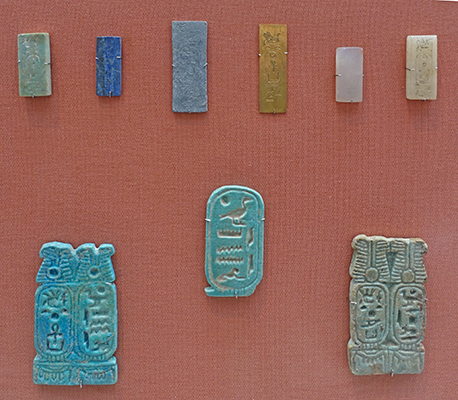
Napatan period: circa 656 BC - 270 BC
King Anlamani
Foundation deposit of King Anlamani, Napatan Period, from Nuri, Pyramid Nu 6.
The group includes two plaques giving the king's nomen and prenomen, another inscribed with the nomen alone, and small tablets made of gold, lead, lapis lazuli, feldspar, chalcedony, and calcite.
Catalog: EA55563
Photo: Don Hitchcock 2018
Source: Original, British Museum
Text: Card with the display at the British Museum, http://www.britishmuseum.org/, © Trustees of the British Museum, CC BY-NC-SA 4.0
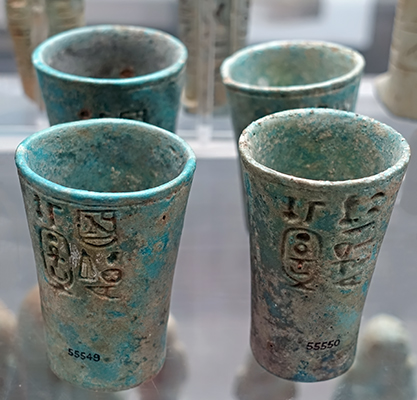
Napatan period: circa 656 BC - 270 BC
King Anlamani
Four faience cups from the foundation deposit of King Anlamani, circa 623 BC - 593 BC from Nuri, Pyramid Nu 6.
Catalog: EA55547-50
Photo: Don Hitchcock 2018
Source: Original, British Museum
Text: Card with the display at the British Museum, http://www.britishmuseum.org/, © Trustees of the British Museum, CC BY-NC-SA 4.0
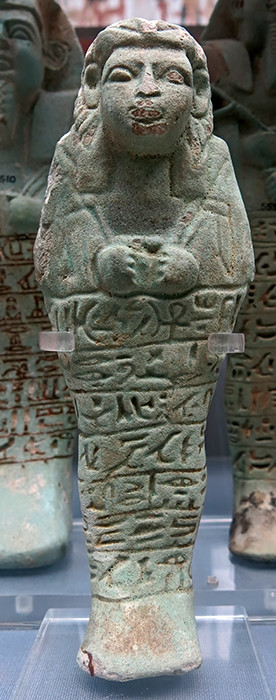
Napatan period: circa 656 BC - 270 BC
Queen Madiqen
Faience shabti of Queen Madiqen, wife of King Anlamani.
Napatan Period, circa 623 BC - 593 BC.
From Nuri, pyramid Nu 27, height 177 mm.
Catalog: EA55514
Photo: Don Hitchcock 2015
Source: Original, British Museum
Text: Card with the display at the British Museum, http://www.britishmuseum.org/, © Trustees of the British Museum, CC BY-NC-SA 4.0

Napatan period: circa 656 BC - 270 BC
Queen Atmataka
Faience shabti of Queen Atmataka.
Napatan Period, circa 623 BC - 593 BC.
From Nuri (Nubia), height 169 mm, width 48 mm, depth 28 mm.
Atmataka is named on the piece.
Catalog: EA55528
Photo: Don Hitchcock 2015
Source: Original, British Museum
Text: Card with the display at the British Museum, http://www.britishmuseum.org/, © Trustees of the British Museum, CC BY-NC-SA 4.0
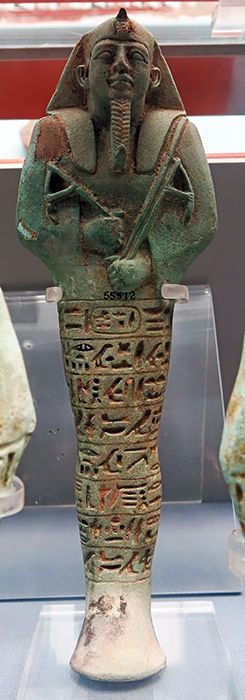
Napatan period: circa 656 BC - 270 BC
King Aspelta
Glazed composition faience shabti of King Aspelta, Napatan Period, from Nuri, Pyramid 6.
Circa 623 BC - 593 BC.
Height 273 mm.
Aspelta was a ruler of the kingdom of Kush, circa 600 BC – 580 BC).
Aspelta used titles based on those of the Egyptian Pharaohs.
Horus name: Neferkha ('Whose Appearances are Beautiful')
Nebty Name: Neferkha ('Whose Appearances are Beautiful')
Golden Horus Name: Userib ('Whose heart is strong')
Prenomen: Merykare ('Re is one whose ka is loved')
Nomen: Aspelta
More is known about him and his reign than most of the rulers of Kush. He left several stelae carved with accounts of his reign. He was the son of Senkamanisken and brother of Anlamani, who immediately preceded him.
According to his inscriptions, Aspelta was selected as ruler by a committee of twenty-four religious and military leaders. He then set out north to Napata to be selected as king by the gods and crowned. Another stele that might date from Aspelta's reign recounts how a group of priests were put to death, likely for conspiring against the king. In 592 BC, Kush was invaded by an Egyptian military expedition initiated by Pharaoh Psamtik II, perhaps because Aspelta posed a threat to this pharaoh's authority over Upper Egypt. The invaders sacked Napata, and some historians believe that because of this attack, Aspelta decided to move the Nubian capital to the more secure city of Meroe.
Aspelta's tomb was located at Nuri and is the second largest burial structure here. His tomb was excavated by George A. Reisner in 1916 and many items were discovered within it, most of which are now in the Museum of Fine Arts in Boston. The palace built by him and his brother was excavated by Reisner in 1920.
Catalog: EA55512
Photo: Don Hitchcock 2015
Source: Original, British Museum
Text: Card with the display at the British Museum, http://www.britishmuseum.org/, © Trustees of the British Museum, CC BY-NC-SA 4.0, Wikipedia
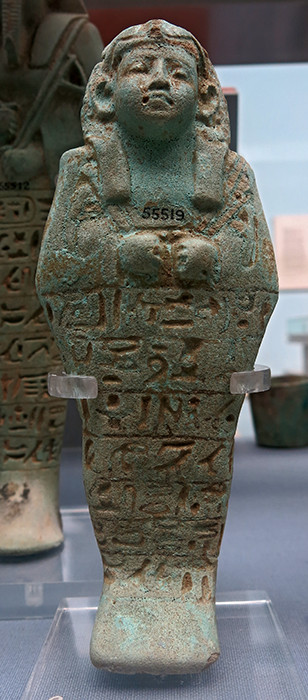
Napatan period: circa 656 BC - 270 BC
Queen Artaha
Faience shabti of Queen Artaha, wife of King Aspelta.
Napatan Period, circa 623 BC - 593 BC.
From Nuri, pyramid Nu 58, height 171 mm.
Catalog: EA55519
Photo: Don Hitchcock 2015
Source: Original, British Museum
Text: Card with the display at the British Museum, http://www.britishmuseum.org/, © Trustees of the British Museum, CC BY-NC-SA 4.0
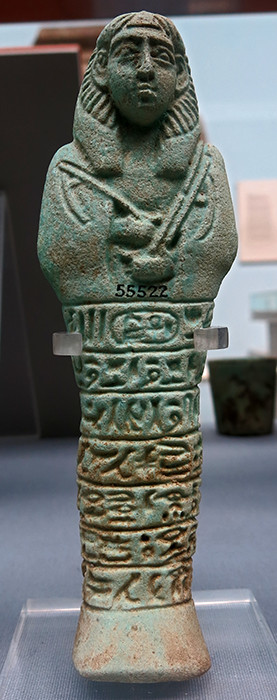
Napatan period: circa 656 BC - 270 BC
Queen Piankhher
Faience shabti of Queen Piankhher, wife of King Amtalqa.
Napatan Period, mid 6th century BC.
From Nuri, pyramid Nu 57, height 159 mm.
Catalog: EA55522
Photo: Don Hitchcock 2015
Source: Original, British Museum
Text: Card with the display at the British Museum, http://www.britishmuseum.org/, © Trustees of the British Museum, CC BY-NC-SA 4.0
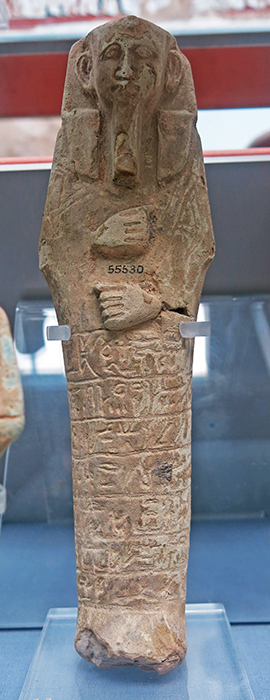
Napatan period: circa 656 BC - 270 BC
Malowiebamani
Faience shabti of Malowiebamani.
From the Tomb of Malowiebamani, Nuri.
Height 272 mm, width 76 mm, depth 50 mm.
Reign of Malowiebamani, 463 BC – 435 BC. Nuri, Pyramid 11.
Malewiebamani was a Kushite King of Meroe.
Prenomen: Kheperkare ('Re is one whose ka is manifest') Nomen: Malewiebamani. Malewiebamani's mother was likely Queen Saka'aye. Malewiebamani was the son of either Nasakhma or Siaspiqa. Amanineteyerike and Baskakeren are thought to be sons of Malewiebamani.
Malewiebamani succeeded Nasakhma and in turn was succeeded by Talakhamani, who could be either a son or a younger brother of Malewiebamani. A Royal wife named Akhrasan from the time of Malewiebamani was buried at Nuri. Her relation to the king is not known.
Malewiebamani's name is known from a Shawabti and from intrusive items from pyramid Nuri 16 bearing his name. On the dedication stela of Aspelta, a private name occurs which is very similar to Malewiebamani's name. His nomen appears at Kawa.
Catalog: Nuri, EA55530
Photo: Don Hitchcock 2015
Source: Original, British Museum
Text: Card with the display at the British Museum, http://www.britishmuseum.org/, © Trustees of the British Museum, CC BY-NC-SA 4.0
Additional text: Wikipedia, https://collections.mfa.org/objects/365638, https://collections.mfa.org/objects/489549
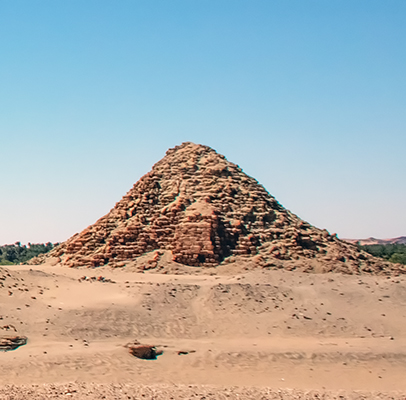
Tomb 11 at Nuri, the tomb of Malewiebamani, as above.
Photo: Bruce Allardice
Permission: Creative Commons Attribution-Share Alike 2.0 Generic license
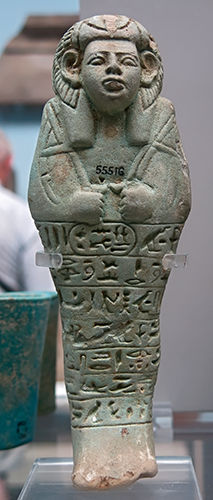
Napatan period: circa 656 BC - 270 BC
Queen Nasalsa
Faience shabti of Queen Nasals (or Nasalsa), wife of Senkamanisken, Napatan Period, from Nuri, pyramid Nu 24, late 7th century BC.
Height 178 mm.
Catalog: Nuri, pyramid Nu 24, EA55516
Photo: Don Hitchcock 2015
Source: Original, British Museum
Text: Card with the display at the British Museum, http://www.britishmuseum.org/, © Trustees of the British Museum, CC BY-NC-SA 4.0
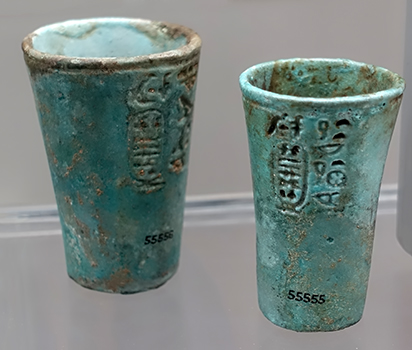
Napatan period: circa 656 BC - 270 BC
Faience cups
Two faience cups from a foundation deposit of Queen Nasalsa, late 7th Century BC
The burial of foundation deposits formed part of a series of ritual acts which were regularly performed at the founding of important buildings in ancient Egypt. Deposits were found beneath the corners of all but one of the royal pyramids at Nuri. They consisted chiefly of groups of small tablets of gold, silver, stone, and other materials, inscribed with the name of the pyramid's owner.
Their magical function was to ensure the structure's eternal survival. Besides these were models of tools and weapons, faience bricks and cartouche-plaques bearing royal names. Groups of faience cups bore inscriptions naming their owners as beloved of various gods and goddesses. When found, the cups contained samples of charcoal, wood, resin and other natural substances.
Catalog: Nuri, pyramid Nu 24, EA55555, EA55556
Photo: Don Hitchcock 2018
Source and text: Card with the display at the British Museum, © Trustees of the British Museum, CC BY-NC-SA 4.0
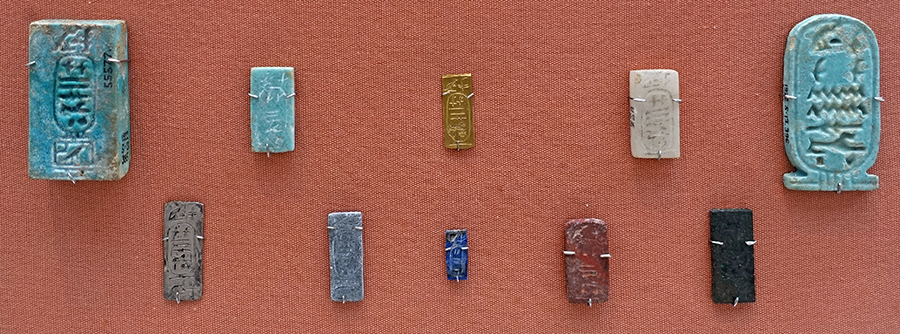
Napatan period: circa 656 BC - 270 BC
Queen Nasalsa
Foundation deposit of Queen Nasalsa, wife of Senkamanisken, late 7th Century BC.
The group includes a model brick and cartouche-plaque of faience, and tablets made fo gold, silver, lead, copper, jasper, lapis lazuli, feldspar, and calcite.
Catalog: Nuri, pyramid Nu 24, EA55577
Photo: Don Hitchcock 2018
Source and text: Card with the display at the British Museum, © Trustees of the British Museum, CC BY-NC-SA 4.0
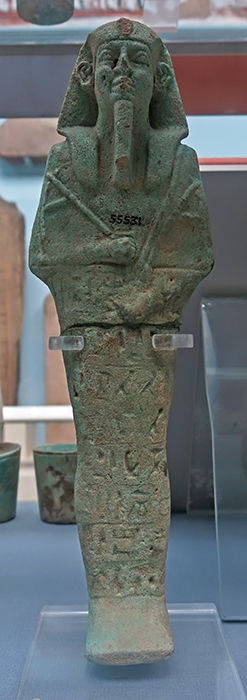
Napatan period: circa 656 BC - 270 BC
Malonaqan / Malenaqen
Nubian, ruled from 555 BC - 542 BC.
Faience shabti, eight 271 mm, width 81 mm, depth 43 mm
Catalog: EA55531
Photo: Don Hitchcock 2015
Source: Original, British Museum
Text: Card with the display at the British Museum, http://www.britishmuseum.org/, © Trustees of the British Museum, CC BY-NC-SA 4.0
Napatan period: circa 656 BC - 270 BC
Malonaqan / Malenaqen
Foundation deposit of King Malenaqen, circa 555 BC - 542 BC, Nuri pyramid Nu 5.
The group includes a faience cartouche-plaque and tablets made of gold, lead, copper, jasper, feldspar, limestone, lapis lazuli, and faience.
Catalog: EA55566
Photo: Don Hitchcock 2015
Source: Original, British Museum
Text: Card with the display at the British Museum, http://www.britishmuseum.org/, © Trustees of the British Museum, CC BY-NC-SA 4.0

Napatan period: circa 656 BC - 270 BC
Was - sceptre
Faience model was - sceptre
Napatan period, circa 656 BC - 270 BC, from Napata, 19 cm.
A short inscription on the back refers to the New Year.
The was ('power, dominion') sceptre is a symbol that appeared often in relics, art, and hieroglyphics associated with the ancient Egyptian religion. It appears as a stylised animal head at the top of a long, straight staff with a forked end.
Was sceptres were used as symbols of power or dominion, and were associated with the gods (such as Set or Anubis) as well as with the pharaoh. Was sceptres also represent the Typhonic beast or Set-animal (the mascot of the Egyptian deity Set). In later use, it was a symbol of control over the force of chaos that Set represented.
In a funerary context the was sceptre was responsible for the well-being of the deceased, and was thus sometimes included in the tomb equipment or in the decoration of the tomb or coffin. The sceptre is also considered an amulet. The Egyptians perceived the sky as being supported on four pillars, which could have the shape of the was. This sceptre was also the symbol of the fourth Upper Egyptian nome, the nome of Thebes (called Waset in Egyptian).
Catalog: EA52931
Photo: Don Hitchcock 2015
Source: Original, British Museum
Text: Card with the display at the British Museum, http://www.britishmuseum.org/, © Trustees of the British Museum, CC BY-NC-SA 4.0
Additional text: Wikipedia
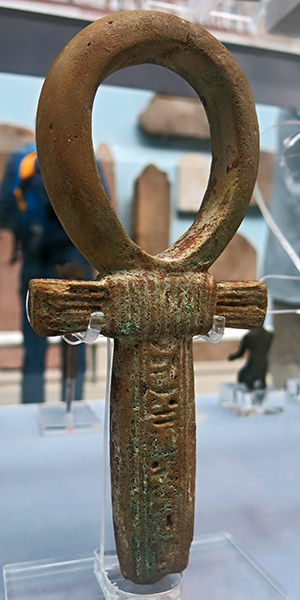
Napatan period: circa 656 BC - 270 BC
Malonaqan / Malenaqen
Faience ankh with the cartouche of Malenaqen.
Napatan Period, circa 555 BC - 542 BC.
The inscription on the shaft refers to the celebration of the New Year. The ankh was the ancient Egyptian hieroglyphic sign for 'life'.
Green glazed composition ankh-symbol with a column of text on either side of the stem including the cartouche of Malonaqan.
Height 213 mm, width 93 mm
Catalog: EA65274
Photo: Don Hitchcock 2015
Source: Original, British Museum
Text: Card with the display at the British Museum, http://www.britishmuseum.org/, © Trustees of the British Museum, CC BY-NC-SA 4.0
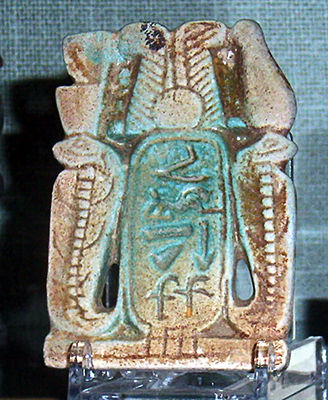
Napatan period: circa 656 BC - 270 BC
Malenaqen
Votive cartouche of the Nubian king Malonaqen, circa 555-542 BC, found at Kawa.
Photo and text: Udimu
Permission: Creative Commons Attribution-Share Alike 3.0 Unported license
Source: Oxford, Ashmolean Museum
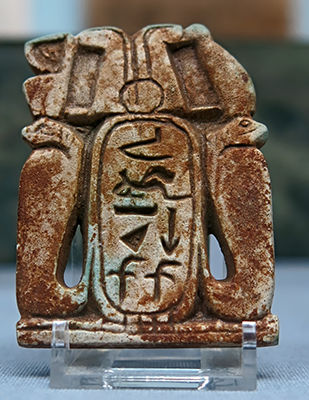
Napatan period: circa 656 BC - 270 BC
Malenaqen
Faience plaque containing the name of the Nubian pharaoh Malenaqen, circa 555-542 BC.
Napatan Period, found at Kawa.
Several plaques with the names of this king were found in the ruins of Temple 'A' at Kawa.
Catalog: EA63607 ( note that the card in the British Museum had been swapped in 2015 with that of the blue plaque below - Don )
Photo: Don Hitchcock 2015
Source: Original, British Museum
Text: Card with the display at the British Museum, http://www.britishmuseum.org/, © Trustees of the British Museum, CC BY-NC-SA 4.0
Additional text: Wikipedia
Napatan period: circa 656 BC - 270 BC
Cartouche-plaque
Pale blue faience cartouche-plaque, circa 656 BC - 270 BC.
Stamp made of glazed composition (pale blue).
The three decorative cartouches are surmounted by solar discs and ostrich plumes, handle-hollow on the back, as can be seen in the photo on the left.
Width 70 mm, length 93 mm
From Kawa, Temple 'T'.
Catalog: EA63606 ( note that the card in the British Museum had been swapped in 2015 with that of the brown plaque above, and that the British Museum website has this image of the blue plaque reversed, as at 5.11.21 - Don )
Photo: Don Hitchcock 2015, 2018
Source: Original, British Museum
Text: Card with the display at the British Museum, http://www.britishmuseum.org/, © Trustees of the British Museum, CC BY-NC-SA 4.0
Napatan period: circa 656 BC - 270 BC
Imhotep
Imhotep wearing a loincloth, and with shaved head, necklace, holding a papyrus scroll, sitting on a stool.
Height 152 mm.
Imhotep, 'the one who comes in peace', was an Egyptian chancellor to the Pharaoh Djoser, probable architect of Djoser's step pyramid, and high priest of the sun god Ra at Heliopolis. Very little is known of Imhotep as a historical figure, but in the 3 000 years following his death, he was gradually glorified and deified.
Traditions from long after Imhotep's death treated him as a great author of texts of wisdom and especially as a physician. No text from his lifetime mentions these capacities and no text mentions his name in the first 1 200 years following his death.
Apart from the three short contemporary inscriptions that establish him as chancellor to the Pharaoh, the first text to reference Imhotep dates from the time of Amenhotep III, circa 1391 BC - 1353 BC. It is addressed to the owner of a tomb, and reads:
The wab-priest may give offerings to your ka. The wab-priests may stretch to you their arms with libations on the soil, as it is done for Imhotep with the remains of the water bowl.
It appears that this libation to Imhotep was done regularly, as they are attested on papyri associated with statues of Imhotep until the Late Period, circa 664 BC - 332 BC. Wildung explains the origin of this cult as a slow evolution of intellectuals' memory of Imhotep, from his death onward. Gardiner finds the cult of Imhotep during the New Kingdom (circa 1550 BC - 1077 BC) sufficiently distinct from the usual offerings made to other commoners that the epithet 'demi-god' is likely justified to describe his veneration.
The first references to the healing abilities of Imhotep occur from the Thirtieth Dynasty (circa 380 BC - 343 BC) onward, some 2 200 years after his death.
Imhotep is among the few non-royal Egyptians who were deified after their deaths, and until the 21st century, he was thought to be only one of two commoners – along with Amenhotep, son of Hapu – to achieve this status. The centre of his cult was in Memphis. The location of his tomb remains unknown, despite efforts to find it. The consensus is that it is hidden somewhere at Saqqara.
Catalog: E 3639
Photo: Don Hitchcock 2015, 2018
Source and text: Original, Louvre Museum, Paris, France, https://collections.louvre.fr/
Additional text: Wikipedia
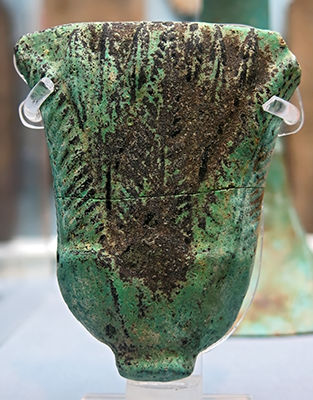
Napatan period: circa 656 BC - 270 BC
Lotus-flower Inlay
Faience lotus-flower inlay, Napatan Period, circa 656 BC - 270 BC, from Kawa, Temple 'T' Egypt.
Glazed composition inlay in form of lotus flower, length 98 mm.
Catalog: EA63608
Photo: Don Hitchcock 2015
Source: Original, British Museum
Text: Card with the display at the British Museum, http://www.britishmuseum.org/, © Trustees of the British Museum, CC BY-NC-SA 4.0
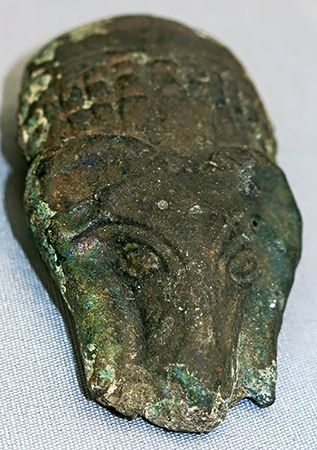
Napatan period: circa 656 BC - 270 BC
Ram's head Inlay
Faience inlay in the form of a ram's head. Napatan Period, circa 656 BC - 270 BC, from Kawa, Temple 'T'.
Blue glazed composition inlay in the form of a ram's head.
Width 46 mm, length 88 mm.
Catalog: EA63612
Photo: Don Hitchcock 2015
Source: Original, British Museum
Text: Card with the display at the British Museum, http://www.britishmuseum.org/, © Trustees of the British Museum, CC BY-NC-SA 4.0
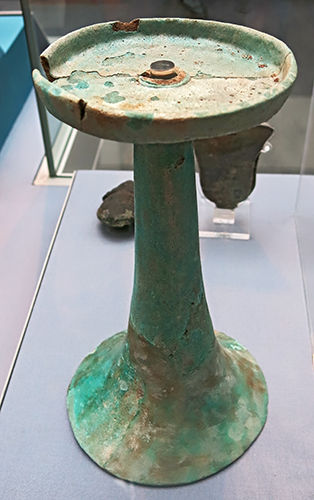
Napatan period: circa 656 BC - 270 BC
Libation Stand
Faience libation stand.
Napatan Period, about 700-270 BC From Kawa.
Diameter 133 mm, height 254 mm.
Catalog: EA63615
Photo: Don Hitchcock 2015
Source: Original, British Museum
Text: Card with the display at the British Museum, © Trustees of the British Museum, CC BY-NC-SA 4.0
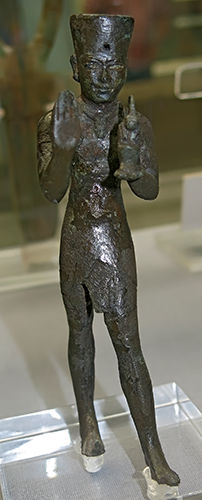
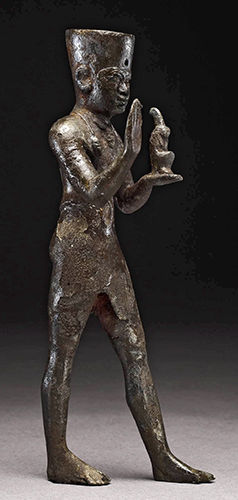
Napatan period: circa 656 BC - 270 BC
Bronze Statuette
Bronze statuette of a king presenting an image of Maat.
Napatan Period, about 700-270 BC From Kawa, Temple 'T'.
The necklace with three pendants in the form of rams' heads is depicted in many representations of Kushite rulers of the Napatan Period. The headdress originally included feathers, perhaps made of another material. The eyes were originally inlaid.
Catalog: EA63594
Photo (left): Don Hitchcock 2015
Photo (right): http://www.britishmuseum.org/ © Trustees of the British Museum, CC BY-NC-SA 4.0
Source: Original, British Museum
Text: Card with the display at the British Museum, http://www.britishmuseum.org/, © Trustees of the British Museum, CC BY-NC-SA 4.0

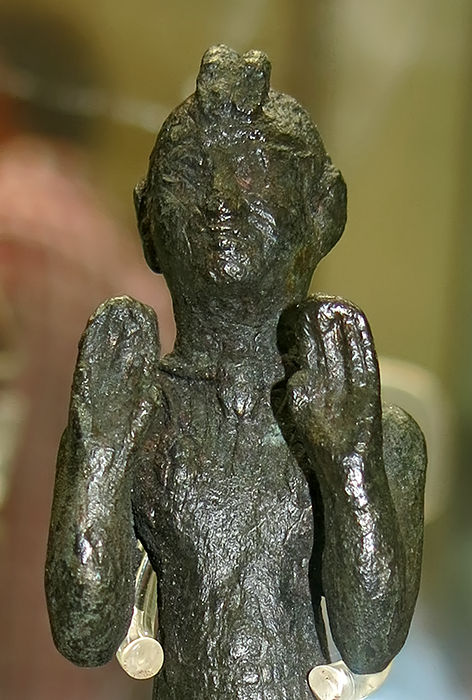
Napatan period: circa 656 BC - 270 BC
Bronze Statuette
Bronze statuette of a king with arms raised in adoration.
Napatan Period, about 656 BC - 500 BC, from Kawa, Temple 'T'.
The figure probably formed part of a group representing the king worshipping a deity.
Hollow-cast copper alloy figure of a king wearing a cap with a double uraeus, a necklet and a kilt; hands raised in adoration; the feet rest on v-shaped supports.
Height 120 mm, width 26 mm.
( Note that the statue has extensions to the soles of the feet, which would have been inserted into a ( perhaps wooden ) support for stability, the extensions were never meant to be seen - Don )
Catalog: EA63596
Photo: Don Hitchcock 2015
Text: Card with the display at the British Museum, http://www.britishmuseum.org/, © Trustees of the British Museum, CC BY-NC-SA 4.0
Source: Original, British Museum

Napatan period: circa 656 BC - 270 BC
Bronze Statuette
Bronze figure of a divinity.
Napatan Period, about 656 BC - 270 BC, from Kawa, Temple 'T'.
Perhaps representing the god Ptah, or Khona (Khons), the figure wears a headdress composed of a sun-disc and uraeus serpents and holds a staff which combines elements of the djed-pillar and the was-sceptre.
Height 148 mm, width 31 mm.
Hollow-cast copper alloy figure of Ptah or Khons wearing the skull-cap and disc with three uraei (right one chipped) and a broad collar; right hand above left at the breast holding was and djed sceptres; long thin tongue below feet.
Catalog: Hollow-cast copper alloy, EA63598
Photo: Don Hitchcock 2015
Text: Card with the display at the British Museum, © Trustees of the British Museum, CC BY-NC-SA 4.0
Source: Original, British Museum

Napatan period: circa 656 BC - 270 BC
Bronze female figure
Hollow-cast copper alloy fitting in the form of a naked female figure with a columnar diadem and a Nubian wig; arms lost.
Height 205 mm, width 37 mm.
Catalog: EA36076, OC.357
Photo: Don Hitchcock 2018
Text: Card with the display at the British Museum, © Trustees of the British Museum, CC BY-NC-SA 4.0
Source: Original, British Museum
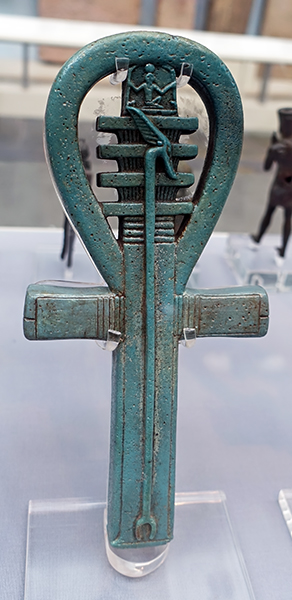
Napatan period: circa 656 BC - 500 BC
Faience composite amulet
From Gebel Barkal. The piece incorporates a djed-pillar, a was-sceptre, and a figure of the god Heh, personification of everlastingness, within the form of the ankh-sign.
Glazed composition amulet: this mould-made amulet is in the shape of an 'ankh' sign. Superimposed in raised relief on its front are three other hieroglyphic symbols: a 'was'-sceptre placed on the pillar-like 'djed'-sign, and the kneeling figure of the heh-sign on the top of the 'djed'-pillar. The amulet's reverse is nearly identical except that the 'was'-sceptre is lacking.
Height 236 mm, width 110 mm, depth 25 mm, weight 320 gm.
Although amulets are often found in burials, this one was found in a temple and was not intended for funerary use. Because of its size and the absence of a lug by which to suspend it, it was probably made to be carried. The magical properties of this amulet and the benefits it was to bestow on its owner are clearly expressed through the four hieroglyphic symbols of which it is composed: life ('ankh'), endurance ('djed') and dominion ('was'-sceptre) for millions and millions of years ('heh') - enduring domination and rule by its royal owner.
This 'ankh'-amulet was one of two purchased by the British Museum from the collection of Lord Kitchener, and are said to have been purchased by him in the Sudan in 1919 from Mohammed Ahasi. Probably Egyptian imports into Nubia, records indicate that they may have come from the Temple of Taharqo (B 300) at Gebel Barkal, the capital of the ancient Nubian kingdom of Napata whose early kings ruled Egypt as the Twenty-Fifth Dynasty (circa 770 BC - 657 BC). Taharqo was one of the most important kings of this dynasty, completing the Kushite conquest of Egypt begun by his ancestors.
Like many other traditional Egyptian religious symbols, Egyptian-style amulets were widely used by ancient Nubian kings. 'Ankh' - shaped amulets continued to be made even after the Kushite Dynasty in Egypt ended.
Catalog: Sudan, Jebel Barkal (Nubia), Temple of Taharqo, EA54412
Photo: Don Hitchcock 2018
Text: Card with the display at the British Museum, © Trustees of the British Museum, CC BY-NC-SA 4.0
Source: Original, British Museum
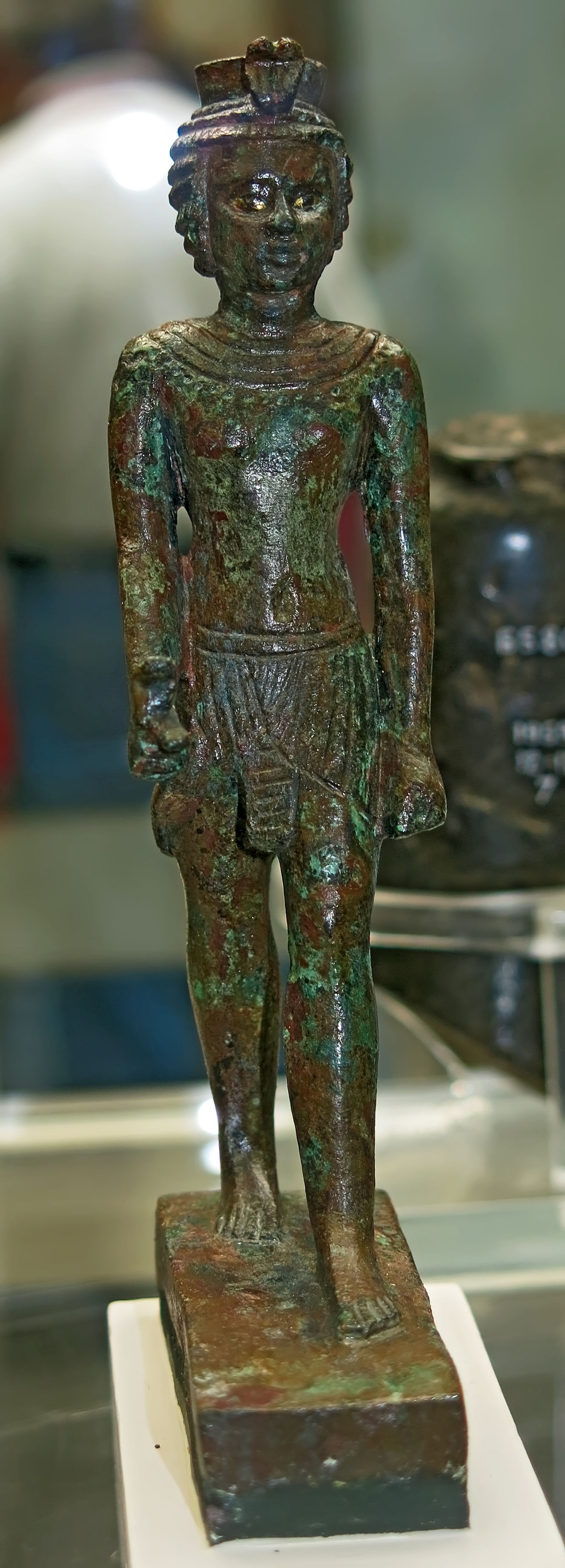
Napatan period: circa 656 BC - 270 BC
Bronze Statuette
Bronze figure of a god or king wearing a Nubian wig.
Napatan Period, circa 656 BC - 270 BC, from Nuri.
The figure holds a snake. The eyes are inlaid.
Catalog: EA57325
Photo: Don Hitchcock 2015
Text: Card with the display at the British Museum, © Trustees of the British Museum, CC BY-NC-SA 4.0
Source: Original, British Museum

Napatan period: circa 656 BC - 270 BC
Bronze figure of Maat
Late Period, 664 BC - 305 BC.
Bronze figure of the goddess Maaat with a tall feather affixed to her head, and a subtly indicated vulture headdress over a wig. A tang beneath the foot-plinth would have attached it to a base.
There is a plumpness to the figure characteristic of the later Egyptian ideal female form, with a rounded face, prominent bust, and deep navel. The hands are held flat at the sides of the body and the feet are placed together. The long, clinging dress which the figure wears is only indicated by the ankle-length hemline.
Maat, the Egyptian concept of 'order', 'right', and 'justice', was personified as a goddess. The feather hieroglyph used to write the word is depicted worn by the goddess as a headdress.
Dimensions: Height 270 mm, thickness 33 mm, width 46 mm.
Catalog: Bronze, unknown provenance, EA11109
Photo: Don Hitchcock 2018
Text: Card with the display at the British Museum, © Trustees of the British Museum, CC BY-NC-SA 4.0
Source: Original, British Museum
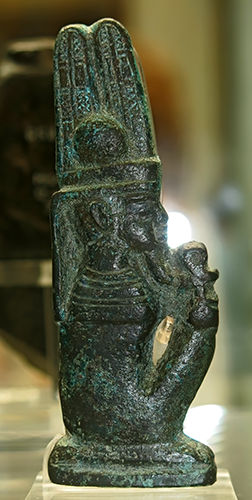
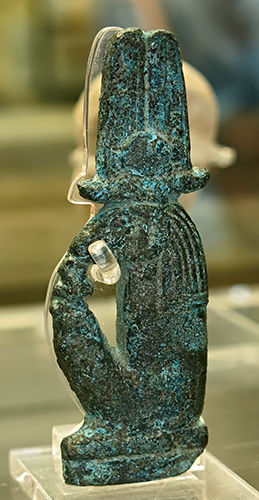
Napatan period: circa 656 BC - 270 BC
Bronze Inlays
Two bronze inlays representing the seated god Amun / Khnum.
Napatan Period, circa 656 BC - 270 BC, from Kawa, Temple 'T'.
Amun is represented both in human form and with a ram's head.
(right) Height 99 mm, width 35 mm.
Catalog: EA63588, EA63589
Photo: Don Hitchcock 2015
Text: Card with the display at the British Museum, http://www.britishmuseum.org/, © Trustees of the British Museum, CC BY-NC-SA 4.0
Source: Original, British Museum
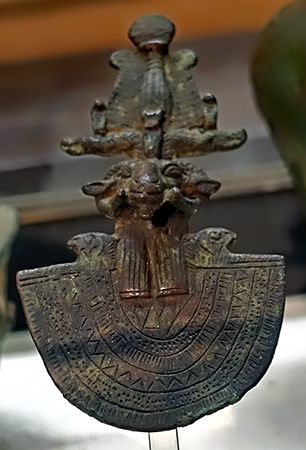
Napatan period: circa 656 BC - 270 BC
Shield
Crowned ram's head with a collar, in bronze.
Shields of this shape used to adorn the bow and stern of the cult barques of the images of the gods. In this case, it is a miniature replica, which was very likely placed on a rod, and was set up as an offering in the Amun Temple.
Dimensions: height 100 mm, width 58 mm.
Catalog: Bronze, Inv. Nr. 1935.200.579
Photo: Don Hitchcock 2018
Source and text: Original, printed catalog, Museum August Kestner, Hannover
Napatan period: circa 656 BC - 270 BC
Bronze Inlays
Two bronze inlays representing ram-headed sphinxes.
Napatan Period, circa 656 BC - 270 BC, from Kawa, Temple 'T'.
Description for EA63590 (on left): Flat cast copper alloy inlay in the form of Khnum as a ram wearing the horned sun-disc.
Height 76 mm, width 87 mm ( probably the same dimensions for each, they look to be identical, cast from the same mould, and show the right and left sides - Don ).
Catalog: EA63590, EA63591
Photo: Don Hitchcock 2015
Text: Card with the display at the British Museum, http://www.britishmuseum.org/, © Trustees of the British Museum, CC BY-NC-SA 4.0
Source: Original, British Museum
Napatan period: circa 656 BC - 270 BC
Incense-burner
End of a bronze incense-burner in the form of a human hand. Napatan Period, 656 BC - 270 BC.
From Kawa, Temple 'T'. A cup for the incense was once attached to the palm by a rivet.
Catalog: EA63600
Photo: Don Hitchcock 2015
Text: Card with the display at the British Museum, © Trustees of the British Museum, CC BY-NC-SA 4.0
Source: Original, British Museum
Napatan period: circa 656 BC - 270 BC
Two Sistra
In contrast to those made of clay with a faience cover, the bronze sistra could be used in practice in the ritual. They make a whirring or rattling sound when shaken. Not only the connection to Hathor, but also to the cat goddess Bastet, who was especially revered in the whole of Egypt in the late period, is evident: a small figure of this goddess stands on or in the bracket.
The sistrum was a sacred instrument in ancient Egypt. Perhaps originating in the worship of Bat or Hathor (originally distinct deities, but later mostly fused into one), it was used in dances and religious ceremonies, particularly in the worship of the goddess Hathor, with the U-shape of the sistrum's handle and frame seen as resembling the face and horns of the cow goddess. It also was shaken to avert the flooding of the Nile and to frighten away Set. The Egyptian name for it was sesheshet, which is believed to be onomatopoeic, imitating the sound of the sistrum.
The sound is thought to have imitated the sound of papyrus stalks being shaken, echoing an ancient rite connected with the myth in which the god Horus was raised in secret in a papyrus marsh. The handle of this sistrum is made in the form of the Bat or Hathor emblem, Hathor being, amongst many other things, the patroness of music.
Left: Inv. Nr. 1935.200.330 H. 310 mm, width 81 mm.
Right: Inv. Nr. 1950.141 H 166 mm, largest width of the rods 123 mm
Catalog: Bronze, Inv. No. 1935.200.330, Inv. No. 1950.141
Photo: Don Hitchcock 2018
Source and text: Original, printed catalog, Museum August Kestner, Hannover
Additional text: Wikipedia, metmuseum.org

Napatan period: circa 656 BC - 270 BC
Bronze crocodile
Bronze crocodile, Napatan Period, circa 656 BC - 270 BC
From Kawa
Catalog: EA63604
Photo: Don Hitchcock 2015
Text: Card with the display at the British Museum, © Trustees of the British Museum, CC BY-NC-SA 4.0
Source: Original, British Museum
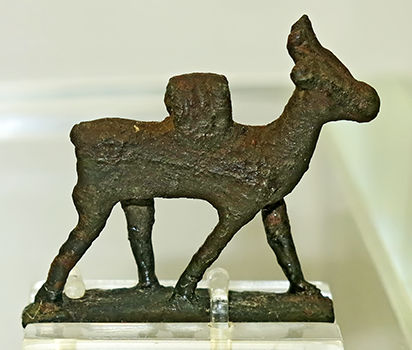
Napatan period: circa 656 BC - 270 BC
Bronze Gazelle
Bronze pendant in the form of a gazelle, Napatan Period, circa 656 BC - 270 BC
From Kawa
Catalog: EA63603
Photo: Don Hitchcock 2015
Text: Card with the display at the British Museum, © Trustees of the British Museum, CC BY-NC-SA 4.0
Source: Original, British Museum
Metalwork from the Kushite cemetery at Gematon.Text above: Poster at the British Museum, © Trustees of the British Museum, CC BY-NC-SA 4.0
The copper-alloy objects on display here were excavated in 2009 and 2011 within the cemetery at Kawa in Northern Sudan, the site of an important Egyptian and Kushite town occupied from at least 1350 BC until AD 350. The excavations by the Sudan Archaeological Research Society, in conjunction with the British Museum, are currently part of the Qatar-Sudan Archaeological Project. They will be returned in the near future to the Sudan National Museum in Khartoum for permanent curation and display. Made in Kush, the offering table and beaker are highly unusual and testify to the skill of local metalworkers and of their innovative designs.
The town at Kawa was probably founded by the Egyptian pharaoh Akhenaton but the earliest building is a temple built a little later during the reign of Tutankhamen. Another large temple on the site was constructed on the orders of Taharqo, the most famous of the Kushite rulers who conquered and controlled Egypt in the 8th and 7th centuries BC.

Napatan period: circa 656 BC - 270 BC
Wine Strainer
The tube has a disc at one end pierced by a hole. At the other is a disc to which was affixed the strainer with a domed lid pierced by small holes. The strainer is immersed into the liquid which is filtered as it passes into the container.
The thumb then seals the hole at the end of the tube forming a vacuum allowing the strainer to be withdrawn. On releasing the thumb the strained contents flow into another vessel.
Catalog: Kawa SF:1240
Photo: Don Hitchcock 2015
Text: Card with the display at the British Museum, © Trustees of the British Museum, CC BY-NC-SA 4.0
Source: Original, British Museum
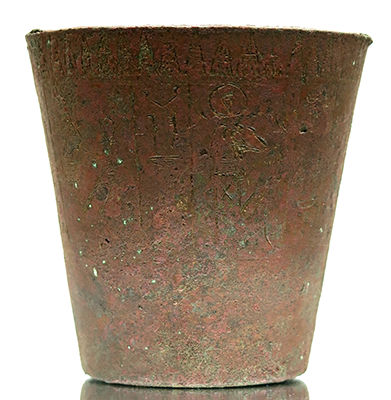
Napatan period: circa 656 BC - 270 BC
Beaker
Around the rim of this beaker runs a border consisting of stylised plant motifs. Below is a horizontal frieze of six compartments, each containing a figure of a mammiform deity squatting on its haunches interspersed with six brief hieroglyphic texts.
Catalog: Kawa SF:1448
Photo: Don Hitchcock 2015
Text: Card with the display at the British Museum, © Trustees of the British Museum, CC BY-NC-SA 4.0
Source: Original, British Museum
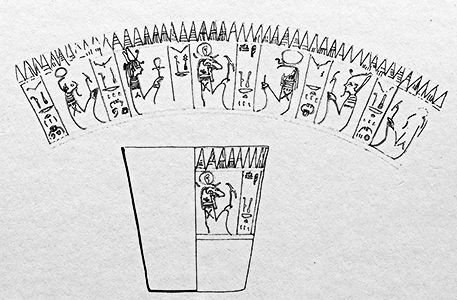
Napatan period: circa 656 BC - 270 BC
Beaker
The inscriptions are very similar, reading 'A Happy New Year' followed perhaps by 'All Happiness'. Only the ram-headed figure is identified by name, as Amun.
Catalog: Kawa SF:1448
Photo: Don Hitchcock 2015
Text: Card with the display at the British Museum, © Trustees of the British Museum, CC BY-NC-SA 4.0
Source: Original, British Museum
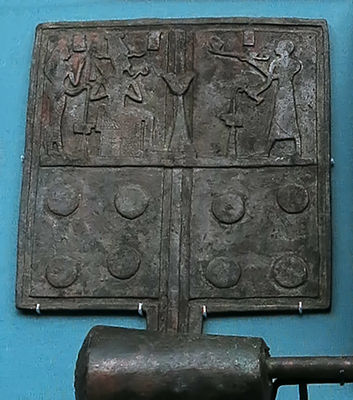
Napatan period: circa 656 BC - 270 BC
Offering Table
This offering table depicts in the lower part eight offering bread loaves. Above is a scene of the tomb owner moving left offering incense and a liquid libation to the god Osiris, behind whom stands a goddess, probably Isis.
This unique object with clear royal connotations must have belonged to a member of the Kushite elite, perhaps a prince of the royal house.
Catalog: Kawa SF:721
Photo: Don Hitchcock 2015
Text: Card with the display at the British Museum, © Trustees of the British Museum, CC BY-NC-SA 4.0
Source: Original, British Museum
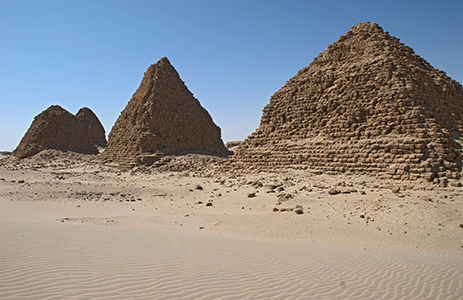
Nuri pyramids from the northeast. Near Jebel Barkal, Sudan.
Photo: Bertramz
Permission: Creative Commons Attribution-Share Alike 3.0 Unported license.
Text: Wikipedia
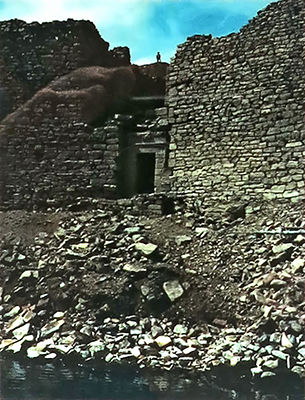
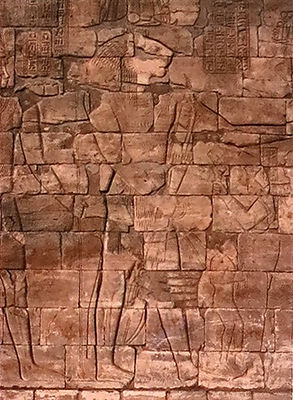
Napatan period: circa 656 BC - 270 BC
Kushite fortress
(left) Gateway into the Kushite fortress at Qasr Ibrim, between the first and second cataracts of the Nile. It is now an island in Lake Nasser.
(right) The Kushite warrior god Apedemak depicted in a relief carving at the Musawwarat es-Sufra Lion Temple, in Khartoum.
Photo (left): © SARS Alexander Archive
Photo (right): © Trustees of the British Museum
Source and text: Poster, British Museum, © Trustees of the British Museum
The Meroitic Period: 270 BC to 350 AD
Meroë was the southern capital of the Kingdom of Kush. The Kingdom of Kush spanned the period c. 800 BC – c. 350 AD but, initially, its main capital was farther north at Napata. King Aspelta moved the capital to Meroë, considerably farther south than Napata, possibly circa 591 BC, just after the sack of Napata by Egyptian Pharaoh Psamtik II.
The Kushite rulers chose Meroë, between the Fifth and Sixth Cataracts, because it was on the fringe of the summer rainfall belt, and the area was rich in iron ore and hardwood for iron working. The location also afforded access to trade routes to the Red Sea. The city of Meroë was located along the middle Nile which is of great importance due to the annual flooding of the Nile river valley and the connection to many major river systems such as the Niger which aided with the production of pottery and iron characteristic of the Meroitic kingdom that allowed for the rise in power of its people.
Meroitic Period: 270 BC to 350 AD
Bound prisoner
Bound prisoner, around 050 BC - 001 BC, from Meroë.
This solid-cast copper alloy ritual figure of a prisoner is inscribed with Meroitic text that says, 'This is the king of the Nubians'.
Catalog: EA65222
Photo: Don Hitchcock 2015
Source: Original, British Museum
Text: Card at museum display, http://www.britishmuseum.org/, © Trustees of the British Museum
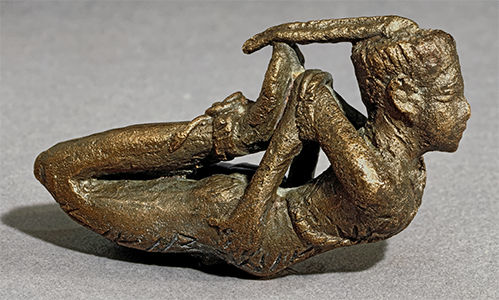
Meroitic Period: 270 BC to 350 AD
Bound prisoner
The captive has characteristic Nubian features and is shown naked and bound. The Kushites typically represented their defeated enemies in this way. Nubia was the ancient name for the Nile Valley in southern Egypt and northern Sudan.
Catalog: EA65222
Photo: © Trustees of the British Museum
Source: Original, British Museum
Text: Card at museum display, http://www.britishmuseum.org/, © Trustees of the British Museum
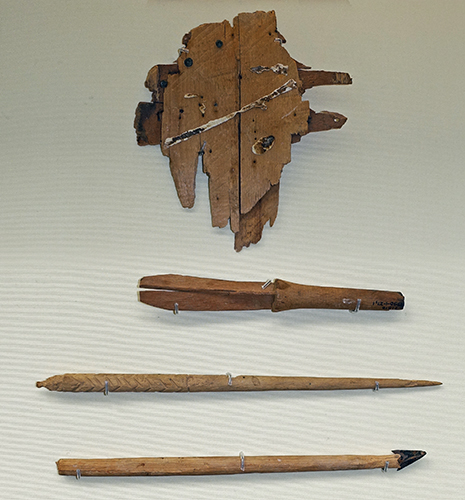
Meroitic Period: 270 BC to 350 AD
Weapons of war
Top: Shield fragment, circa 25 BC.
This fragment of a wooden shield has been made from sheets of plywood for strength and lightness, and bears traces of a leather covering.
Catalog: Qasr Ibrim, EA71844
Below: Roman weaponry, around 25 BC.
The fortress at Qasr Ibrim was an outpost of great strategic importance. During the Roman period, Petronius, the prefect of Egypt, captured the stronghold from the Kushites and stationed a Roman garrison there. This weaponry which includes arrows, catapult bolts and sling shots probably dates from that occupation.
EA71818: Finely made carved wooden quarrel carved from a single piece of wood. Round stem tapering towards the head end where there is a socket for the iron(?) tanged bolt head. At the other end three wooden flights arranged at 120 degrees from each other.
Diameter 10 - 17 mm, length 133 mm, width 20 mm (across flights)
EA71831: Wooden pin, damaged at upper end and chipped at various points along its length. Upper 78 mm decorated by vertical bands of incised chevrons bordered at top and bottom by incised lines.
Diameter 8 mm, length 208 mm.
EA71840: Wooden arrow shaft with iron head. The shaft is round and gradually tapers towards the head. At the other end the shaft has been cut off leaving a slight central projection. Traces of red paint on the shaft. Arrow head with three barbs and tang, now bent.
Diameter 8 mm, length 175 mm (shaft), length 188 mm (total)
Catalog: Qasr Ibrim, EA71844, EA71818, EA71831, EA71840
Photo: Don Hitchcock 2018
Source: Original, British Museum
Text: Card at museum display, http://www.britishmuseum.org/, © Trustees of the British Museum
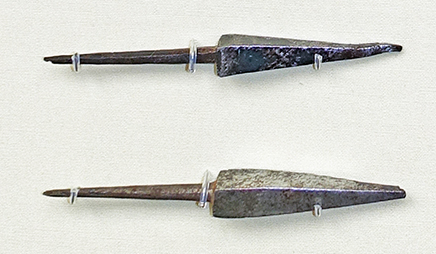
Meroitic Period: 270 BC to 350 AD
Weapons of war
EA71842: Iron quarrels of triangular profile and square section with a long tapering tang.
Length 49 mm (head), length: 90 mm (total), width 8 mm.
Catalog: Qasr Ibrim, EA71842
Photo: Don Hitchcock 2018
Source: Original, British Museum
Text: Card at museum display, http://www.britishmuseum.org/, © Trustees of the British Museum
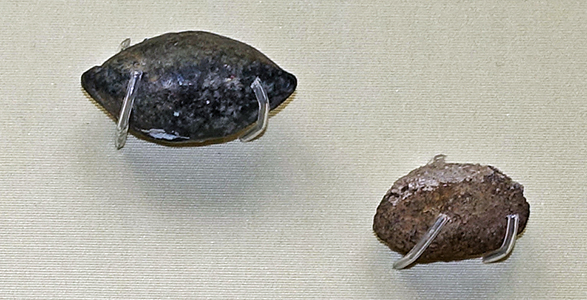
Meroitic Period: 270 BC to 350 AD
Weapons of war
EA71843: Lead sling-shot of pointed almond shape, a glans; small hole at one end; faceted at one end.
Diameter 19 mm, length 35 mm, weight 52 gm.
EA80400: Sling bullet which is roughly egg-shaped and made of ferricrete sandstone.
Diameter: 16 mm, length 26 mm.
Catalog: Qasr Ibrim, EA71843, EA80400
Photo: Don Hitchcock 2018
Source: Original, British Museum
Text: Card at museum display, http://www.britishmuseum.org/, © Trustees of the British Museum
Meroitic Period: 270 BC to 350 AD
Weapons of war
Stone projectiles.
If we take the density of sandstone to be 2.4, the mass of one of these projectiles with a diameter of 120 mm is around two kilograms. They would have been fired by a relatively small (in Roman terms) ballista, which resembled a large crossbow, and could fire a wide range of stones, which needed to be only roughly shaped. They were accurate, and deadly when fired into massed enemy troops.
EA71833: Roughly spherical sandstone projectile but with many flats. Two characters painted directly on the stone in black.
Diameter 120 mm.
Two characters placed side by side and painted in black directly onto the stone. An 'M' and an inverted 'A' or vice versa.
Catalog: Sandstone, Qasr Ibrim, EA71833
EA71834: Roughly spherical sandstone projectile but with many flats. Two characters painted directly on the stone in black.
Diameter: 115 mm.
Two characters placed side by side and painted in black directly onto the stone. A Greek 'L' and an 'E'.
Catalog: Sandstone, Qasr Ibrim, EA71834
EA71835: Roughly spherical sandstone projectile or weight with numerous flats on the surface. There are painted inscriptions on one large flat area placed directly on the surface of the stone.
Diameter: 127 mm (max), 118 mm (min).
Five black painted inscriptions arranged in three lines. Line 1 - 'OKTAVO' in Greek characters. Line 2 - an arrow pointing vertically upwards and an 'H'. Line 3 - 'D.' and another indistinct letter.
Catalog: Sandstone, Qasr Ibrim, EA71835
Photo: Don Hitchcock 2018
Text: Card at museum display, http://www.britishmuseum.org/, © Trustees of the British Museum
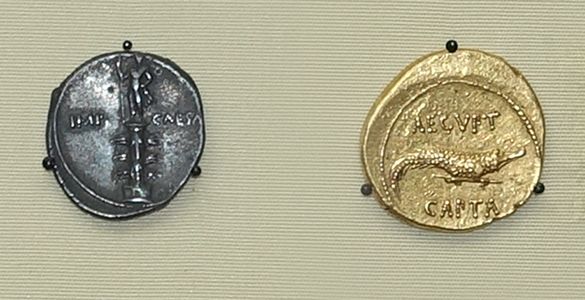
Meroitic Period: 270 BC to 350 AD
Rome controls Egypt
These coins reflect Rome's control of Egypt, which led the Roman Empire to increasing contact and conflict with Kush.
Cleopatra, Queen of Egypt, was defeated by Octavian (later the Roman Emperor Augustus) at the Battle of Actium in 31 BC.
(left) Denarius, 30 BC, Qasr Ibrim.
A trophy for the sea-battle of Actium, this coin is decorated with the prows of the captured Egyptian ships.
Catalog: CM 1867.1, BMC Augustus 635
(right) Aureus, 27 BC, Qasr Ibrim.
Egypt is symbolised by a crocodile.
An aureus was the equivalent of 25 denarii which was one year's pay for a Roman legionary when Petronius, the Roman governor of Egypt, conquered the fortress of Qasr Ibrim.
Catalog: Qasr Ibrim, 1897,0604.4
Photo: Don Hitchcock 2018
Source: Original, British Museum
Text: Card at museum display, http://www.britishmuseum.org/, © Trustees of the British Museum
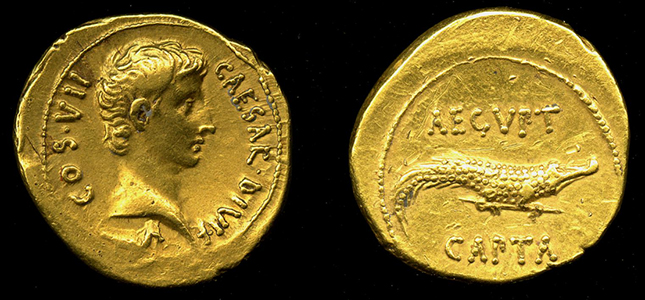
Meroitic Period: 270 BC to 350 AD
Rome controls Egypt
Gold Aureus, 27 BC.
Head of Augustus, bare, right, (obverse).
Crocodile standing right, (reverse).
Catalog: Aureus, 27 BC, 1897,0604.4
Photo: © Trustees of the British Museum
Text: Card at museum display, http://www.britishmuseum.org/, © Trustees of the British Museum
Meroitic writing
Meroitic was the first Nubian language to be recorded in written form. The earliest known texts date from the mid-2nd century BC. The language was written in two scripts. One used twenty-three signs derived from Egyptian hieroglyphs, but with different sound values.
The other was a shorthand form known as cursive, partly based on Egyptian demotic script. Meroitic hieroglyphs were used chiefly for monumental inscriptions, while the cursive script occurs in less formal contexts, such as on funerary stelae, offering tables, ostraca (inscribed potsherds), papyri and graffiti.
The sound values for the signs were established by Francis Llewellyn Griffith (1862-1934) through a comparative study of inscriptions in Meroitic and Ancient Egyptian. The key to the breakthrough was a stand from Wad Ban Naga, inscribed with royal names in both Egyptian and Meroitic hieroglyphs. Griffith's work enabled names, titles and a few standard phrases to be translated. Further progress towards understanding Meroitic texts has been hampered by the scarcity of other bilingual inscriptions and by the failure to link Meroitic to other African languages.
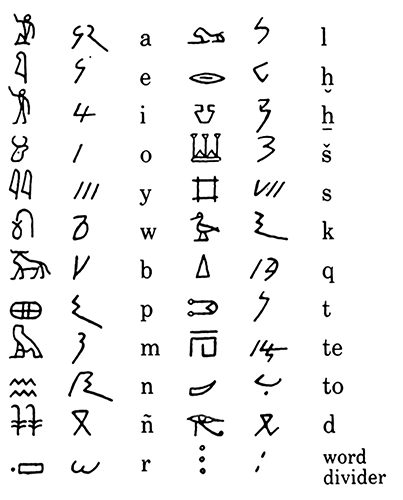
The hieroglyphic and cursive forms of the Meroitic script, with their phonetic values.
Rephotography: Don Hitchcock 2018
Source and text: Poster, British Museum, http://www.britishmuseum.org/, © Trustees of the British Museum
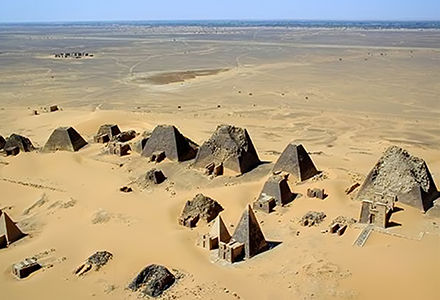
Meroitic Period: 270 BC to 350 AD
Meroë
Meroë is an ancient city on the east bank of the Nile about 6 km north-east of the Kabushiya station near Shendi, Sudan, approximately 200 km north-east of Khartoum. Near the site are a group of villages called Bagrawiyah. This city was the capital of the Kingdom of Kush for several centuries.
Photo: Francis Geius - Mission SFDAS 2001 via Wikipedia
Permission: CC 1.0
Text: Wikipedia
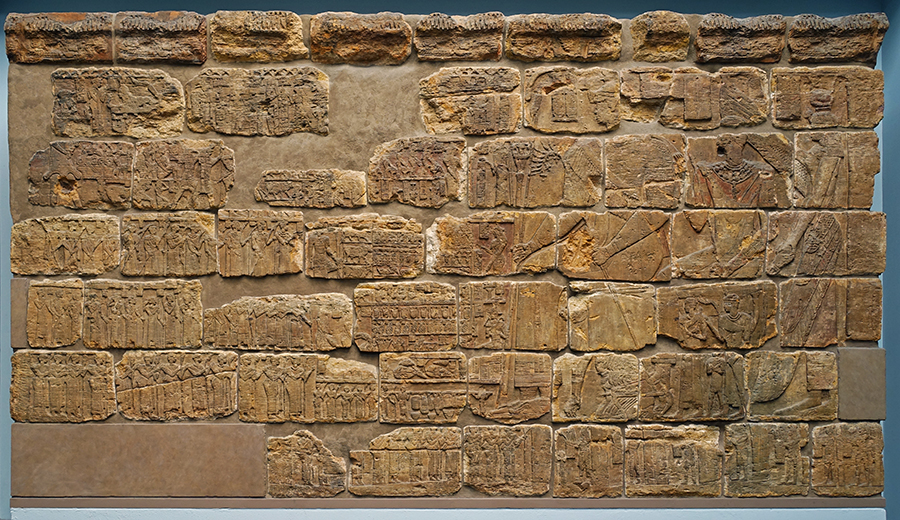
Reliefs from the interior of the funerary chapel of a Meroitic queen
From pyramid N.11 at Meroe
Photo: Don Hitchcock 2018
Source: Original, British Museum
Meroitic Period: 270 BC to 350 AD
Funerary chapel
Reliefs from the interior of the funerary chapel
of a Meroitic queen.
From pyramid N.11 at Meroe
From the early 3rd century BC until the 4th century AD the majority of Meroitic rulers were buried beneath pyramids close to the city of Meroe. On several occasions the kingdom was ruled by a queen whose title was Kandake. A distorted reference to this practice appears in Classical accounts, which report that the 'Ethiopians' were always ruled by women called Candace.
The ruler buried beneath pyramid N .11 was probably Queen Shanakdakhete (2nd century BC), the first of the ruling queens of Meroe. The reliefs exhibited here come from the south wall of the queen's funerary chapel and reflect the strong influence of pharaonic Egypt on Meroitic monumental sculpture. The chapel itself was built against the eastern face of the pyramid.
On the right, the queen sits enthroned, wearing an elaborate, decorated robe. Behind her is another royal personage, perhaps a prince. Bound prisoners are depicted beneath the Queen's throne, and the royal pair are protected by the wings of the goddess Isis.
On the left, rows of attendants bearing palm branches are represented, together with scenes in which religious ceremonies are enacted and offerings made to various deities. Among these depictions the queen's heart is shown being weighed in a balance, an episode derived from Egyptian beliefs about the afterlife.
Catalog: EA719
Rephotography: Don Hitchcock 2015
Source: Poster, British Museum, © Trustees of the British Museum
Text: Poster at the British Museum, © Trustees of the British Museum
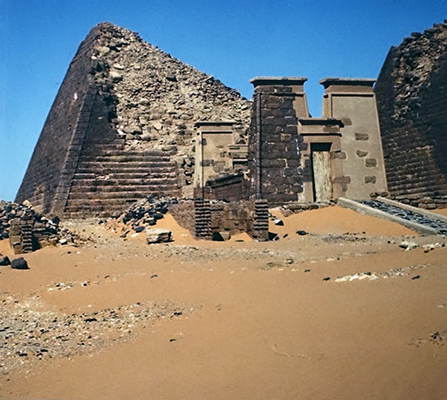
Meroitic Period: 270 BC to 350 AD
Funerary chapel
The partially reconstructed funerary chapel of pyramid N.11 at Meroë.
Rephotography: Don Hitchcock 2018
Source: Poster, British Museum, © Trustees of the British Museum
Text: Poster at the British Museum, © Trustees of the British Museum
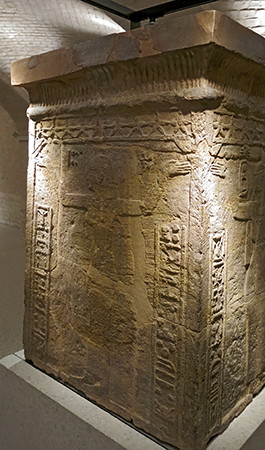
Meroitic Period: 270 BC to 350 AD
Pedestal for a Royal Bark (model sailing ship)
Bark pedestal of King Natakamani and the Kandake (Queen) Amanitore
Circa 1 - 25 AD, Wad Ban Naga (Sudan / Nubia / Butana (area)), Temple of Isis.
The village of Wad Ban Naga lies on the eastern bank of the Nile, about 80 kilometres upstream of Meroë and about 40 km southwest of Shendi.
Dimensions: 1175 x 850 x 850 mm.
The four sides of the pedestal, which probably served as a pedestal for a god bark, are decorated with two goddesses, the king and the queen. The four persons support the sky above them as well as symbolically the god bark. The names in the cartouches represent the throne names of the ruling couple in hieroglyphs and the birth names in Meroitic script. However, in the columns on the pages, the names are written only in hieroglyphics. This subset is thus one of the few bilingual written documents.
Amanitore was among the last great Kush builders. She was involved in restoring the large temple for Amun at Meroë and the Amun temple at Napata after it was demolished by the Romans. Reservoirs for the retention of water also were constructed at Meroë during her reign. The two rulers also built Amun temples at Naqa and Amara.
The quantity of building that was completed during the middle part of the first century indicates that this was the most prosperous time in Meroitic history.[6] More than two hundred Nubian pyramids were built, most plundered in ancient times.
Her country was immediately south of what was Ancient Egypt and shared its language in surviving texts. Other aspects of the culture differ significantly, but are not well known and others seem to have influenced the Ancient Egyptian culture - including religious influences. It was a wealthy country, having large resources of gold, and exported jewelry, exotic animals, and textiles.
Natakamani was a King of Kush who reigned from around or earlier than 1 BC to c. AD 20. Natakamani is the best attested ruler of the Meroitic period. He was born to queen Amanishakheto.
Natakamani is known from several temple buildings and from his pyramid in Meroe. He is also known for restoring the temple of Amun, as well as his dedication of the temple at Faras. On several monuments he appears together with co-regent Queen Amanitore. The relationship between the two is not clear: she might have been his wife, or his mother who served as his regent while he was still young. However, it is known that during the co-reign, they had almost equal rights as depicted in several temple sculptures. At the temple of Apedemak there is a relief showing him with his successor Arikhankharer.
Catalog: Sandstone, Temple of Isis, ÄM 7261
Photo: Don Hitchcock 2015
Source: Display, Staatliche Museen zu Berlin, Neues Museum, Germany
Text: © Card at the Staatliche Museen zu Berlin, http://www.smb-digital.de/, (CC BY-NC-SA 3.0 DE)
Additional text: Wikipedia
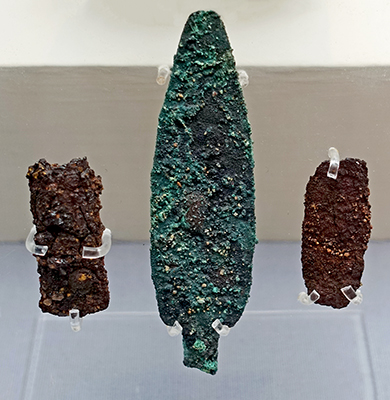
Napatan period: circa 656 BC - 270 BC
King Senkamanisken
Objects from a foundation deposit of King Harsiotef, circa 404 BC - 369 BC, including a model copper dagger, and an arrowhead and adze blade of iron.
The objects from the pyramid of Harsiotef include the earliest examples of ironwork found in a dated context in Nubia.
EA55575: Corroded iron model adze-blade, Tomb of Harsiyotef.
Length 40 mm, width 16 mm.
EA55575: Copper alloy dagger, Tomb of Harsiyotef.
Length 91 mm, width 25 mm.
EA55575: Corroded iron arrow-head, Tomb of Harsiyotef.
Length 39 mm, width 15 mm, thickness 9 mm.
Catalog: Nuri, pyramid Nu 3, EA55575
Photo: Don Hitchcock 2018
Source and text: Card with the display at the British Museum, http://www.britishmuseum.org/, © Trustees of the British Museum, CC BY-NC-SA 4.0
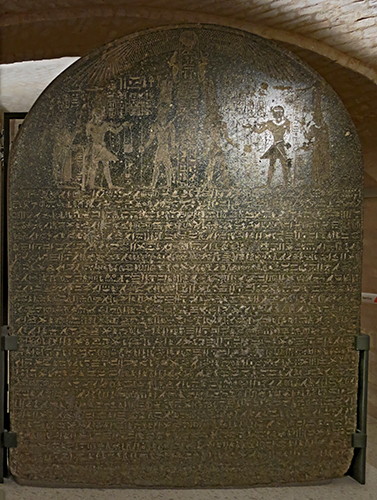
Meroitic Period: 270 BC to 350 AD
King Nastasen
Stela: King Nastasen and his mother in front of the god Amon.
Circa 330 BC.
Nastasen Ankhkhare was a king of the North African Nubian civilisation of Kush (335 - 315/310 BC) at Meroë. According to a stela from Dongola his mother was named Queen Pelkha, his spouse was Queen Sakhmakh and his father may have been King Harsiotef. His successor was Aryamani.
Napata, Gebel Barkal (Sudan)
Granite.
Catalog: ÄM 2268
Photo: Don Hitchcock 2015
Source: Display, Staatliche Museen zu Berlin, Neues Museum, Germany
Text: © Card at the Staatliche Museen zu Berlin (CC BY-NC-SA 3.0 DE)
Additional text: Welsby (1998) via Wikipedia.
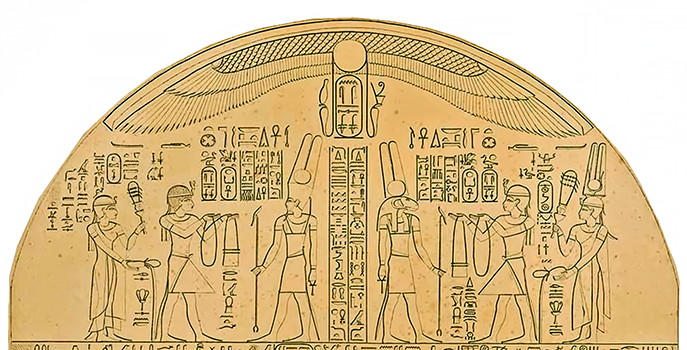
Meroitic Period: 270 BC to 350 AD
King Nastasen
Stela: King Nastasen and his mother in front of the god Amon.
Circa 330 BC.
King Nastasen accompanied by his mother Queen Pelkha (left) and his wife Queen Sakhmakh (right). (From Lepsius Denkmahler)
The 163 cm high granite stela was found at New Dongola and is now in the Berlin Museum. Originally it was most likely placed in the Amun temple of Jebel Barkal. In the upper part appear the pictures and name of his mother Pelkha and his wife Sekhmakh, next to the king.
During his reign, Nastasen defeated an invasion of Kush from Upper Egypt. Nastasen's monument calls the leader of this invasion Kambasuten, a likely local variation of Khabbash. Khabbash was a local ruler of Upper Egypt who had campaigned against the Persians around 338 BC. His invasion of Kush was a failure, and Nastasen claims to have taken many fine boats and other booty during his victory.
In the years 1842 to 1845 Carl Richard Lepsius carried out on behalf of his majesty the King of Prussia Friedrich Wilhelm IV a scientific expedition to Egypt. The results were summarised by him in the large set of volumes 'Monuments of Egypt and Ethiopia', which appeared in the years 1849-1859.
The set comprises 12 volumes divided into 6 sections.
Catalog: ÄM 2268
Photo: Lepsius Denkmahler
Text: Wikipedia.
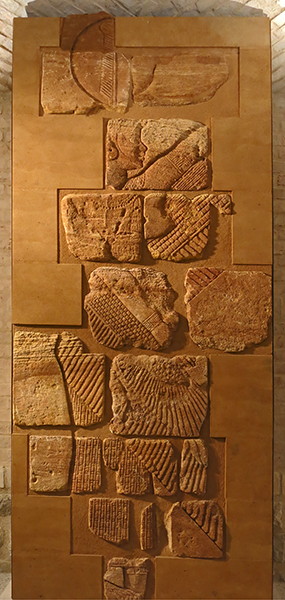
Meroitic Period: 270 BC to 350 AD
Winged Isis from the wall decoration of a temple.
Meroitic, Amanikarekarem, circa 100 AD.
Naga / Naqa (Sudan) Temple 200.
Amanikhareqerem was a King of Kush who ruled towards during the 2nd century AD or possibly earlier. Until recently not much was known about Amanikhareqerem. His name only appeared on two ram figures and an object found at Napata. Welsby (1998) places Amanikhareqerem after King Aritenyesbokhe and before King Teritedakhatey.
In recent years new excavations at Naqa provided more evidence for him. In 1998, a sandstone medallion with his name was found and recently a temple decoration with his name was excavated at the same place. The new evidence points to a date in the 1st century AD for this ruler and not in the 2nd century AD as previously thought.
Naga is situated about 110 kilometres northeast of Khartoum and 30 kilometres east of the Nile, on the banks of Wadi Awateib which formed a major trade route in antiquity. Naga houses some of best preserved relics of the Meroitic period (300 BC to 350 AD).
Sandstone.
On loan from the Sudan National Museum, Khartoum.
Photo: Don Hitchcock 2015
Source: Display, Staatliche Museen zu Berlin, Neues Museum, Germany
Text: © Card at the Staatliche Museen zu Berlin (CC BY-NC-SA 3.0 DE)
Additional text: Welsby (1998) via Wikipedia, and https://www.discoversudan.de/en/travel/sudan/locations/naga
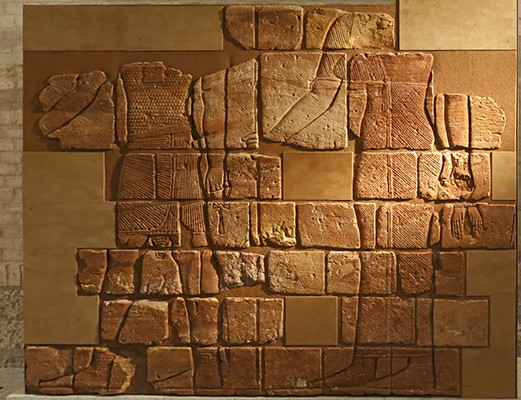
Meroitic Period: 270 BC to 350 AD
The goddess Amesemi and a male god from the wall decoration of a temple.
Meroitic, Amanikarekarem, circa 100 AD.
Naga (Sudan) Temple 200, Sandstone.
On loan from the Sudan National Museum, Khartoum.
Photo: Don Hitchcock 2015
Source: Display, Staatliche Museen zu Berlin, Neues Museum, Germany
Text: © Card at the Staatliche Museen zu Berlin (CC BY-NC-SA 3.0 DE)
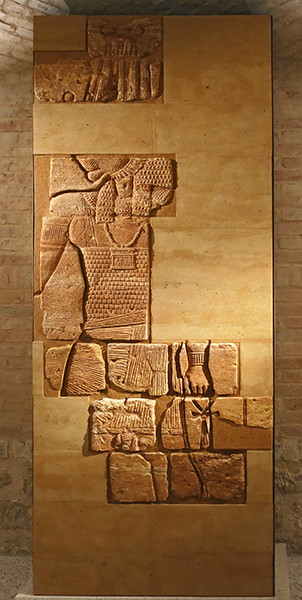
Meroitic Period: 270 BC to 350 AD
Lion Headed god Apedemak from the wall decoration of a temple.
Meroitic, Amanikarekarem, circa 100 AD.
Naga (Sudan) Temple 200, Sandstone.
On loan from the Sudan National Museum, Khartoum.
Photo: Don Hitchcock 2015
Source: Display, Staatliche Museen zu Berlin, Neues Museum, Germany
Text: © Card at the Staatliche Museen zu Berlin (CC BY-NC-SA 3.0 DE)
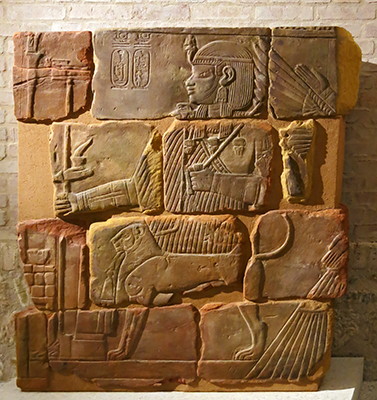
Meroitic Period: 270 BC to 350 AD
King Amanitenmomide
Relief wall of a chapel: King Amanitenmomide protected by the goddess Isis.
First Century AD, Meroë, Pyramid N17, Sandstone.
Catalog: ÄM 2261
Photo: Don Hitchcock 2015
Source: Display, Staatliche Museen zu Berlin, Neues Museum, Germany
Text: © Card at the Staatliche Museen zu Berlin (CC BY-NC-SA 3.0 DE)
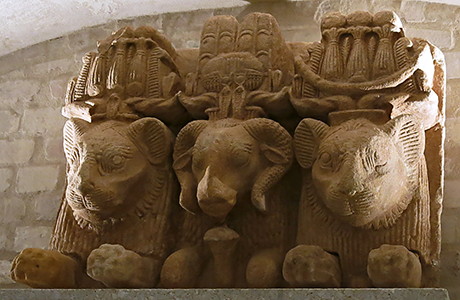
Meroitic Period: 270 BC to 350 AD
Architrave
Architrave with two lion-gods and the god Amon as a ram.
Circa 200 AD, Musawarat es-Sufra (Sudan), Sandstone.
Musawarat es-Sufra is 180 km northeast of Khartoum, 20 km north of Naqa and approximately 25 km south-east of the Nile.
Catalog: ÄM 24300
Photo: Don Hitchcock 2015
Source: Display, Staatliche Museen zu Berlin, Neues Museum, Germany
Text: © Card at the Staatliche Museen zu Berlin (CC BY-NC-SA 3.0 DE)
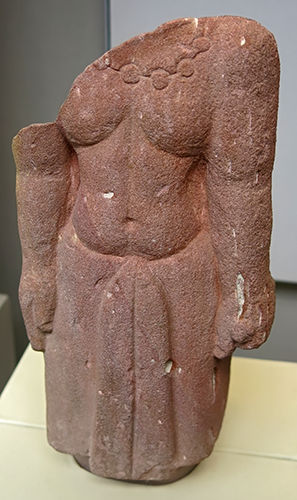
Meroitic Period: 270 BC to 350 AD
Torso
Torso of a pink sandstone male figure wearing a kilt and incised necklace, from a Meroitic Cemetery at Faras.
Height 225 mm, width 110 mm, depth 90 mm.
Condition incomplete - head, legs and much of the back has been lost.
Catalog: Sandstone, Faras, Meroitic Cemetery, EA51573
Photo: Don Hitchcock 2015
Source: Original, British Museum
Text: Card with the display at the British Museum, © Trustees of the British Museum, CC BY-NC-SA 4.0, http://www.britishmuseum.org/
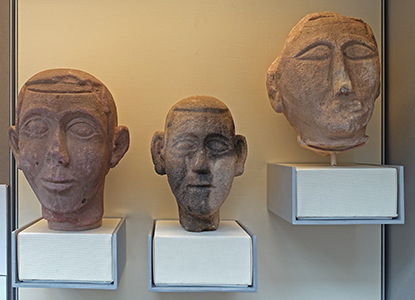
Meroitic Period: 270 BC to 350 AD
Kushite sculpture
Later Kushite (Meroitic) sculpture had a distinctive style combining pharaonic Egyptian, Graeco-Roman and sub-Saharan African elements.
The sandstone statue above and these heads from three Ba-statues, which represent one form of the deceased soul, illustrate the typical jewellery, clothing and hairstyles of the period.
The simplification of the body and the prominence given to the eyes is characteristic of Meroitic sculpture.
EA51573: (previous image, above): sandstone male figure wearing a kilt and incised necklace.
EA51575: (left) Human head from a sandstone ba-bird figure; socket in the top.
Height 145 mm, width 120 mm, depth 130 mm.
EA74200: (centre) Sandstone head from a Meroitic Ba-bird figure, with crude carving of the features. Hole in the top for attachment of a headdress.
Height 123 mm, length: 96 mm, width 89 mm.
EA72185: (right) Sandstone carved head of a Ba figure broken off at the neck and damaged over the whole top of the head. A small conical hole had been drilled into the top of the head. Features of the face flattened, prominent lentoid eyes, lips damaged.
Qasr Ibrim (Nubia), Height: 129 mm, thickness 98 mm, width 106 mm, hole depth 16 mm.
Catalog: Faras, Meroitic cemetery, tomb 1/85, EA51573, EA51575, Qasr Ibrim EA72185, Egypt EA74200
Photo: Don Hitchcock 2018
Text: Card at museum display, http://www.britishmuseum.org/, © Trustees of the British Museum
Meroitic Period: 270 BC to 350 AD.
Ba-bird statue
Female Ba-bird statue, 200 BC - 350 AD
A characteristic later Kushite (Meroitic) sculpture, this statue shows a part-human, part-bird figure. The creature embodied the Egyptian concept of the Ba, one of the forms of the soul of the deceased.
Often made of sandstone, such statues were set up outside the tombs of high-ranking individuals in Lower Nubia (southern Egypt and northern Sudan). This particular example presumably came from the tomb of a woman as it is in female form.
Height 458 mm.
Catalog: EA53965
Photo: Don Hitchcock 2015, 2018
Source: Original, British Museum
Text: Card at museum display, http://www.britishmuseum.org/, © Trustees of the British Museum
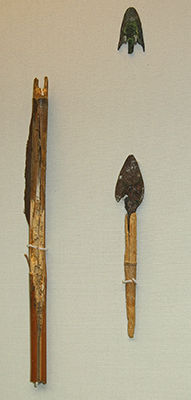
Meroitic Period: 270 BC to 350 AD
Kushite archery
Kushite archery, 300 BC - AD 350
The army was an important part of Kushite society, and rulers were often depicted holding weapons and wearing armour. Weaponry was also frequently buried with the dead, including iron arrowheads and stone 'thumb rings'.
The Kingdom of Kush was an ancient Nubian kingdom situated on the confluences of the Blue Nile, White Nile and River Atbara in what is now the Republic of Sudan. The Kushite era of rule in Nubia was established after the Bronze Age collapse and the disintegration of the New Kingdom of Egypt, and it was centered at Napata in its early phase.
Catalog: These may be some of: EA51508 (tomb 1/2648), EA51602 (tomb 1/2648/7) Gasr Ibrim, EA71841 and EA72123
Photo: Don Hitchcock 2015
Source: Original, British Museum
Text: Card at museum display, © Trustees of the British Museum
Additional text: Wikipedia
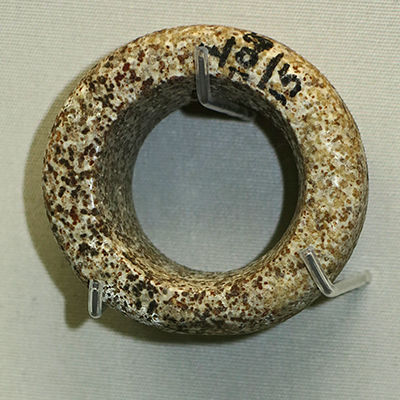
Meroitic Period: 270 BC to 350 AD
Marble thumb ring
Kushite marble thumb ring, 300 BC - AD 350
Archers wore these to protect their thumb, so they could draw the bowstring further increasing the tension to make the arrow fly further and faster.
Diameter 35 mm.
After King Kashta invaded Egypt in the 8th century BC, the Kushite emperors ruled as pharaohs of the Twenty-fifth dynasty of Egypt for a century, until they were expelled by the Assyrians under the rule of Esarhaddon. During Classical antiquity, the Kushite imperial capital was at Meroe. In early Greek geography, the Meroitic kingdom was known as Aethiopia. By the 1st century AD, the Kushite capital had been captured by the Beja Dynasty, who tried to revive the empire.
Catalog: EA51521 (tomb 1087)
Photo: Don Hitchcock 2015
Source: Original, British Museum
Text: Card at museum display, © Trustees of the British Museum
Additional text: Wikipedia
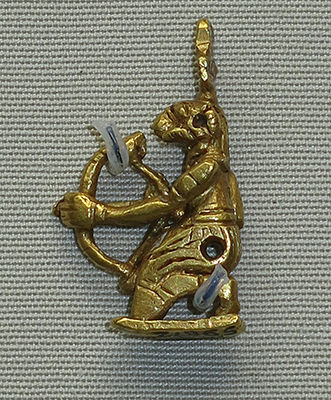
Meroitic Period: 270 BC to 350 AD
Gold amulet
Archer amulet, 300 BC - AD 350
This gold amulet of a kneeling ram-headed archer probably shows the Egyptian and Kushite god Amur.
The Kushite kingdom with its capital at Meroë persisted until the 4th century AD, when it weakened and disintegrated due to internal rebellion. The Kushite capital was eventually captured and burnt to the ground by the Kingdom of Axum.
Catalog: EA59872
Photo: Don Hitchcock 2015
Source: Original, British Museum
Text: Card at museum display, © Trustees of the British Museum
Additional text: Wikipedia
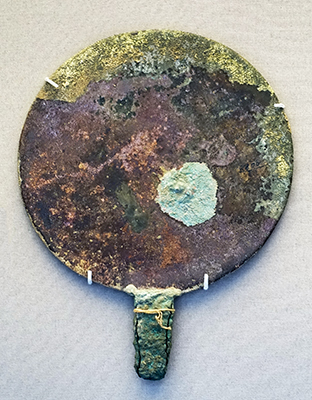
Meroitic Period: 270 BC to 350 AD
Bronze Mirror.
Circular bronze mirror with a tang for insertion into the handle(now missing).
Length 182 mm, width 144 mm, thickness 10 mm.
Catalog: Faras, Meroitic cemetery, tomb 1/2800, EA51513
Photo: Don Hitchcock 2018
Text: Card at museum display, http://www.britishmuseum.org/, © Trustees of the British Museum
Meroitic Period: 270 BC to 350 AD
Ankh
Light green faience votive offering in form of the hieroglyph ankh 'life', constructed out of three joining ancient fragments with modern infill.
1. Handle element inscribed on both sides of shaft with epithets and cartouches of Aspelta.
2. Cross bar documented as from the 1911 excavation of Palace 294 at Meroe, cachette find 32.
3. Loop top, perhaps part of find 35 from the same cachette.
Collected at Meroe.
Height 230 mm, width 97 mm, Accession Number LDUCE-UC43949
Photo: Don Hitchcock 2018
Source: Original, Petrie Museum, London, England
Text: Card / online catalogue, the Petrie Museum, © 2015 UCL. CC BY-NC-SA license
Meroitic Period: 270 BC to 350 AD
Cupid
Bronze figure of a winged cupid stepping forward with the right leg, and right arm raised.
From Meroe, among a group of bronze objects 'on original floor' of structure 924 in the site plan from the excavations directed by John Garstang. The function of the building is uncertain, but it may form one chamber within the largest enclosure, the 'Royal Enclosure'.
Height 59 mm, length 40 mm, Accession Number LDUCE-UC43961
Photo: Don Hitchcock 2018
Source: Original, Petrie Museum, London, England
Text: Card / online catalogue, the Petrie Museum, © 2015 UCL. CC BY-NC-SA license
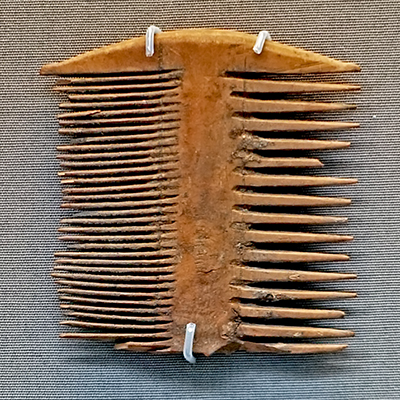
Meroitic Period: 270 BC to 350 AD
Comb
This fragment of a wooden comb was found inside a house within the fortress at Qasr Ibrim. The comb has coarse teeth along one side and fine teeth on the other. Lentoid in section.
Length 53 mm, thickness 8 mm, width 52 mm.
Catalog: Qasr Ibrim, house, EA72125
Photo: Don Hitchcock 2018
Text: Card at museum display, http://www.britishmuseum.org/, © Trustees of the British Museum
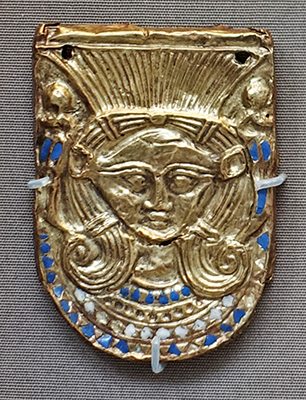
Meroitic Period: 270 BC to 350 AD
Kushite jewellery
This gold foil plaque depicts the head of the Egyptian goddess Hathor. It is inlaid with blue enamel.
Plaque bearing repoussé Hathor-head. Gold foil inlaid with blue enamel over glazed composition backing.
Height 50 mm
Catalog: EA15031
Photo: Don Hitchcock 2018
Text: Card at museum display, http://www.britishmuseum.org/, © Trustees of the British Museum
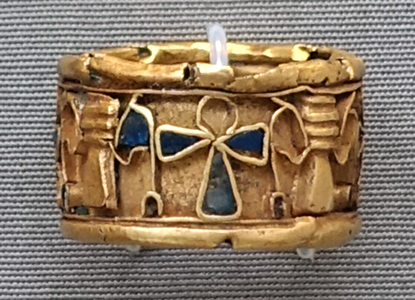
Meroitic Period: 270 BC to 350 AD
Kushite jewellery
This gold finger ring is inlaid with lapis lazuli and decorated with Egyptian symbols - the Ankh, Was sceptre and Djed pillar.
Diameter 21 mm, thickness 12 mm.
Catalog: EA54533
Photo: Don Hitchcock 2018
Text: Card at museum display, http://www.britishmuseum.org/, © Trustees of the British Museum
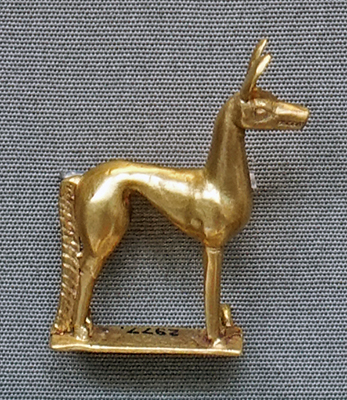
Meroitic Period: 270 BC to 350 AD
Jackal amulet
From 50 BC - 1 BC. Probably representing a jackal, this Meroitic cast gold amulet is very similar in style to Egyptian depictions of jackals. It may originally have been part of a hoard of jewellery found in the pyramid of Queen Amanishakheto at Meroë in northern Sudan.
Meroitic amulet of cast gold, long-eared, long-tailed animal identified as a canine but with hooves. The suspension loops are on the left side, two on the body, and two on the base, said to be from Cyrene.
Height 31 mm.
Catalog: Gold, Meroë or Cyrene, EA68502
Photo: Don Hitchcock 2018
Text: Card at museum display, http://www.britishmuseum.org/, © Trustees of the British Museum
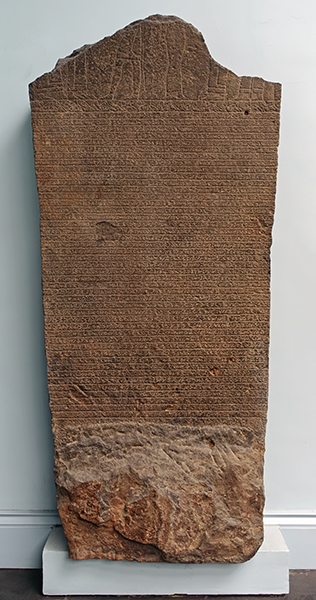
Meroitic Period: 270 BC to 350 AD
Sandstone stela
Sandstone stela from the late first Century AD inscribed in Meroitic script.
This is one of two large stelae discovered in a ruined building south of Meroë. At the top, above a row of bound captives, are the remains of a double scene showing two royal personages standing before a god and goddess. The rest of the space is occupied by an inscription in cursive script which is one of the longest known monumental texts in Meroitic.
It is largely indecipherable but the names of Queen Amanirenas and Prince Akinidad are recognisable. These rulers lived during the late 1st century BC, at the time of Meroë's conflict with the Romans. It has therefore been suggested that the stela was set up to commemorate the Meroitic raid on the First Cataract region under Roman occupation in 24 BC.
Sandstone stela with forty-five rows of incised cursive Meroitic inscription mentioning Queen Amanirenas and King Akinidad; above is incised scene of royal figures and deities (only the legs are visible).
Height 2365 mm, width 1015 mm.
Curator's remarks:
In 1909 John Garstang of the University of Liverpool began excavations in Sudan at Meroë, the capital of the kingdom of Kush; during the 1914 season he also excavated at Hamadab, 2 km to the south. There his team unearthed the remains of a small temple with a doorway flanked by two stelae, both in situ. The stela standing on the left of the doorway was given to the British Museum, while the other was left in place.
The stela consists of a single block of ferruginous sandstone that tapers a little towards the base. The lower part is only very roughly dressed and was set into the ground. Above this is an inscription on the front face, topped by a lunette relief panel, only the lower part of which remains. The panel depicts Queen Amanirenas and Prince Akinidad facing a god, probably Amun, on the left; on the right the same individuals appear before a goddess, perhaps Mut, who holds an ankh (the hieroglyph denoting 'life'). Beneath the base line is a narrow frieze depicting bound prisoners.
The lower part of the block is divided by horizontal incised lines framing the inscription, forty-two lines of text in what is known as Meroitic cursive script (although the script is not actually cursive, since the letters are not joined). The Meroitic alphabet consists of fifteen consonants, four vowels and four syllabic characters. Although the sound equivalents of the characters are known and one can therefore 'read' the text, its meaning is far from clear. Meroitic, the indigenous language of the kingdom of Kush at least from the early first millennium BC until the fourth century AD, is one of the few ancient languages which cannot be deciphered. Close relations to the language are lacking, as are bilingual inscriptions, apart from a few very short texts.
This is particularly unfortunate in the case of this inscription. We know from Roman sources that in 24 BC the Kushites invaded Egypt, incorporated only six years earlier into the Roman empire, and carried off imperial statues from Syene (Aswan), probably including the famous head of Augustus in the British Museum (registration number GR 1911,0901.1).
Roman historians provide a detailed account of the aftermath of the raid, the defeat of the Kushite army, its flight, and ultimately the sacking of the Kushite religious centre at Napata near the Fourth Nile Cataract. Many scholars think that this inscription records the campaign. The names of Amanirenas and Akinidad can be read, and are thought to be contemporary with these events. Among the words on the inscription is 'Areme', thought by most experts to be the Meroitic term for Rome. This inscription may hence be of immense interest and might allow us to re-evaluate this first clash between two of the major powers of the ancient world, known for over 2 000 years solely from Roman imperial propaganda. The decipherment of Meroitic is eagerly awaited.
Catalog: Sandstone, Hamadab (Nubia), EA1650
Photo: Don Hitchcock 2018
Source: Original, British Museum
Text: Card at museum display, http://www.britishmuseum.org/, © Trustees of the British Museum
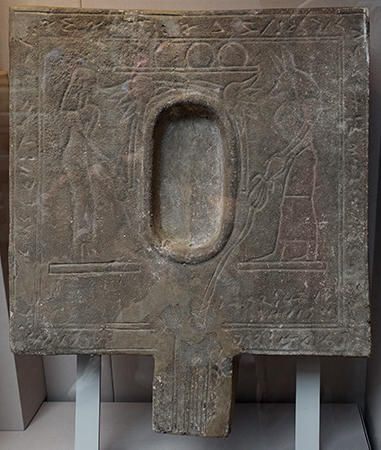
Meroitic Period: 270 BC to 350 AD
Sandstone offering table, first century AD
Sandstone offering table of a high official, 1st century AD, from Faras.
Faras was a major city in Lower Nubia. The site of the city, on the border between modern Egypt and Sudan at Wadi Halfa Salient, was flooded by Lake Nasser in the 1960s and is now permanently underwater.
Above the central well are carved lotuses and loaves of bread. To each side stand figures of the Egyptian deities Nephthys and Anubis, pouring libations for the deceased. The text in cursive script begins with the standard invocation to Isis and Osiris.
The owner was a pesato, an official who functioned as a viceroy in the north of the Meroitic kingdom, with his base at Faras.
Length 610 mm, width 520 mm.
Catalog: Sandstone, Faras, EA1576
Photo: Don Hitchcock 2018
Source: Original, British Museum
Text: Card at museum display, © Trustees of the British Museum
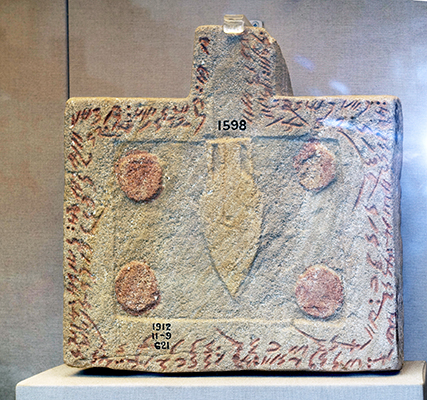
Meroitic Period: 270 BC to 350 AD
Sandstone offering table
Sandstone offering table, first to third century AD, from Faras.
Low relief representation of amphora and four loaves; cursive Meroitic text around edge; detail painted red and yellow.
Length 305 mm, width 280 mm.
Catalog: Sandstone, painted, Faras, EA1598
Photo: Don Hitchcock 2018
Source: Original, British Museum
Text: Card at museum display, © Trustees of the British Museum
Meroitic Period: 270 BC to 350 AD
Ostraca
Ostraca inscribed in cursive Meroitic, 1st-3rd century AD, from Qasr Ibrim.
Ostraca are fragments of broken pottery which were used for making informal notes and sketches.
Catalog: Qasr Ibrim, EA67972, EA71846, EA71847, EA71848
Photo: Don Hitchcock 2015
Source: Original, British Museum
Text: Card at museum display, © Trustees of the British Museum
References
- Adams B., Porat N. , 1996: Imported Pottery with Potmarks from Abydos, In: J. Spencer (ed.), Aspects of Early Egypt, London: British Museum Press, p. 98-107.
- Anderson W. , 1989: Badarian Burials: Possible Indicators of Social Inequality in Middle Egypt During the Fifth Millennium B.C., Department of Anthropology McGill University, Montreal April, 1989, a thesis submitted to the Faculty of Graduate Studies and Research in partial fulfilment of the requirements for the degree of Master of Arts
- Böhme I. , 2013: Die privaten Sarkophage des Neuen Reiches – ein Vorbericht, Göttinger Orientforschungen IV Ägypten 54, DAI Kairo - German Archaeological Institute Cairo, preliminary paper for a PhD thesis.
- Breasted J. , 1903: Jewellery from the Tombs of Egypt, The Biblical World, Vol. 22, No. 1 (Jul., 1903), pp. 64-66, published by The University of Chicago Press, http://www.jstor.org/stable/3140533.
- Brunton G., Caton-Thompson C., 1928: The Badarian civilization and predynastic remains near Badari, (British School of Archaeology in Egypt and Egyptian research account : thirtieth year, 1924). 1928
- Brunton G., Morant G., 1937: Mostagedda and the Tasian Culture, British Museum Expedition to Middle Egypt, First and Second Years (1928, 1929), B. Quaritch Limited, 1937 - Egypt - 163 pages
- Caton-Thompson E., Gardner E., 1934: The Desert Fayum, Royal Anthropological Institute of Great Britain and Ireland, London, 1934.
- Cowie S., Johnson T., 2001: The Mummy in Fact, Fiction and Film, McFarland, 3 Dec. 2001 - Performing Arts - 208 pages
- Cramer M., 1936: Zeitschrift für Ägyptische Sprache und Altertumskunde, Volume 72, 1936. pp. 100ff. u. Tf. IX, 1, 2.
- David R., 2002: The Experience of Ancient Egypt, Rutledge, 9 Sep. 2002 - Social Science - 216 pages
- Davies B., 1999: Who's who at Deir el-Medina : a Prosopographic Study of the Royal Workmen's Community, Leiden : Nederlands Instituut voor Het Nabije Oosten, 1999
- Davies Norman de Garis, 1925: The Tomb of Two Sculptors at Thebes, The Metropolitan Museum of Art, Robb de Peyster Tytus Memorial Series Volume IV.
- Dodson A., Hilton D., 2004: The Complete Royal Families of Ancient Egypt, The American University in Cairo Press, London 2004
- Erman A., 1894: Life in Ancient Egypt, Courier Corporation, 1894 - History - 570 pages
- Ertman E., 2013: Gesichtseinlage von König Echnaton / Amenophis IV. aus opak-blauem Glas, Auszug und Übersetzung aus Journal of Glass Studies 2013-55, S. 13-19
- Escolano-Poveda M., 2019: Egypt’s Pharaohs welcomed summer with this fabulous festival, 20/03/20. Retrieved from: https://www.nationalgeographic.com/history/magazine/2019/05-06/ancient-egypt-royal-feast/
- García J., 2013: Ancient Egyptian Administration, BRILL, 7 Jun. 2013 - Reference - 1112 pages
- Gatto M., 2001-2002: Two Predynastic pottery caches at Bir Sahara (Egyptian Western Desert), Sahara, 13: 51 - 60
- Habicht M., 2014: Semenchkare - Phantom-König von Achet-Aton: Beitrag zur Erforschung der rätselhaften Nachfolge von Echnaton,epubli, 17 Feb 2014 - Science - 96 pages
- Harer W., 1985: Pharmacological and Biological Properties of the Egyptian Lotus, Journal of the American Research Center in Egypt, Vol. 22 (1985), pp. 49-54 Published by: American Research Center in Egypt DOI: 10.2307/40000390
- Hartwig M., 2006: A Companion to Ancient Egyptian Art, John Wiley & Sons, 23 Dec. 2014 - Literary Criticism - 624 pages
- Hodel-Hoenes S., 2006: Life and Death in Ancient Egypt: Scenes from Private Tombs in New Kingdom Thebes, Cornell University Press, 2000 - Art - 329 pages
- Holmes D., 1989: The Predynastic Lithic Industries of Upper Egypt: A Comparative Study of the Lithic Traditions of Badari, Nagada and Hierakonpolis, BAR (15) 469, Volumes I and II.
- Humphreys C., Waddington G., 2017: Solar eclipse of 1207 BC helps to date pharaohs, Astronomy & Geophysics, Volume 58, Issue 5, 1 October 2017, Pages 5.39–5.42, https://doi.org/10.1093/astrogeo/atx178, Published: 01 October 2017
- Jung M., 2012a: F. Seyfried (eds.), In the Light of Amarna. 100 years of the discovery of the Nefertiti, Berlin 2012, p. 206 (cat. No. 7).
- Jung M., 2012b: in: F. Seyfried (Hrsg.), Im Licht von Amarna. 100 Jahre Fund der Nofretete, Berlin 2012, p. 332
- Kákosy L., 1995: 'The Soter Tomb in Thebes', in S.P, Vleeming (ed.), Hundred-Gated Thebes: Acts of a Colloqium on Thebes and the Theban area in the Graeco-Roman Period, Leiden: Brill, 61- 67
- Kayser H., 1969: Ägyptisches Kunsthandwerk: ein Handbuch für Sammler und Liebhaber, Braunschweig, Klinkhardt & Biermann, 1969
- Kitchen K., 1993: Ramesside inscriptions : translated and annotated Notes and comments, 1, Ramesses I, Sethos I and contemporaries (Oxford, 1993), 2-3.
- Loret V., 1889: La Tombe de Khâ-M-Hâ, in: Gaston Maspero, in: Urbain Bouriant - Victor Loret - H. Dulac (editors), Mémoires publiés par les membres de la mission archéologique française au Caire, Tome premierFasc. 1, Paris 1889, plate 1 after page 114
- Malkowski E., 2010: Before the Pharaohs: Egypt's Mysterious Prehistory, Inner Traditions / Bear & Co, Apr 12, 2010 - History - 336 pages
- Martin G., 1991: Hidden Tombs of Memphis, Thames and Hudson, London 1991
- Maspero G., 1903: History of Egypt, Chaldea, Syria, Babylonia, and Assyria, London : Grolier Society
- Math N., 2014: Die Badarikultur, Neue Untersuchungen zu einer Kultur des 5. Jahrtausends v. Chr., angestrebter akademischer Grad Master of Arts (MA) Wien, 2014
- McKerrel H., Tylecote R., 1972: The working of copper-arsenic alloys in the Early Bronze Age and the effect on the determination of provenance, Proceedings of the Prehistoric Society, 38, pp. 209–218. doi: 10.1017/S0079497X00012111.
- Mettlen J., 2012: in: F. Seyfried (Hrsg.), Im Licht von Amarna. 100 Jahre Fund der Nofretete, Berlin 2012, p. 344 (cat. No. 126).
- Meyer-Dietrich E., 2017: Auditive Räume des alten Ägypten: Die Umgestaltung einer Hörkultur in der Amarnazeit, Brill, 9 Nov. 2017, pp. 1128.
- O'Connor D., Cline E., 2001: Amenhotep III: Perspectives on His Reign, University of Michigan Press, 2001 - History - 393 pages
- Patch D., Eaton-Krauss M., Allen S., 2011: Dawn of Egyptian Art, Jan 1, 2011 - Art, Ancient - 275 pages
- Pommerening, T., Marinova, E., Hendrickx, S., 2010: The Early Dynastic origin of the water-lily motif, Chronique d'Egypte, 85 (2010): 14-40
- Raven M., 1980: Papyrus-sheaths and Ptah-Sokar-Osiris Statues, RMO, 1980 - 296 pages
- Rawlinson H., 1867: The Assyrian Canon Verified by the Record of a Solar Eclipse, B.C. 763, Athenaeum, #2064 660 (18 May)
- Riemer H., Kuper R., 2000: 'Clayton rings': enigmatic ancient pottery in the Eastern Sahara, Sahara, 12: 91-100.
- Schneider H., Raven M., 1981: De Egyptische Oudheid, Rijksmuseum van Oudheden, Leiden.
- Schneider H., Raven M., 1999: Life and Death Under the Pharaohs, Rijksmuseum van Oudheden, Leiden.
- Schoske S., Wildung D., 2013: Das Münchner Buch der Ägyptischen Kunst, München 2013
- Seyfried F., 2012: Im Licht von Amarna. 100 Jahre Fund der Nofretete, Berlin 2012, p. 322.
- Shaw I., 2000: The Oxford History of Ancient Egypt, Oxford University Press, USA, 31 Aug. 2000 - History - 528 pages
- Smith H., 2006: The Fortress of Buhen: The Inscriptions, (London, 1976), 118-19, no. 1511, pls. XXV/1, LXXIV/2-3
- Spanel D., 2001: in Redford D. (ed.), The Oxford Encyclopedia of Ancient Egypt, vol. 1, Oxford University Press, 2001
- Strudwick N., 2006: Masterpieces of Ancient Egypt, University of Texas Press, 1 Nov. 2006 - Social Science - 352 pages
- Taylor J., 1999: Studies in Egyptian antiquitie, British Museum, Occasional Paper 123 (1999)
- Taylor J., 2010: Journey Through the Afterlife: Ancient Egyptian Book of the Dead, Harvard University Press, 2010 - History - 320 pages
- Verner M., 2014: From The Pyramids, Atlantic Books Ltd, 6 Nov. 2014 - History - 300 pages
- von Zabern P., 1980: Tutanchamun in Köln, Kölnisches Stadtmuseum
- Wallert I., 1967: Der verzierte Löffel. Seine Formgeschichte und Verwendung im Alten ÄgyptenÄgyptologische Abhandlungen, 16,Wiesbaden: Harrassowitz.
- Weber A., 2012: in: F. Seyfried (ed.) Im Licht von Amarna. 100 Jahre Fund der Nofretete, Berlin 2012, S. 226 (Kat.-Nr. 18). Atlantic Books Ltd, 6 Nov. 2014 - History - 300 pages
- Wegner E., 2012: in: F. Seyfried (Hrsg.), Im Licht von Amarna. 100 Jahre Fund der Nofretete, Berlin 2012, p. 348 (cat. No. 129).
- Wilkinson T., 2002: Early Dynastic Egypt, Routledge, 11 Sep. 2002 - Social Science - 440 pages
Back to Don's Maps
 Back to Archaeological Sites
Back to Archaeological Sites
 Back to Egypt Index Page
Back to Egypt Index Page
